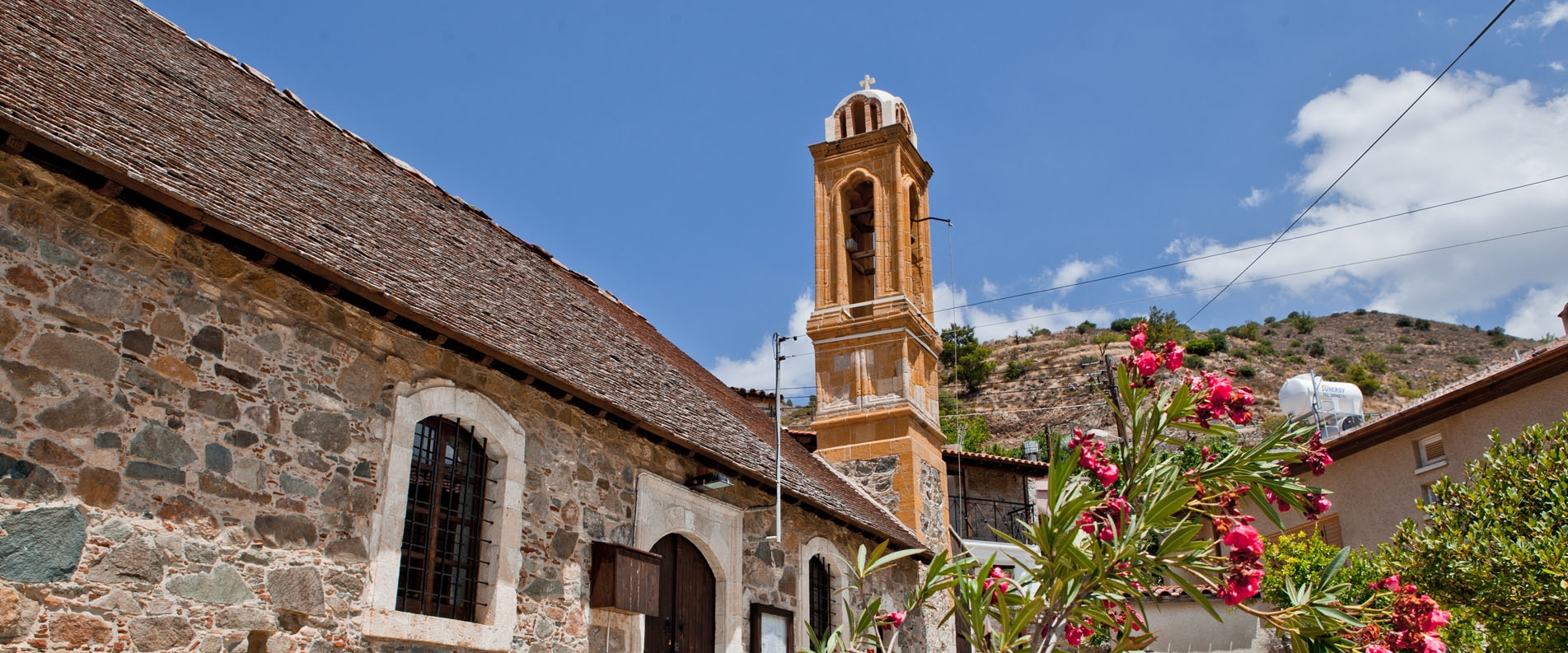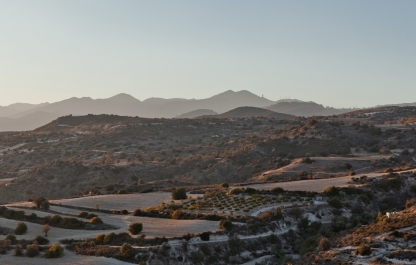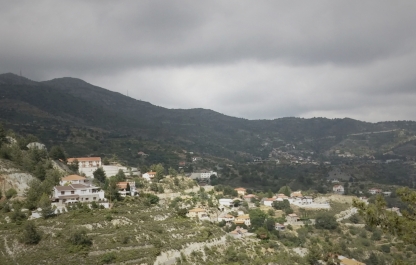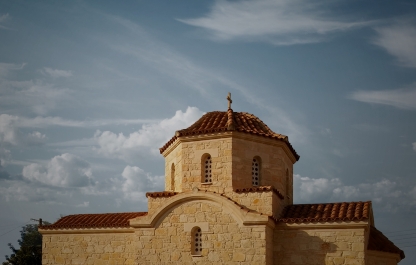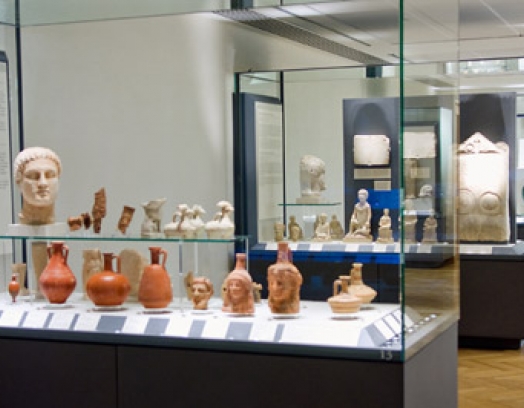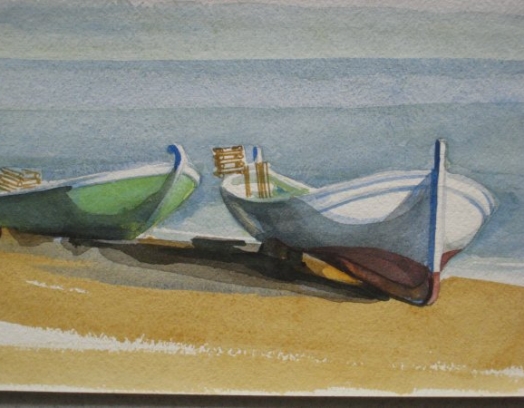Sometimes when the summer heat is especially unbearable, you feel the need to escape into the Troodos Mountains, where you can take a break from beach life and the tumult of the city.
Mountain villages will provide a great respite, revealing something new while at the same time allowing you a glimpse of the past.
Today we are going to travel outside of Nicosia, deeper into the mountains and visit three different villages.
Meniko
This village is located near the Akaki River. Its population is 980 residents. Even though the first written records of Meniko date back to the Middle Ages, the village actually appeared a long time before that during the times of antiquity. Archeologists have uncovered remains of household appliances and a small pagan temple (circa 6th century BC) in the vicinity of the village. The temple was dedicated to Baal Hammon, one of the chief gods of Carthage and a patron of fertility and vegetation. There are two interesting theories behind the emergene of the village.
One of them claims that the name «Μένοικο» comes from the Greek work «οίκος», which means «home» and dates back to the Byzantine times.
According to another theory, the village was named after Menikeas, the father of Creonte, who was the ruler of Thebes in Greek Mythology.
As soon as you arrive in Meniko, you feel like you’ve traveled back in time. The narrow streets and the small main square, which houses the Church of St. Kyprianos and Youstina — one of the major churches in Cyprus — give the village a particularly non-tourist look.
Despite the fact that the local church is known across the entire island, many of the tourists and pilgrims are usually brought here as part of larger sightseeing bus tours.
The legend of Kyprianos and Youstina
During the times of antiquity, when Emperor Decius ruled the Roman Empire (249-251 BC), there was a famous philosopher and sorcerer Kyprianos, who lived in Antioch. Kyprianos was taught by his parents to worship pagan gods.
A young woman, named Youstina, whose parents were also pagans, lived in the same city as Kyprianos. One day Youstina was sitting by her window, when she heard someone outside speak of Jesus Christ. The words had a great impact on her and she started secretly going to a Christian church. Eventually, Youstina not only converted to Christianity, but also convinced her parents to do the same.
Then a young nobleman, named Aglaid, met Youstina at the church entrance and fell in love with the young woman. He tried to win her over, but Youstina rejected him. Aglaid was determined to make Youstina his wife and sought the magic help of Kyprianos.
Kyprianos tried very hard to sway Youstina, but failed each time. He saw that there was great power hidden inside her that could not be overcome with magic. Kyprianos was so amazed by what he saw that he decided to also convert to Christianity.
He came to the local Christian bishop named Anthim and asked to be baptized. Soon after that he became a priest himself and then a bishop. Meanwhile, Youstina became a deaconess at a women’s monastery. But some of the locals conspired to slander Kyprianos and Youstina before the emperor and the two were thrown into a prison cell to force them to abandon Christianity and return to paganism. Kyprianos and Youstina didn’t yield and were then sent to see Emperor Claudius (268-270 BC), who ordered the two to be executed. In 268 they were executed together with a person named Theoktist, who upon seeing their martyrdom came to believe in Christ.
Their bodies were brought to Rome and buried by a devout woman named Ruthina. Legend has it that many sick and tormented people, who came to their graves, were then healed.
In the 18th century their remains were brought to Cyprus and placed in a small early Byzantine basilica in Meniko.
The church in Meniko
«The Tale of the Sweet Land of Cyprus», written by Leontios Machairas (1380 – early 14th century) states that the King of Cyprus Peter I de Luisignan (1328 – 1369) was healed thanks to the two Saints’ relics. He was suffering from severe fever when he was advised by his court to visit Meniko and drink from the holy well located inside the church. The empereor felt better and ordered the church to be taken apart and built anew. The new church was much bigger and had a special space, where the miracle-working relics were stored.
Since that time and up until the present day the church in Meniko has been known as a place of Divine Protection, where the relics of St. Kyprianos and St. Youstina together with the faith of the people provide protection from witchcraft and heal those, who are sick.
The church is a two-aisle basilica that features two apses (one is semicircular and one is faceted) and a bell tower. It stands on a small plot of land and has its own sacred spring.
The red gate located on the west side is the main entrance into the church. There is also a northern and a sourthern entrance that are both decorated with carved stones. As you enter the main part of the church you pass by engravings depicting a lion and a horseman.
You will then see a church shop that sells religious literature, candles (the small ones are available by donation and the large ones cost 2 euros) and icons.
The church has an old Frankish choir. As soon as you step inside and see the fresco-covered walls that have darkened with time, you can tell that the church is not only a sacred place, but also a site of important historical and cultural value.
The altar has been decorated with a Hodegitria, while the second apsis depicts the Veneration of the True Cross.
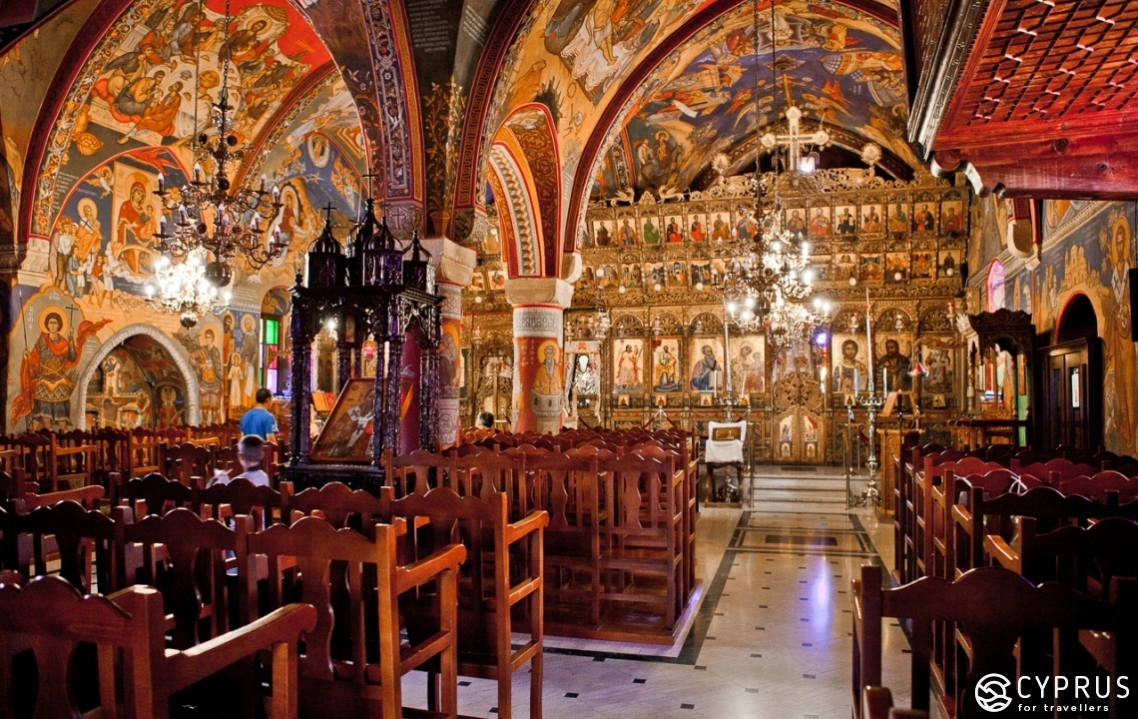
To the right of the iconostasis (which dates back to 1818, while the icons of Christ and the Virgin Hodegitria date back to the 16th century) is the icon of St. Seraphim Sarovsky and to the left of it is the image of Matrona of Moscow.
The apsis that is located across from the carved iconostasis bears an inscription in Church Slavonic that reads: «In honor of the servants of God, Alexandra, Elena, Vera, Anatoly, Anna, Svytoskava, Elena Paraskevi and Svyatoslav Hareeva».
One of the columns (located to the right of the iconostasis) reveals a small fragment of an inscription in Greek that peeks out from under a more recent fresco. It is difficult to make out what it says, but it is part of the ongoing research work at the church.
If you look around carefully, you will come across a few such fragments.
The style of the new frescos belongs to the local school of fresco painting. Cypriot painters continue decorating the churches on the island (both old and new) to this day.
Incidentally, the new frescos were painted only after 2010. It seems that the wall art that preceded it has only survived in fragments the way it usually happens in major historic buildings in Cyprus.
According to the research by Giorgos Karouzis (Strolling around Cyprus, Nicosia, City and District, Nicosia 2001), this church is one of the few that have been dedicated to St. Kyprianos and St. Youstina. The church celebrates its dedication day on October 2. On this day herds of religious pilgrims travel here from the entire island to worship the saints and visit the village market, which is one of the largest in Cyprus.
In recent years many religious pilgrims have been coming here from abroad. Church workers speak different languages and can help you with any questions you have. Tourists can borrow a scarf and a long skirt, in case you didn't bring proper clothing to wear at church.
The church is open from 8am to 1pm and then from 4om to 6pm (in the summer) and from 9am to 12.30pm and from 3pm to 5pm (in the winter). Father Savvas and Father Kyprianos perform religious services during these hours.
Address: Agios Andronikos
If you visit the Church of Agios Kyprianos during these hours, you will have a chance to venerate the Saints’ relics as well as the icon of St. Kyprianos, painted in 1613 by an icon painter named David. Its silver riza was created in 1800 by a famous master named Ioannis Cornaros.
Behind the church there is a small parking lot (the church square is a very busy spot, so sometimes you will have to spend time finding a parking space).
The churches nearby
Just like many other Cypriot villages, Meniko is home to several churches, both old and new.
In addition to Agios Kyprianos and Youstina, you can also visit the chapel of Agios Georgios. Its iconostasis features the royal doors from a 16th century iconostasis from the Church of Agios Kyprianos and Youstina.
If you travel southeast of the village, you will also come across the church of St. Andronik, the church of St. Athanasius [1] (built in the typical manner of the Troodos churches known as «tis Stegis», meaning «high roof») and a small Panagia church, which is particularly treasured by locals thanks to its miracle-working icon of the Virgin.
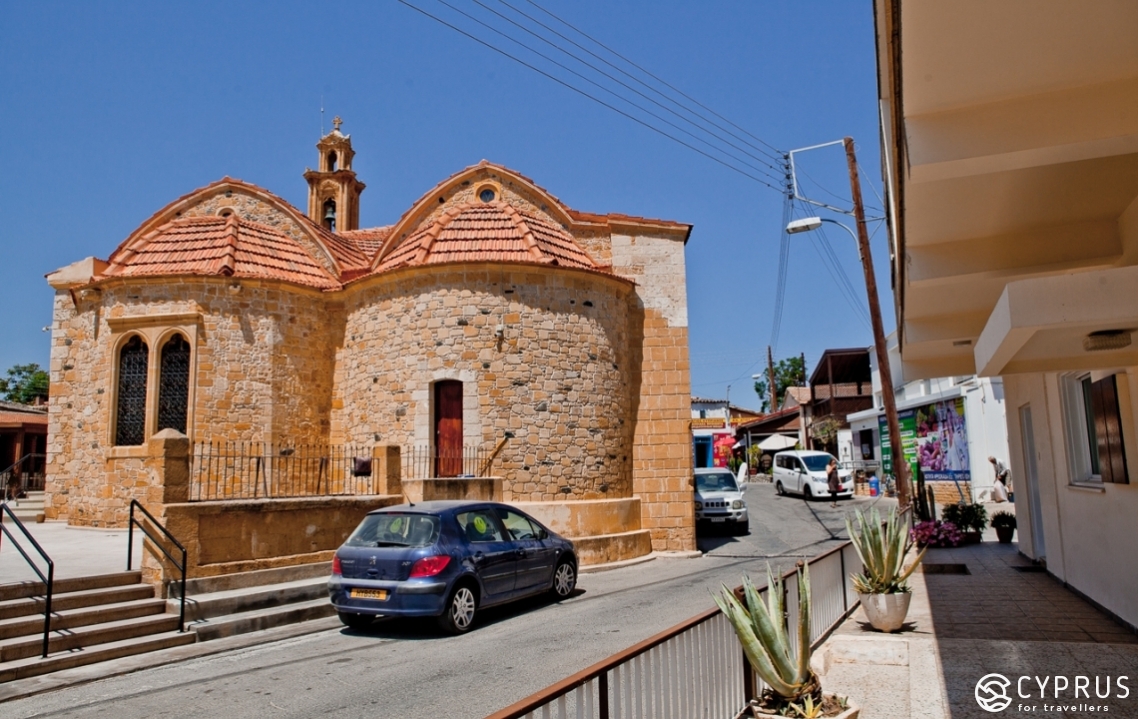
What else is known about this village? Meniko has been growing and developing together with the rest of the country. Some of the recent improvements include: the expansion of the Nicosia-Troodos route that passes through Meniko, the construction of a concert hall, as well as improvements in parking and the local football stadium. Some of the future plans include the construction of two bridges and a water reservoir, the making of two parks, lighting the village square, paving the streets and naming them after the fallen victims of 1955, fixing some of the roads and paving the sidewalks and restoring the antique wells.
-
Agriculture is one of the primary occupations among local residents. Most of the land is used to cultivate grouds, but citrus plants, olive trees and many other types of grains and vegetables are also harvested here.
Meniko also boasts a few ancient olive trees that researchers say have witnessed the Frankokratia.
The beautiful eucalyptus trees, however, are a relatively recent addition. They were planted during the 1930-1940s, as a result of an effort to improve the appearance of the village. As for the local fauna, the area is home to several reptile species and wild birds (most of whom are partridges and European turtle doves). Lifestock includes oxes, pigs, sheep and goats.
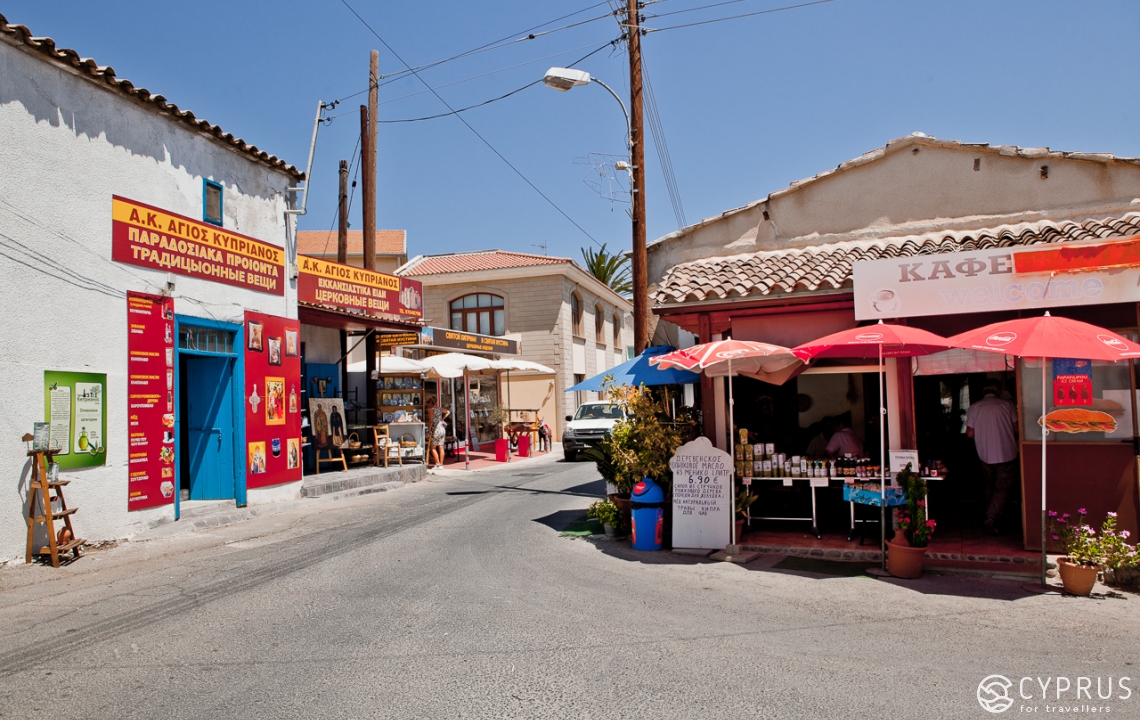
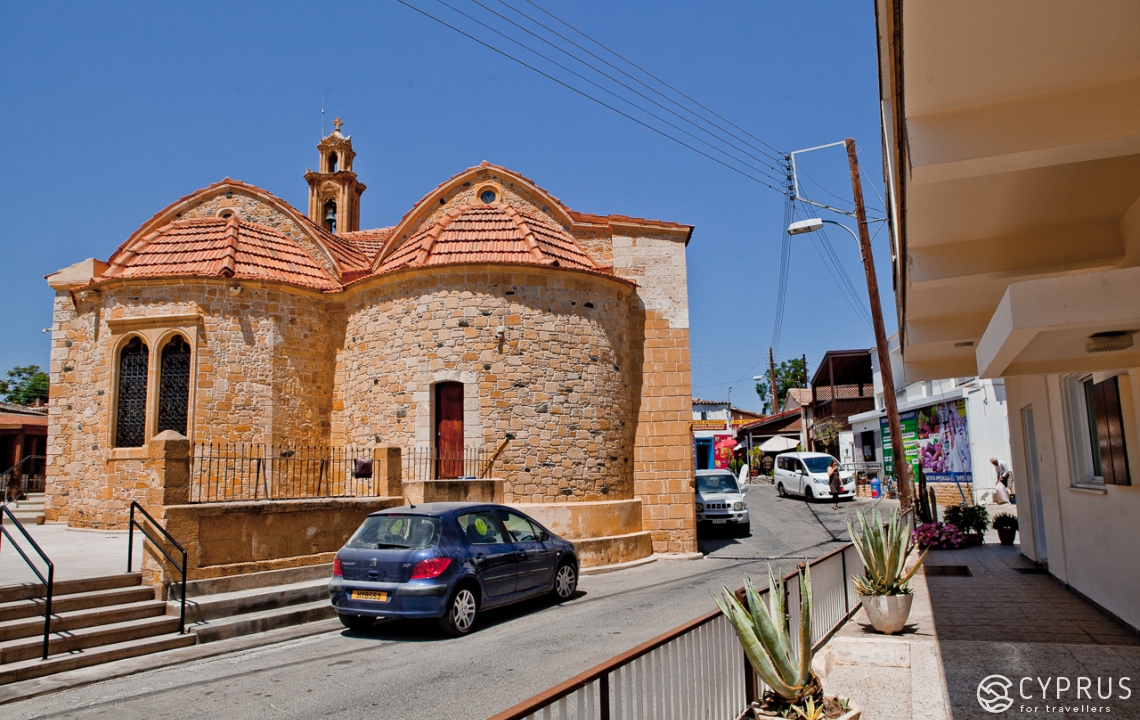
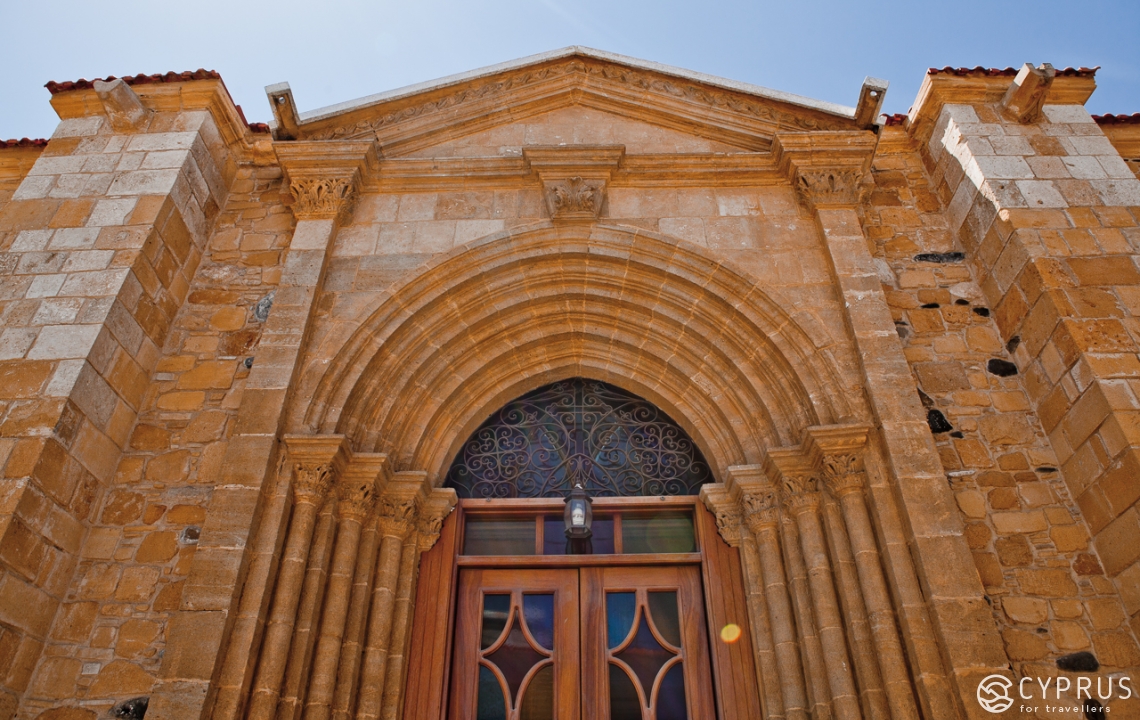
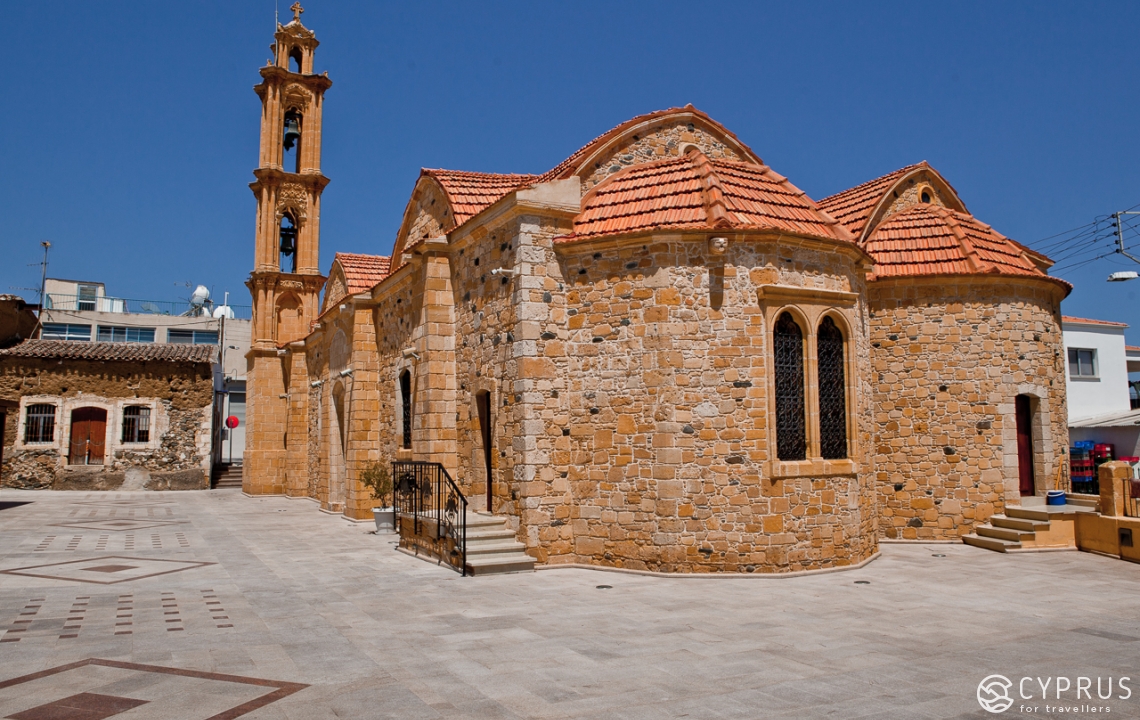
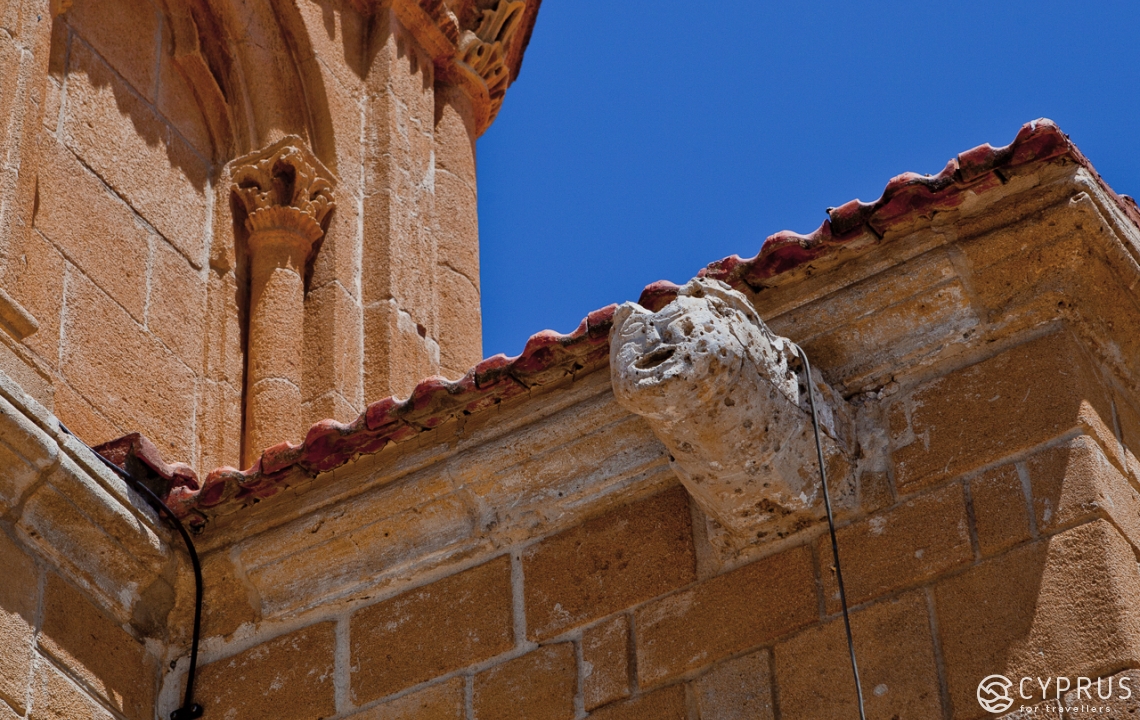
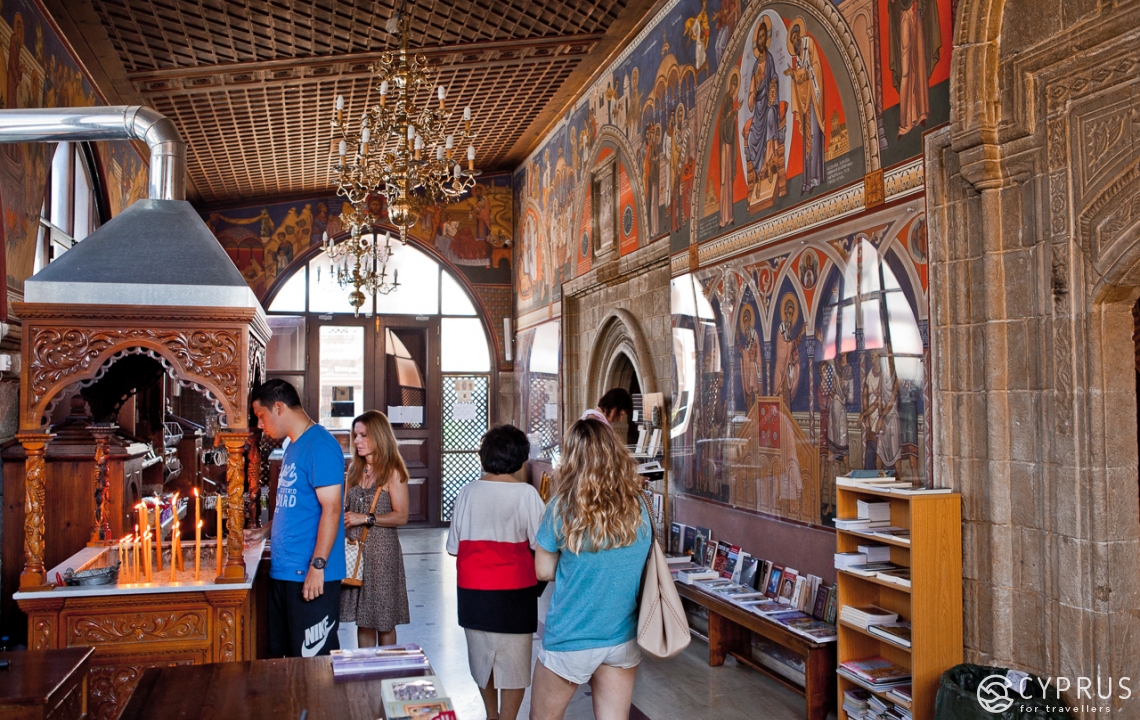
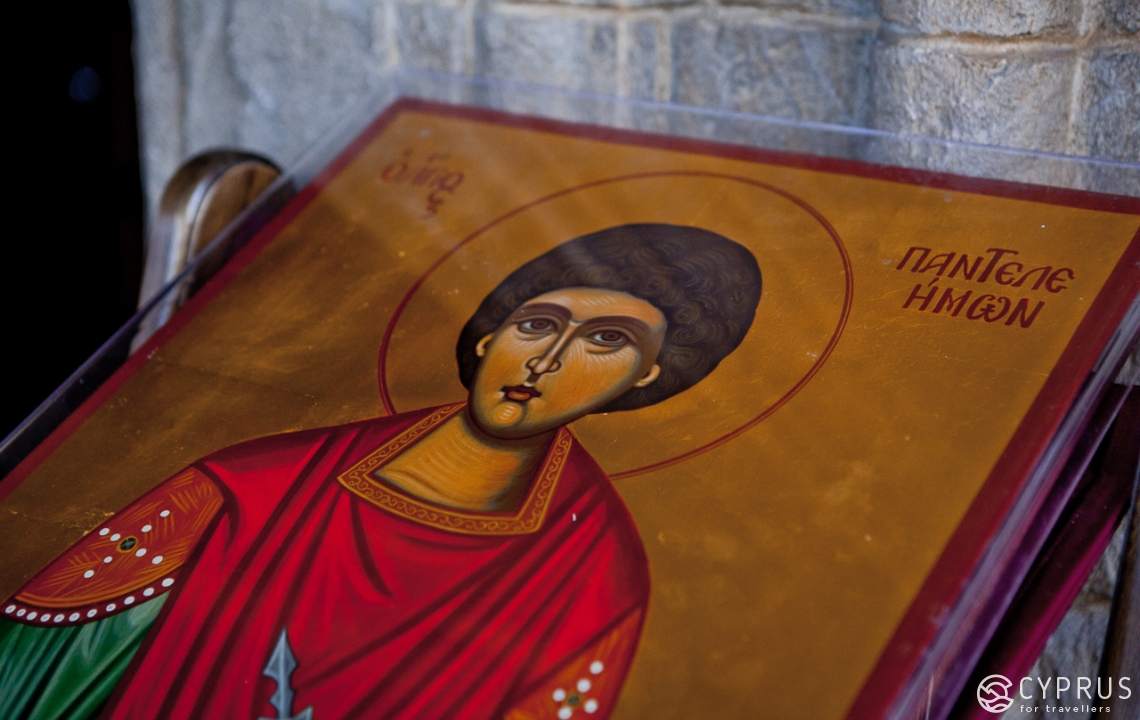
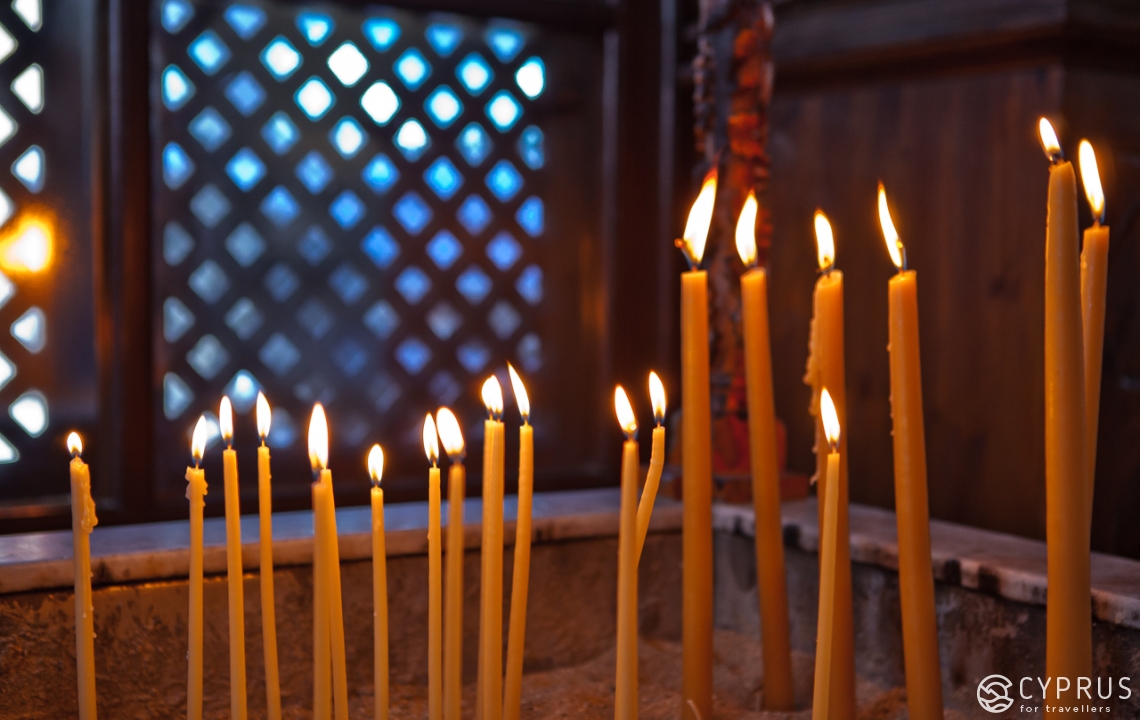
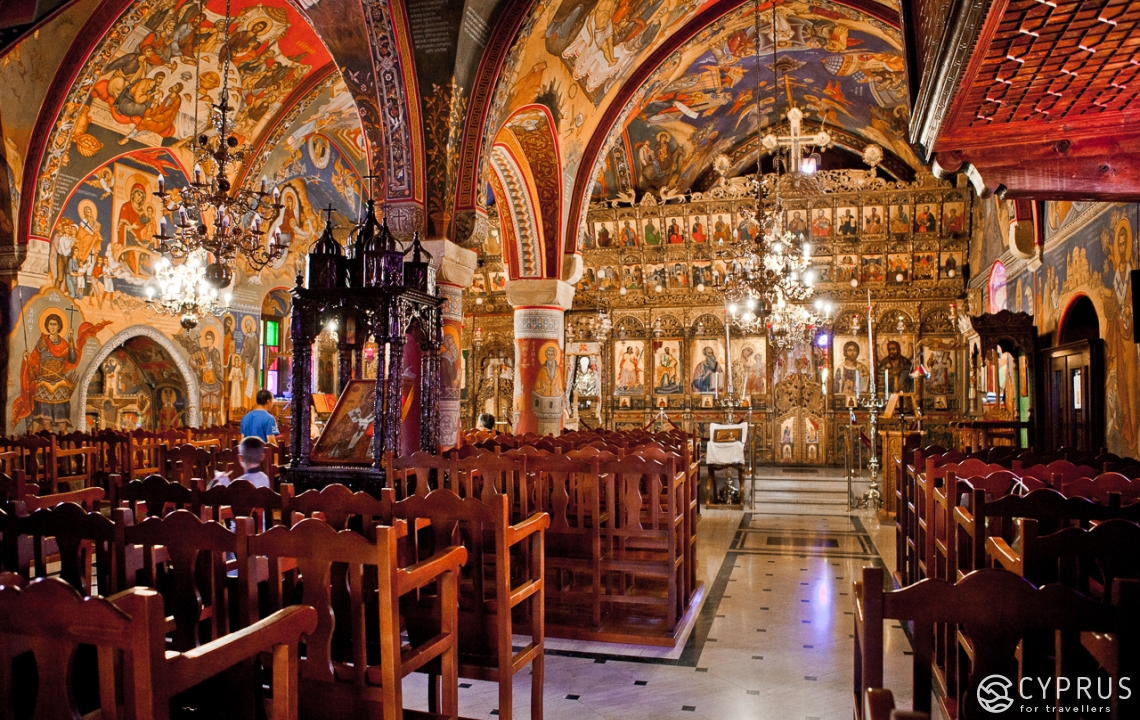
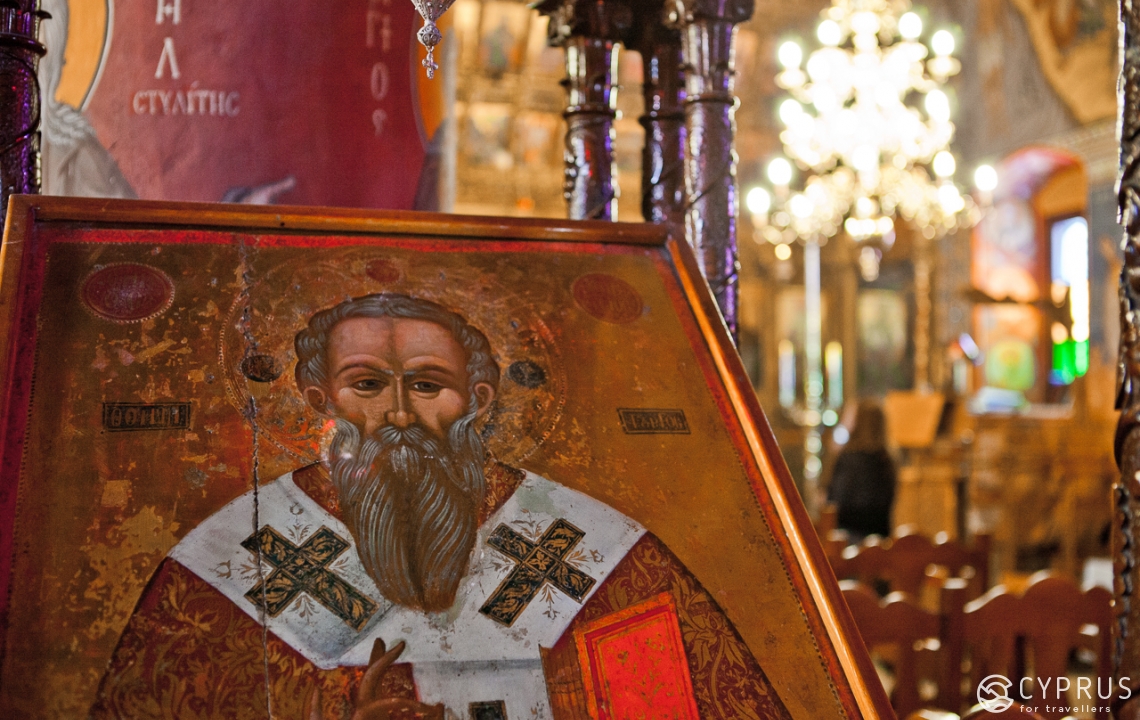
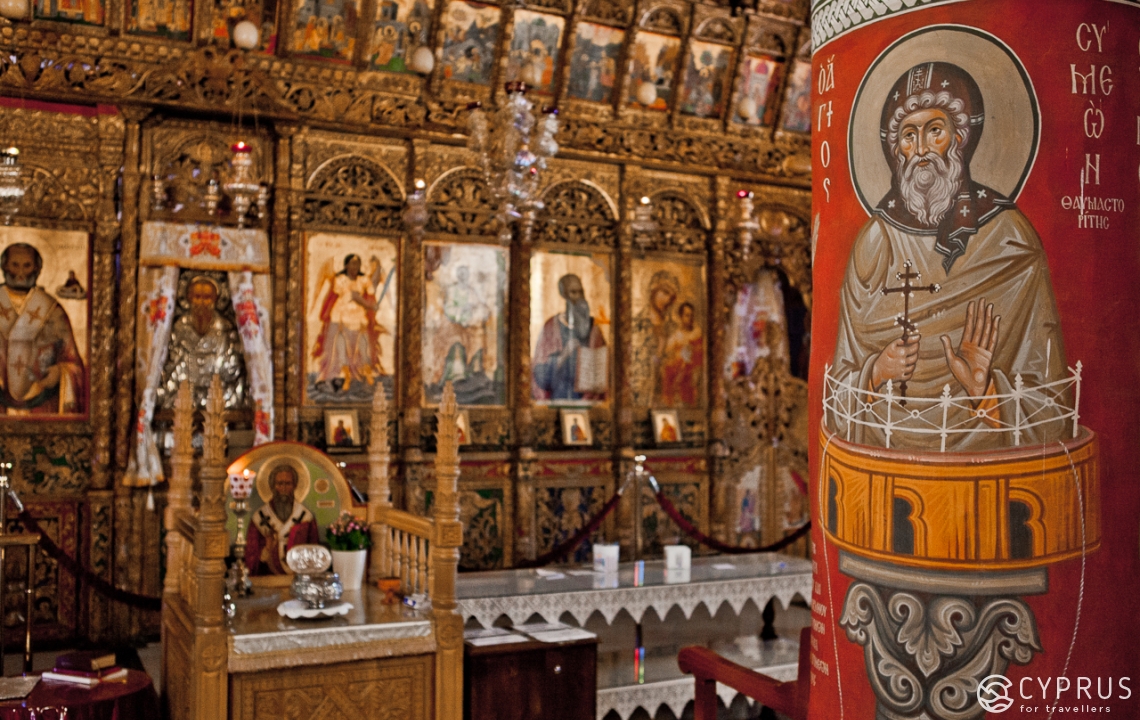
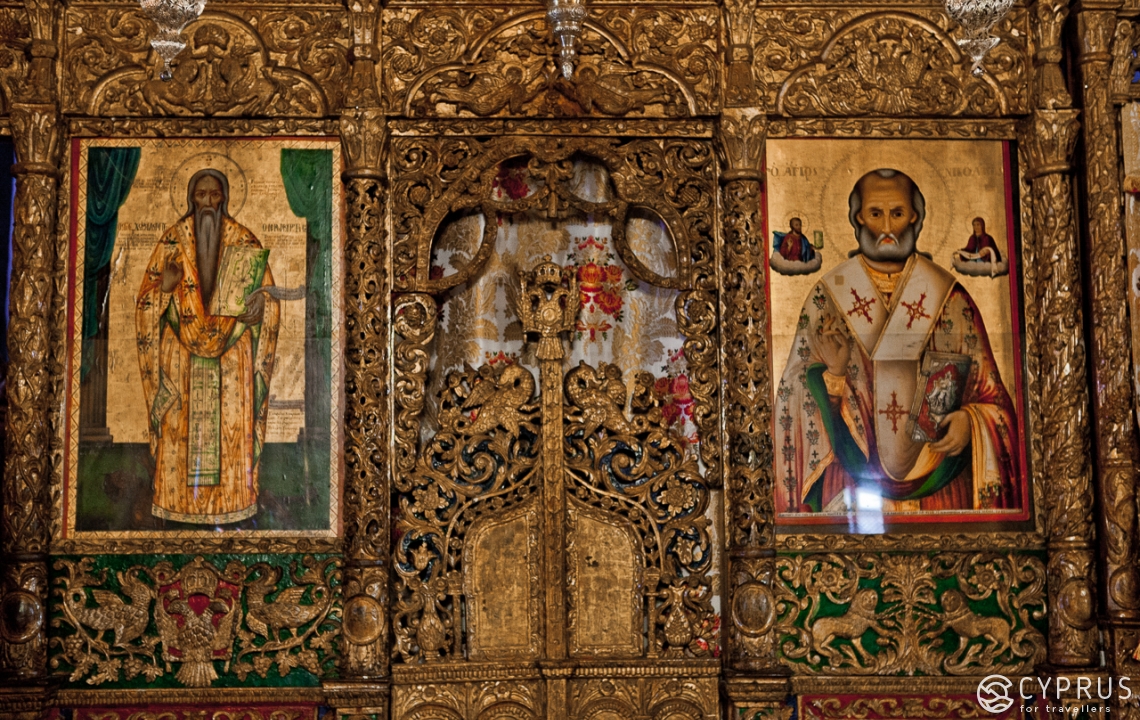
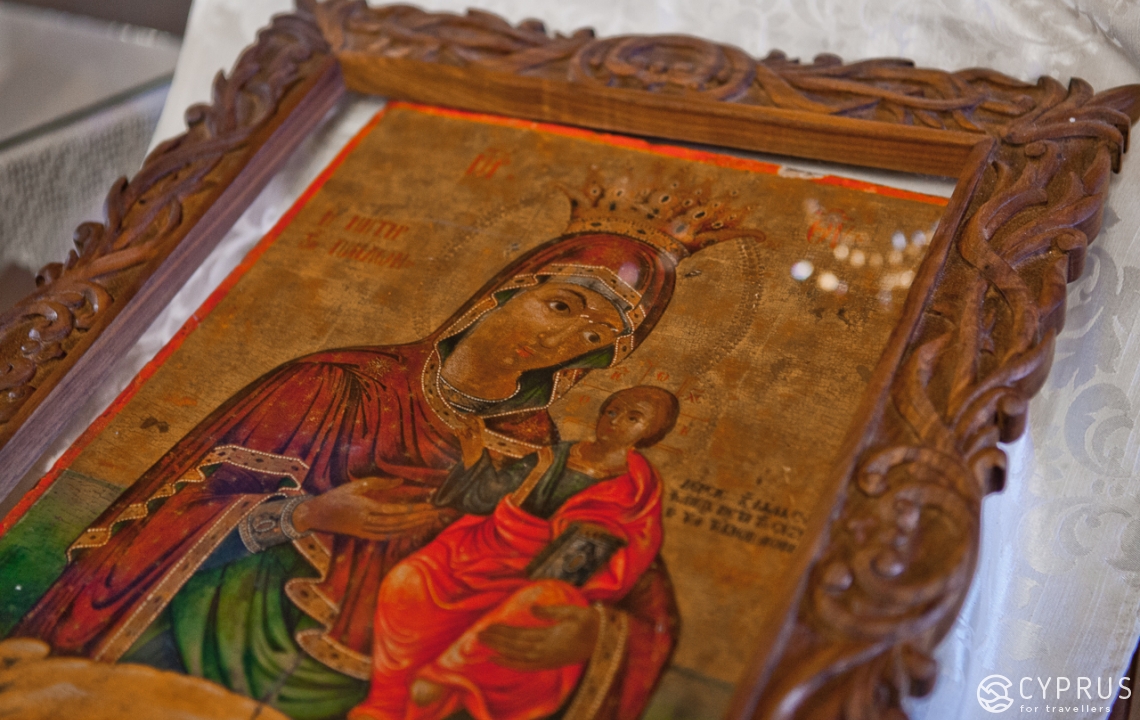
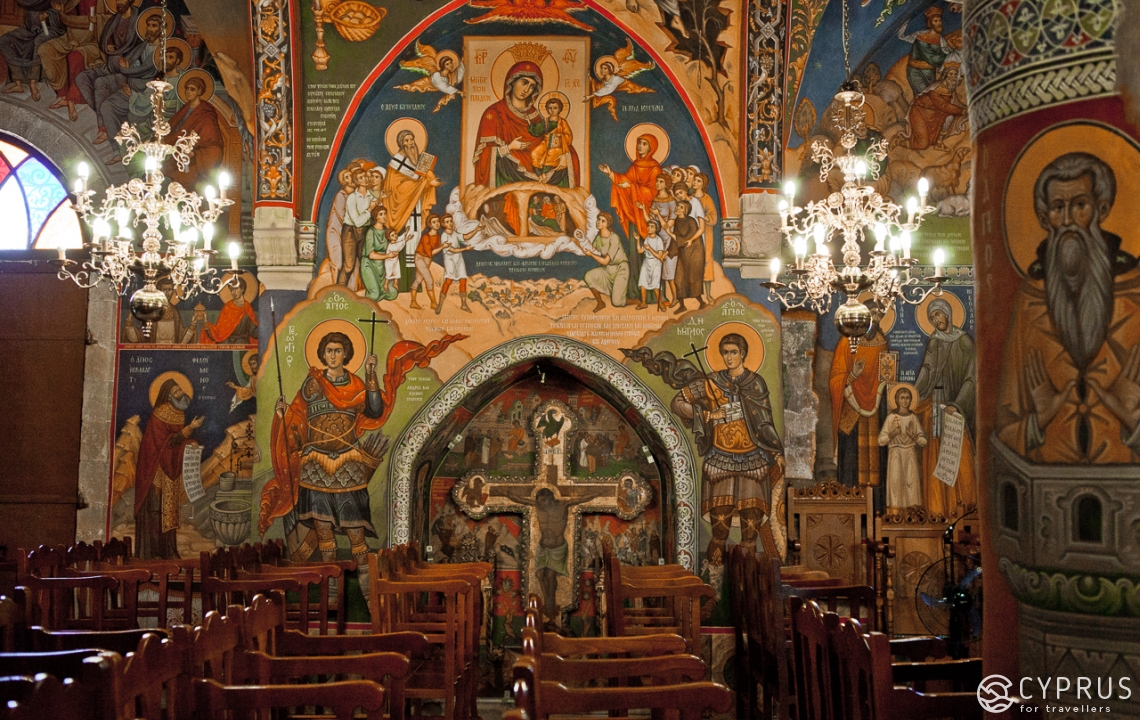
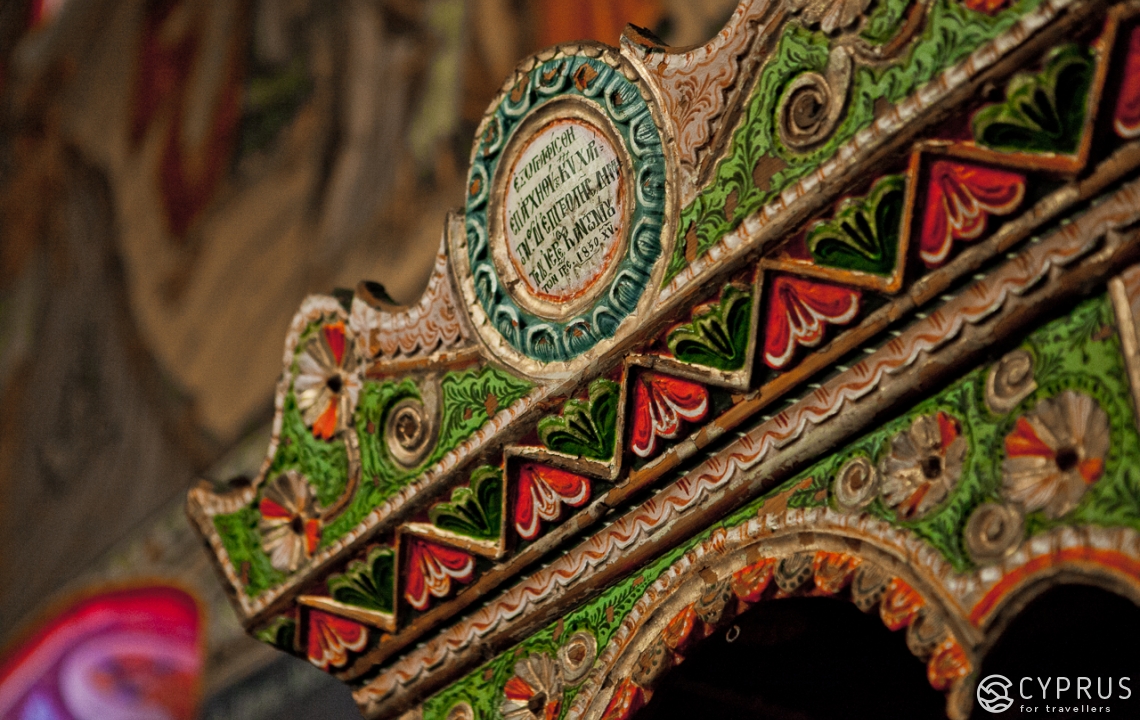
Contact information for the administration of Meniko: 18 Ayiou Kyprianou
Telephone: +357 22821478
Website: www.menico.org
Email: meniko1@cytanet.com.cy
Getting there:
Take Route A9 going from Nicosia to Troodos. Once you reach the ring at the end of the route, follow the signs to Akaki by taking Route B9 until you reach a bookstore. Then turn left down Archbishop Makariou III Street, drive down Vyzakias Street until you reach Mana-ton-Paidion Road, which should finally bring you to the village.
The other option is to take the Nicosia-Troodos route until you reach the second exit towards Kokkinotrimithia, then drive past the village (you will pass by a Lidl store on your left hand side) and head towards Paliometocho. Then take Mana-ton-Paidion Road towards Meniko.
Trip duration: about an hour.
Buses #38 and #41 also run in the area. For more information on routes and schedules, please read this.
Gourri
The village is located in southwestern Cyprus, 35 kilometers outside of the capital, in the geographical region of Pitsilia. According to the most likely theory, the village got its name from a feudal lord named Jacob de Gourri, who owned land in this area during the period of Frankokratia. There is less certainty about the date of the village’s founding, with some claiming it happened in the year 800 and other accounts pointing to 1100.
The village is quite small. Its population is only 230 people [2].
When you enter Gourri, you will immediately notice just how scenic it is thanks to the lush greenery as well as traditional and modern houses, covered in grapevines, ivy and jasmine.
The local landscape calls for a relaxed walk outside.
If you enter the village from the direction of Nicosia, you will pass by a picnic location on the left-hand side. There will be a parking lot on your right-hand side and a small park attached to it, both of which stand atop a cliff that overlooks a valley.
Just outside the village there is a 2-kilometer hiking trail that leads to an 8- meter tall waterwall. Locals told us that the waterfall «is open» only during the winter.
When we arrived in Gourri, we were hosted by a very hospitable family, who are not only our friends but also owners of a local tavern housed inside a traditional house in the center of the village. The tavern is quite popular among the locals. People come here not only to dine, but also to catch local news, celebrate a personal event and socialize with their fellow villagers.
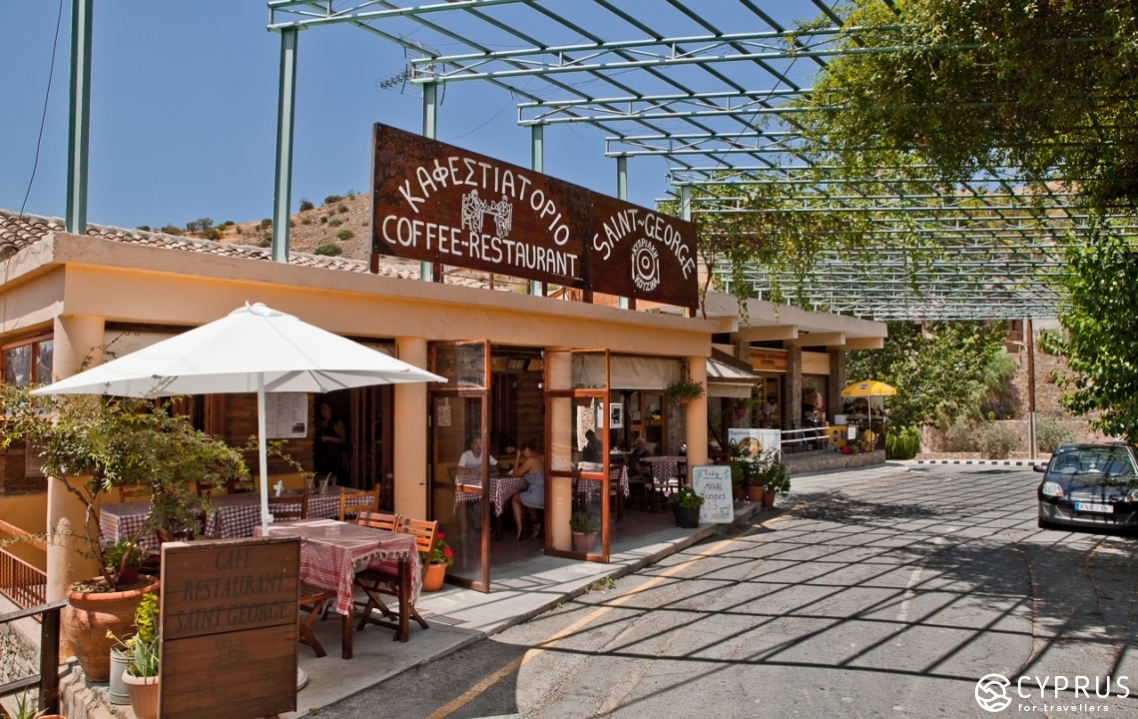
Address: St. George Mezedokamomata, ул. Agios Georgios (Gourri)
Тelephone: +357 22 633755
Facebook page.
Check out the improvised exhibition showcasing household objects belonging to local villagers (among them you will find a breadbasket made of cattail that hangs from the ceiling as well as a 7-year old dried pumpkin).
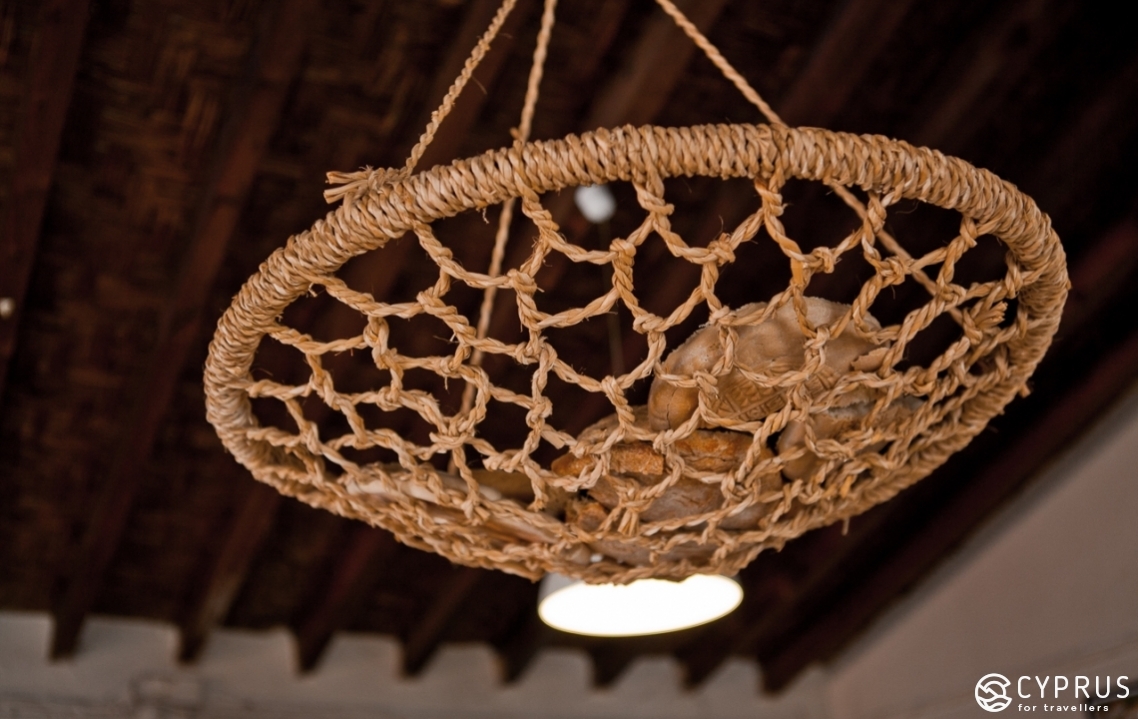
The owner of the restaurant told us: «We usually serve these pumpkins stuffed. We first cut them into large pieces, remove the inside part and then stuff with, say, gound meat, rice, tomatoes, pepper and parsley [3]. We then bake everything in the oven. It’s a delicious dish!»
The tavern also sells cute souvenirs, such as crocheted rugs, purses as well as things for children. Ms. Argiroula Andreu’s original paintings of local landscapes decorate the walls of the tavern and are also available for purchase. She volunteered to take us on a tour of Gourri.
After enjoying a refreshing drink, we set out to explore the village. And despite the relative state of dilapidation and melancholy, which is unfortunately typical for Cypriot villages, the more we saw of Gourri, the more charming it seemed.
Many of the houses in the old quarter, which clumsily sit atop the sloping streets, are nowadays empty, but not lifeless. These sturdy antique buildings are now home to a whole kingdom of local cats and lizards. Their top stories are now covered in wild grapevines and ivy, which have provided shelter to local turtledoves and other birds. The surrounding views are spectacular. If you look around, you will see foothills flooding in sunlight and houses submerged in lush greenery and blooming flowers and fruits of different kinds. When we visited Gourri in the middle of the summer, we noticed that most of the fruits had already started to ripen.
We walked down Agios Georgios Street, which is the main street in Gourri, passing small, but sturdy antique houses on both sides (most of them dating back to the 18th-19th centuries). Their quirky shapes resembled the local landscape.
Some of the essential elements of local décor are the carved wooden window frames, balconies and bi-fold doors.
The Church of Agios Georgios
The first landmark that we hit was the Church of Agios Georgios and a truly breathtaking sight. The church was built using white stone, in a «tis Stegis» manner, which means it has a tall roof made of flat red tile, instead of wooden shingles that were typical for an earlier time period. Adjacent to the church is a bell tower. There are several narrow, cobbled roads leading to the church from different directions. Incidentally, we have noticed an interesting fact: all of the roads in this village as well as other villages in the Troodos Mountains were paved with the same material that was used to build the walls that surround buildings and courtyards. The material is a mixture of wild local rocks and either shattered old tile or ceramics.
Looking at the church, it seems it hasn’t noticed the passage of time: its medieval trainquility and majestic silence are imperturbable. We were gradually shrouded by the afternoon heat as we finally entered this 19th century church. Everything inside is just as antique as the building itself. The carved wooden iconostasis was built in 1906. The icons date back to mid-18th century.
Ms. Margarita Antoniou is the warden of this cultural and spiritual heritage. She is also quite knowledgable about the history of the region and shared this information with us:
«Our church, which is also a museum, used to be a lot smaller than what you see today. The original space went only as far as the supporting columns in the central part.
The population of Gourri grew with time and Agios Georgios became too small. So it had to be rebuilt. The newer version was introduced on May 24th 1898.
Right underneath this church are the remains of a much more ancient church (most likely an early-Christian basilica — ed.).
You ask whether the iconographers came from this village? Yes, all 22 icons that you see in the iconostasis were painted by our fellow villager. For example, this icon of Agios Nikolaos, belongs to an iconography school at the Agios Iraklidios Monastery. The smallest icons are also very old and come from even more ancient churches that date back to the 10th-12th centuries. Also have a look at the ancient, gold-plated royal doors.”
Also, please note that photography is prohibited inside the church. But you can take pictures outside. The same rule applies to the Museum of folk art and craft.
The museum
We were also promised to see the local ethnographic museum, which was actually closed for a siesta. We arrived at this depository of local culture and history by walking down Andrea Stavrou Street — one of the most scenic streets in Gourri.
As is expected of an ethnographic museum, it is housed inside a traditional house.
As you enter, you will notice archival data displayed on several information stands (available in three languages: English, Greek and Russian). Ms. Antoniou proudly pointed out a photograph of her family displayed alongside other village residents, including the owner of the house. The main exhibition is housed inside the three rooms on the first floor [4] as well as a small portion of the courtyard, which was used to store jars of food, millstones [5] and grape juice presses.
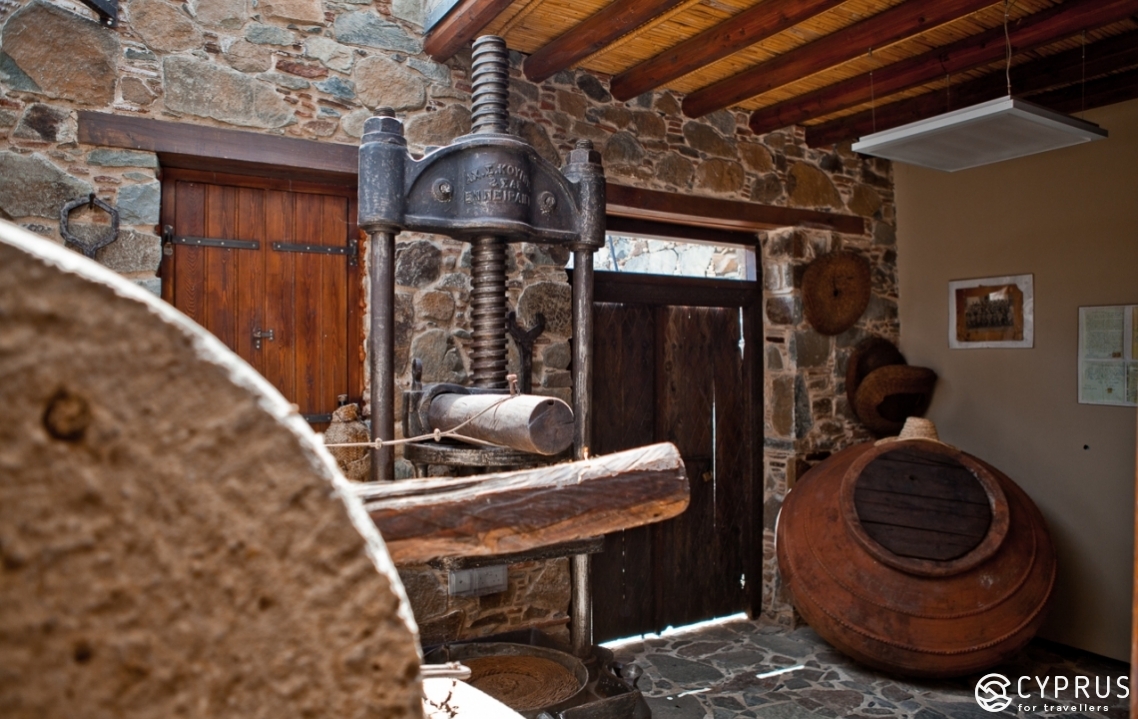
The main space is used to showcase various agricultural devices, tools, harnesses, ploughs and other miscellaneous things (e.g. a pair of impressive leather boots).
The room on the left is the kingdom of different household appliances and crafts, such as baskets, cauldrons, clay pots, fine ceramics (used for wine and water) and different carved wooden and copper items.
Many of the devices, such as the bowl with a drain that was used to make halloumi and anari, are not only skillfully made, but are also very savvy. Part of this cheese-making device is a simple chair that is laid on its side and a metal tray is placed on top of it.
Nearby is a wooden cuboard that was used to store dried, salty version of anari. The cupboard features a vent to allow the cheese to «breathe».
Back in the day, villagers used to get by with the simplest version of a fireplace. They would build a rectangular construction in the center of the stone floor using bricks and start a fire underneath it. The pots and pans were placed on top of the brick surface.
If you look around, you will also notice a beekeeper’s corner (made of red ceramics) that features an antique example of a round-shaped beehive. This space used to be where the women in the house lived.
The museum hall on the right is larger than the ther rooms. This used to be the living room and also the area used by men. Nowadays it houses two massive wooden looms used for weaving and embroidery. The mannequins are wearing traditional local costumes. Nearby is a window case displaying different clothing items and elements of décor.
Ms. Antoniou not only talked about the history of the village, but also showed us the way a weaving loom works.
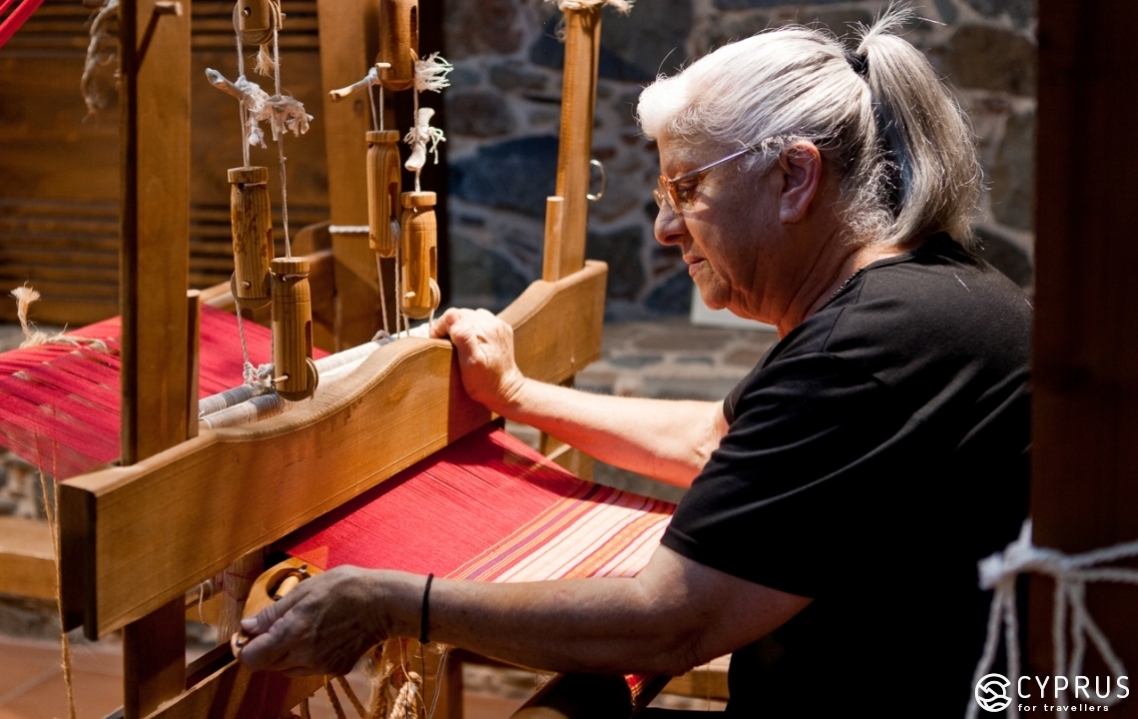
The shuttle is passed back and forth through the shed, between the yarn threads. Then the frames are switched: the top one replaces the bottom one with the help of pedals. The seamstress adjusts the fabric with her hip and starts over. There is a stack of towers and a tablecloth sitting on top of the frame — these were all single-handedly made by our tour guide.
Keep in mind that many antique and truly rare objects at these museums are usually openly displayed. However, please be careful not to touch them.
Simply enjoy the chance to travel back in time and experience its atmosphere. If you feel the urge you can always leave your feedback in a special book.
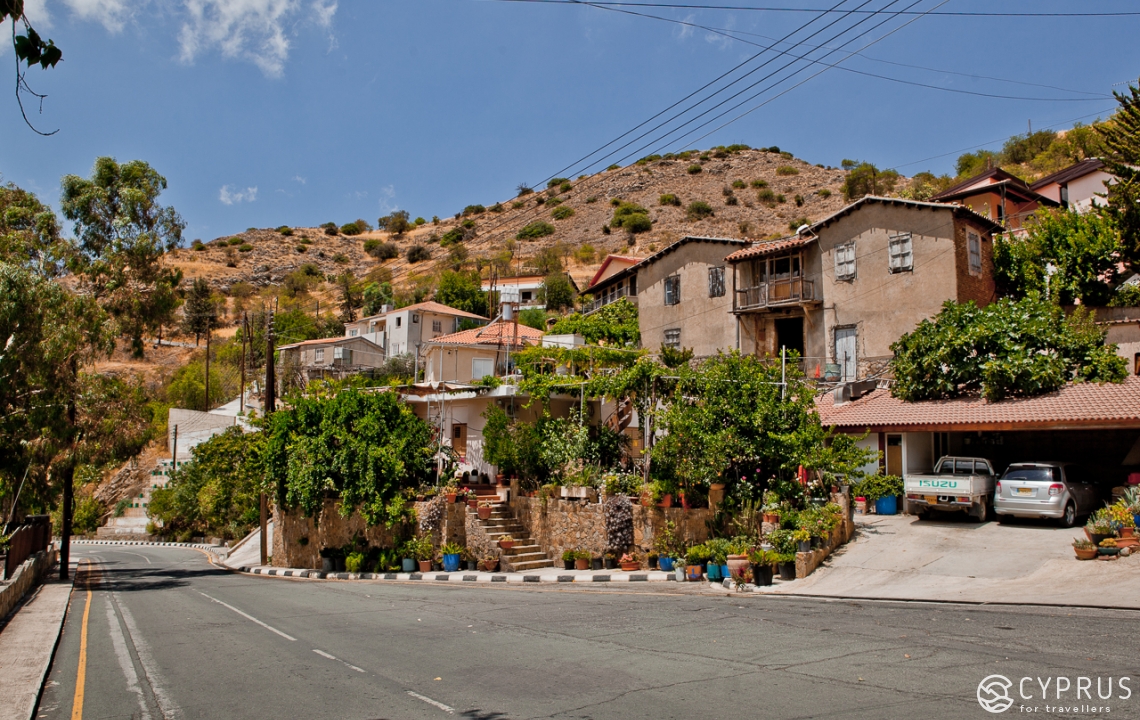
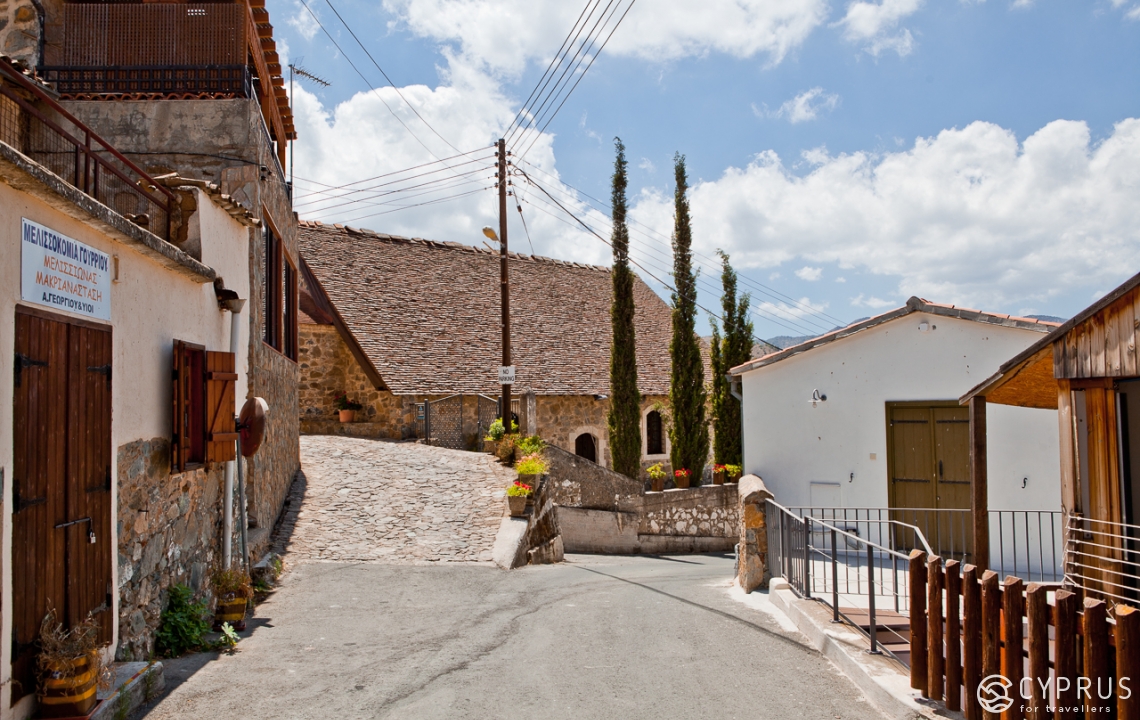
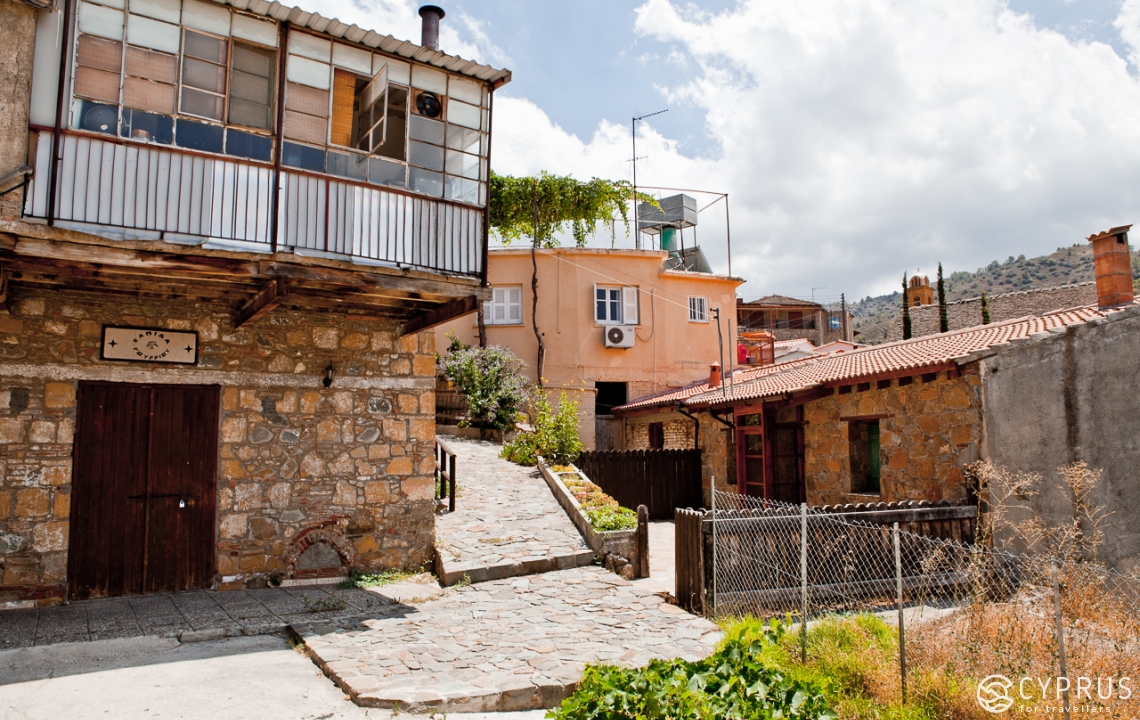
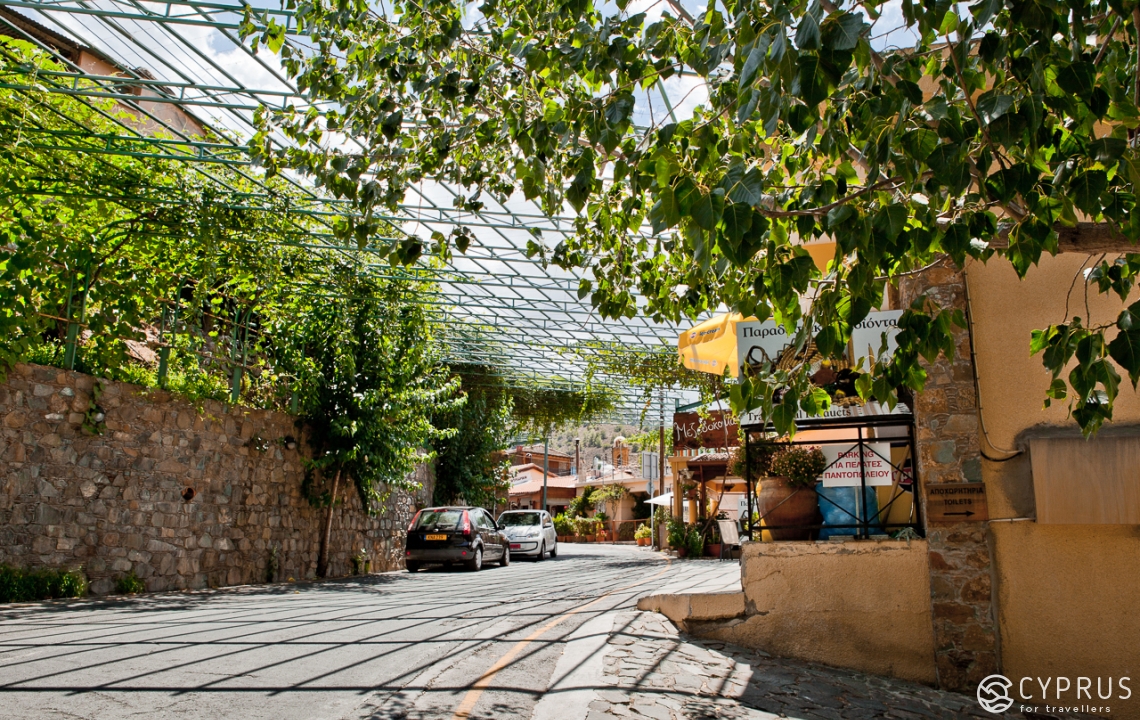
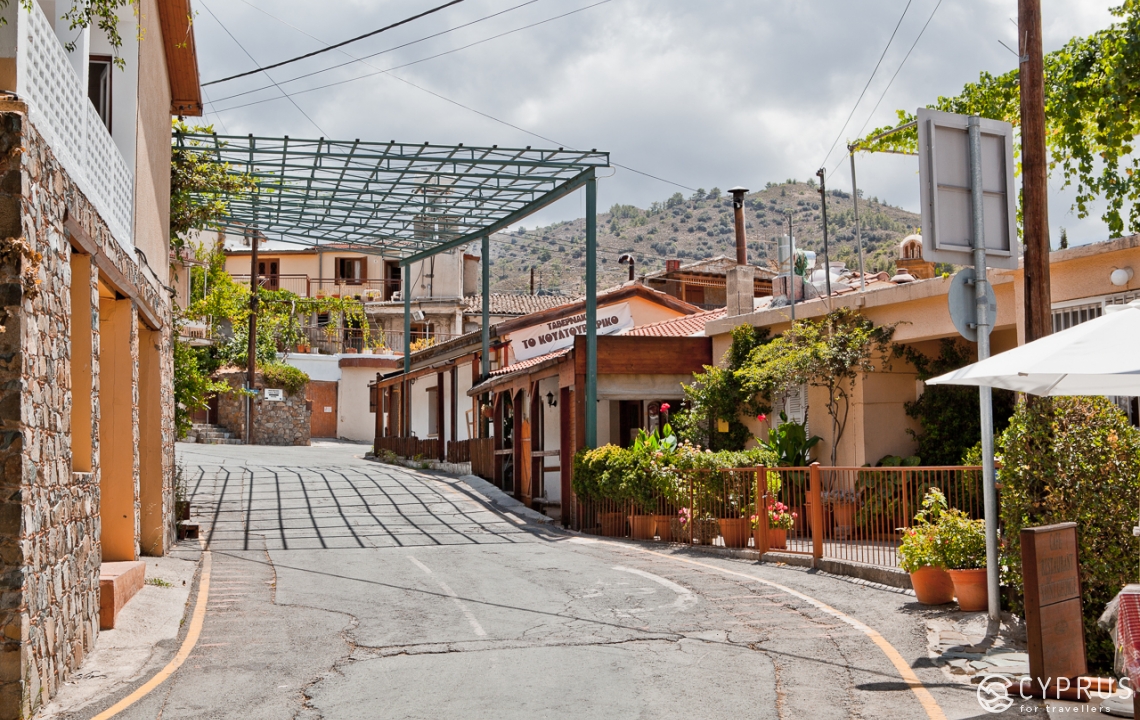
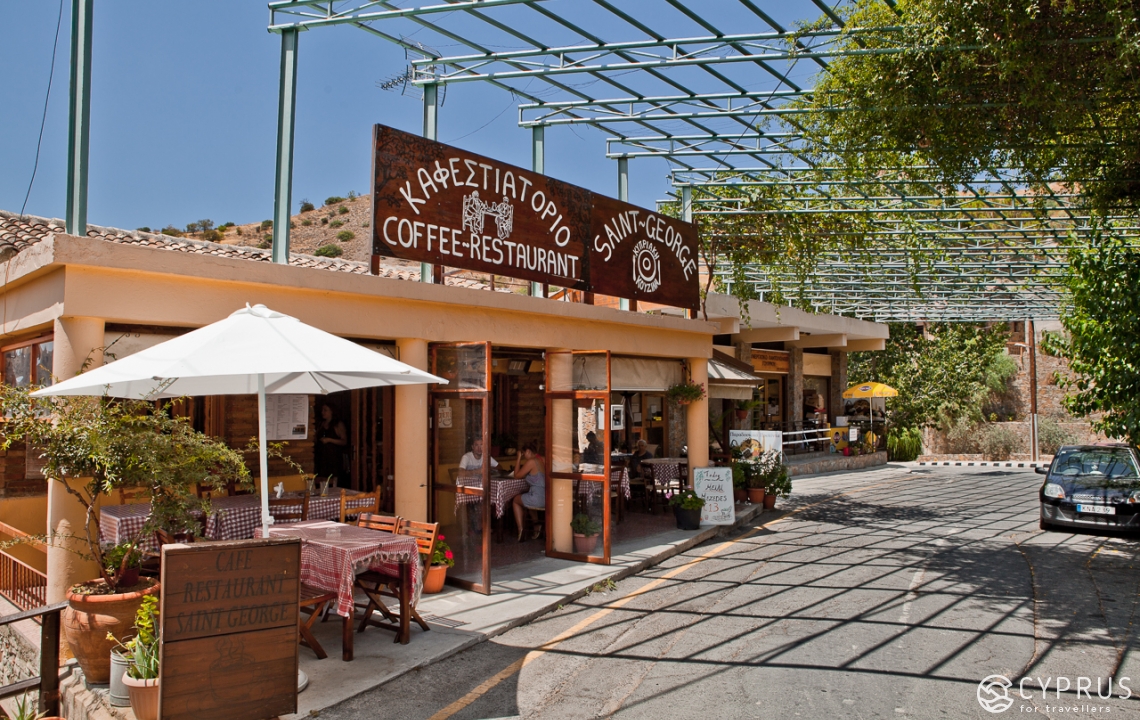
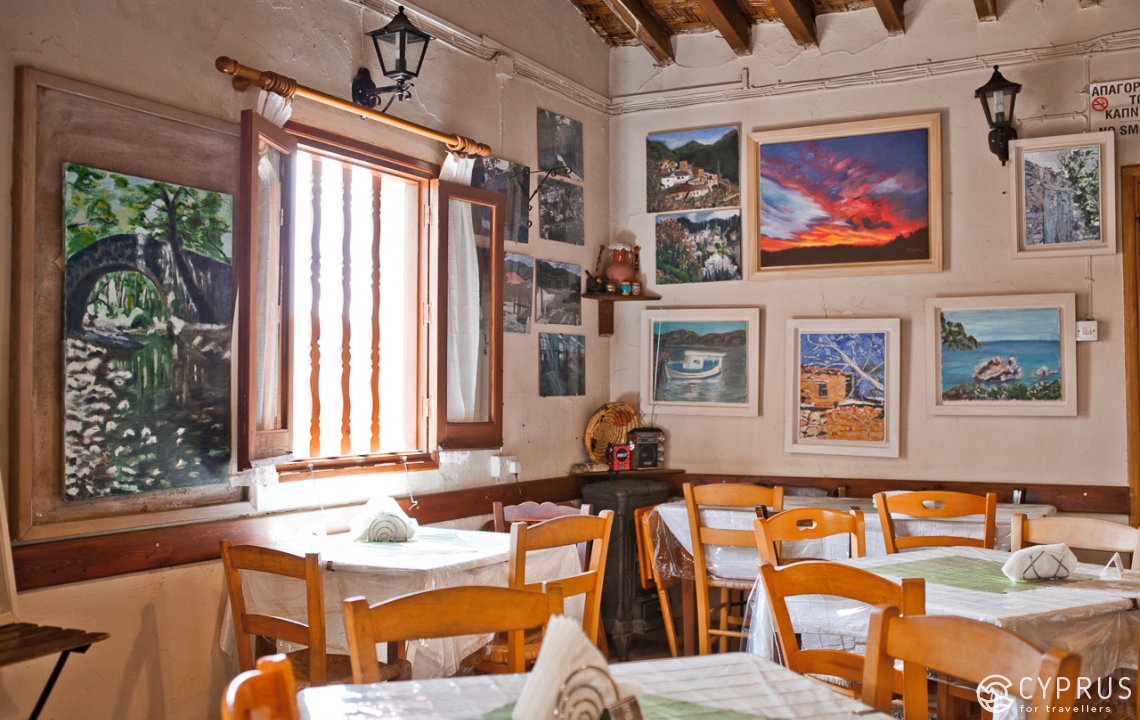
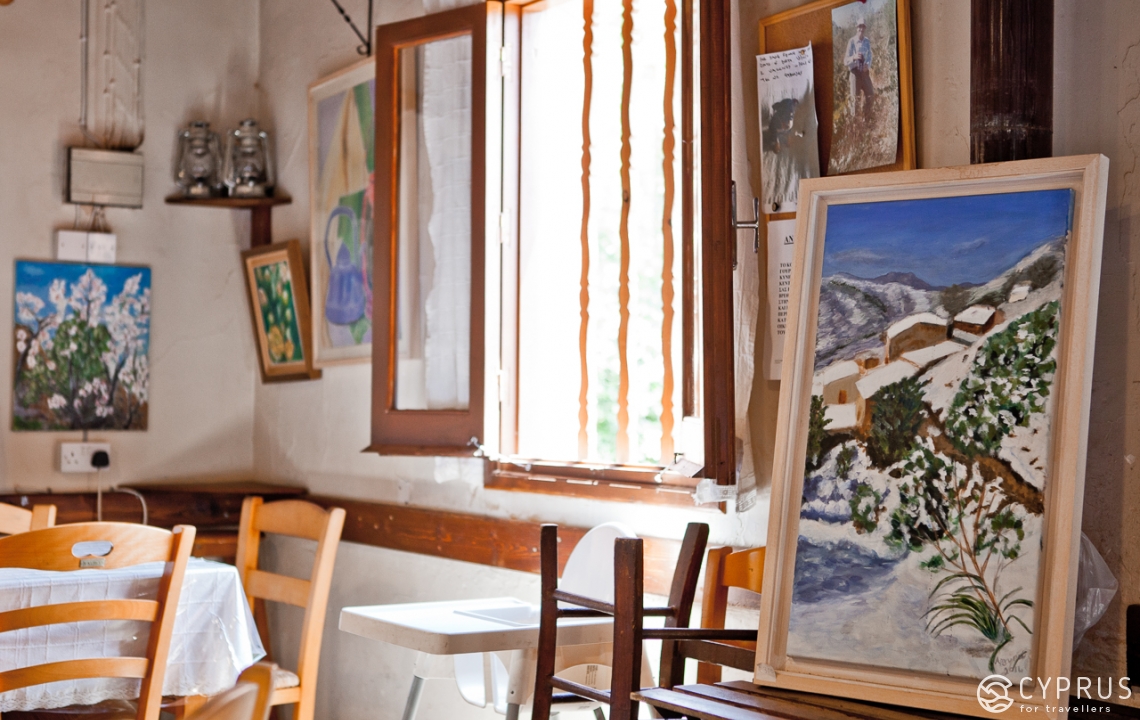
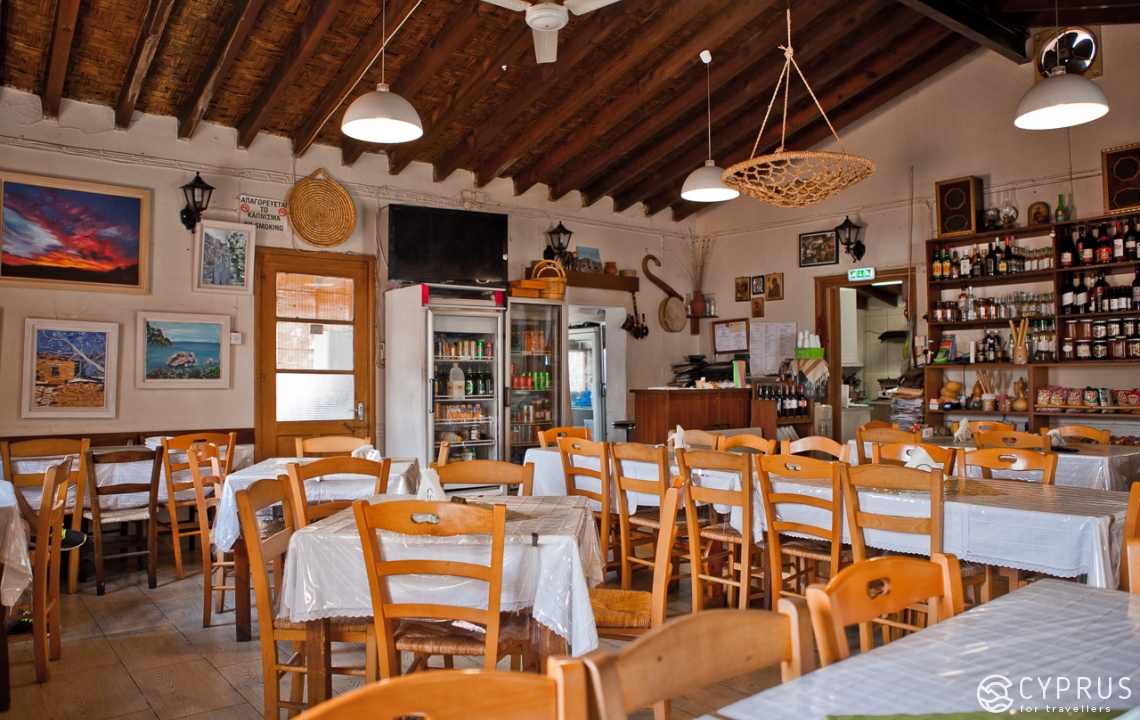
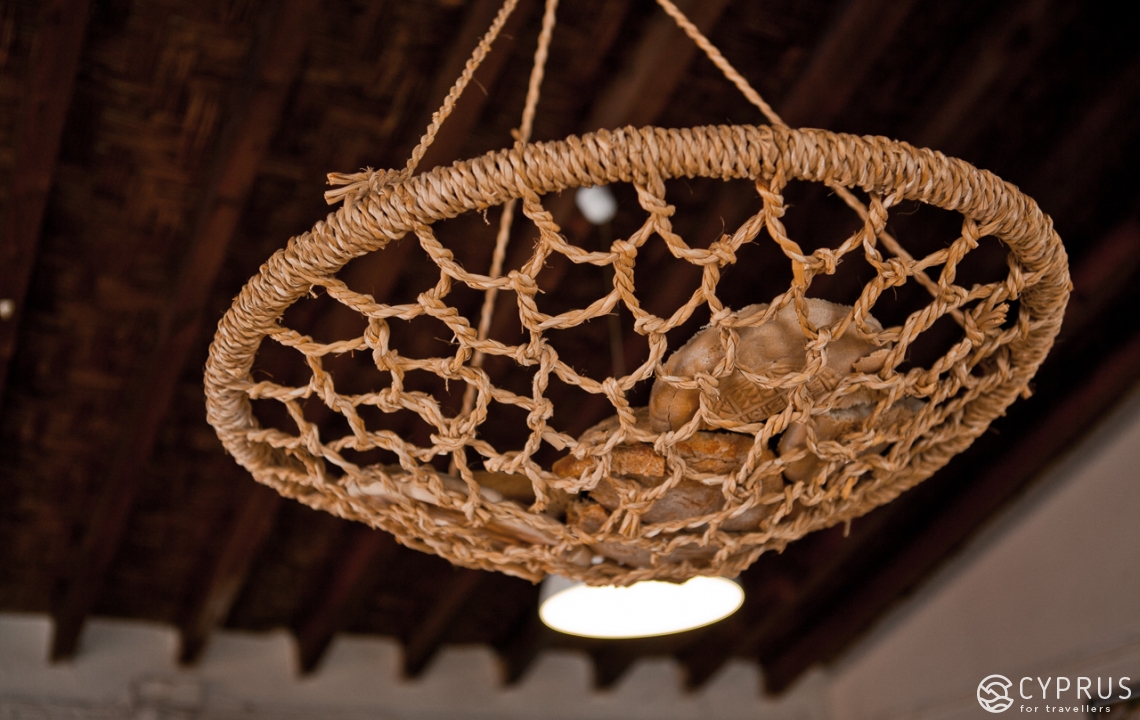
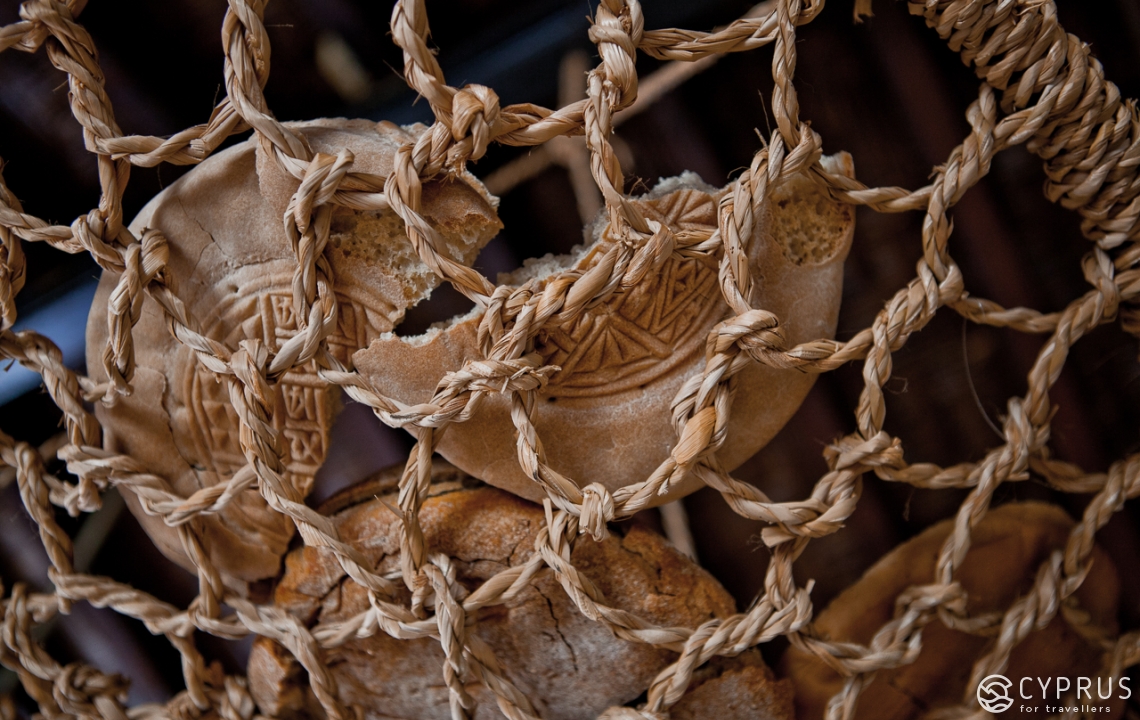
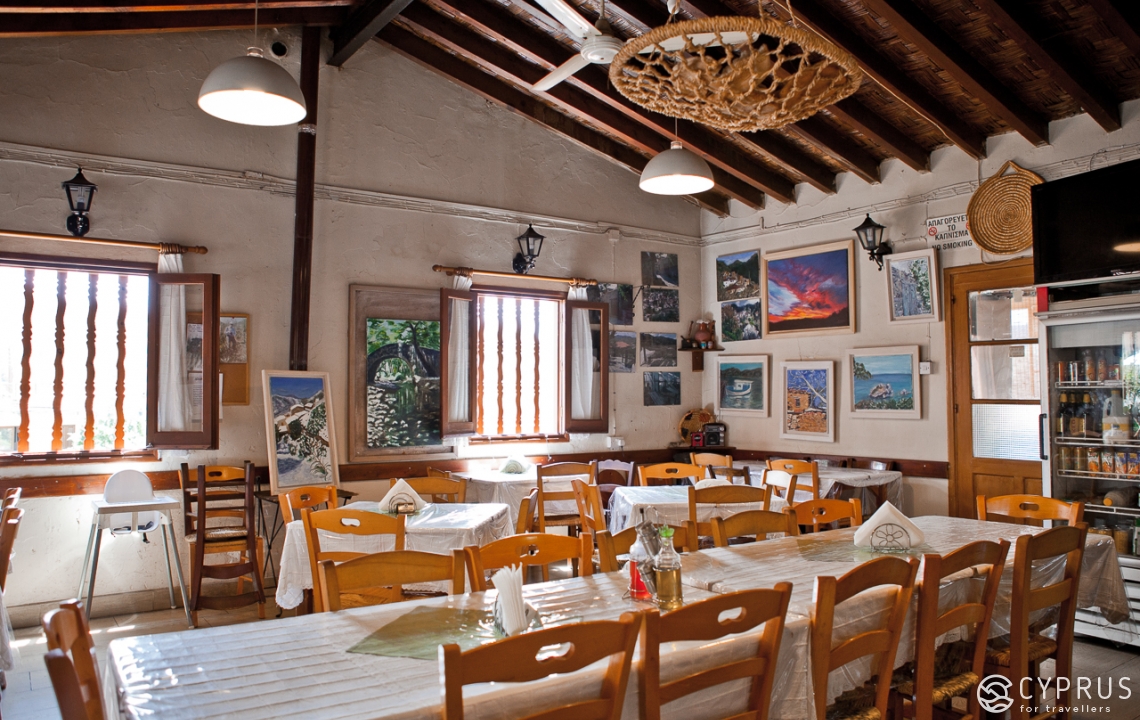
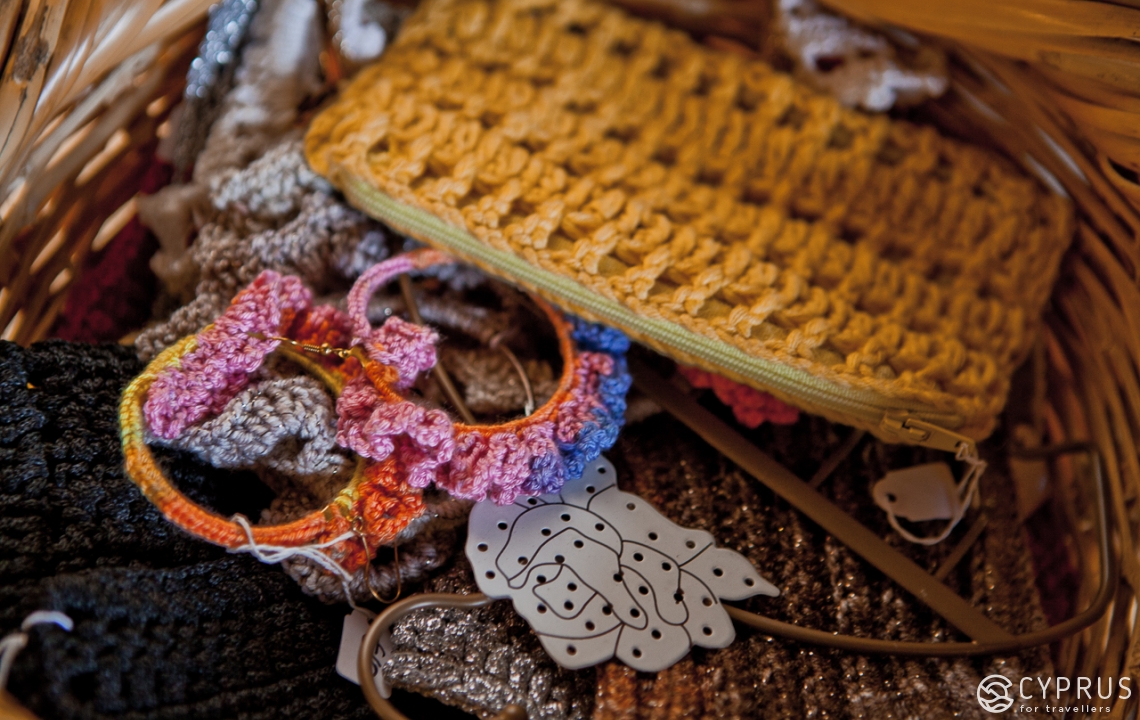
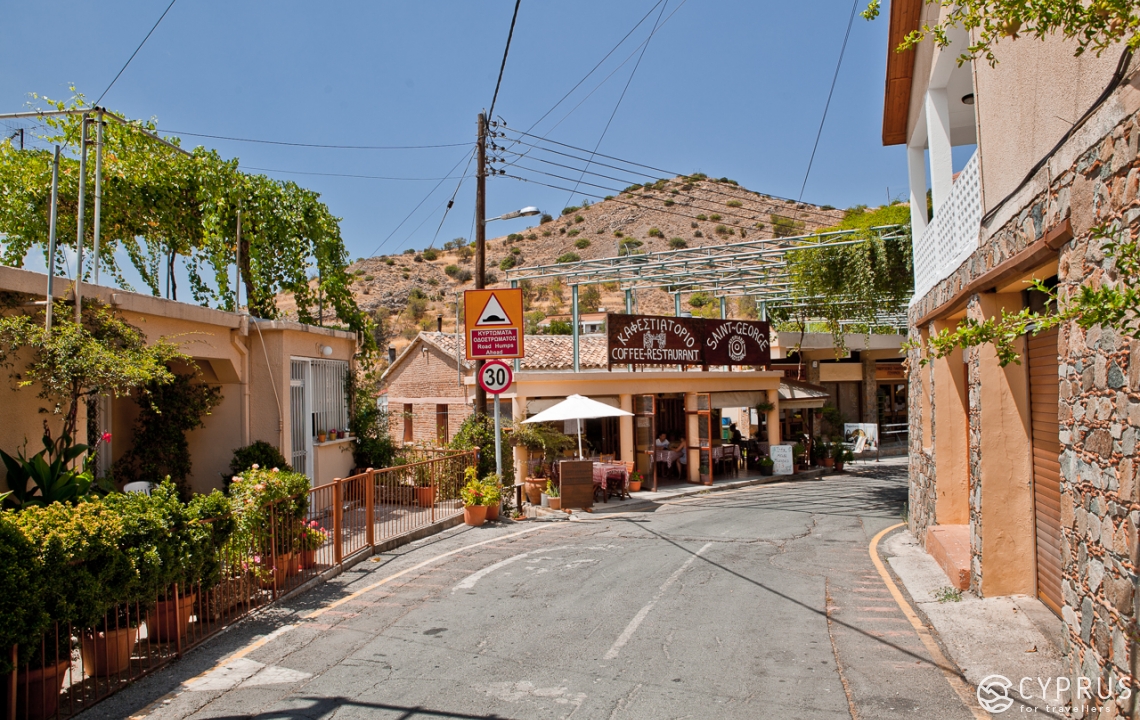
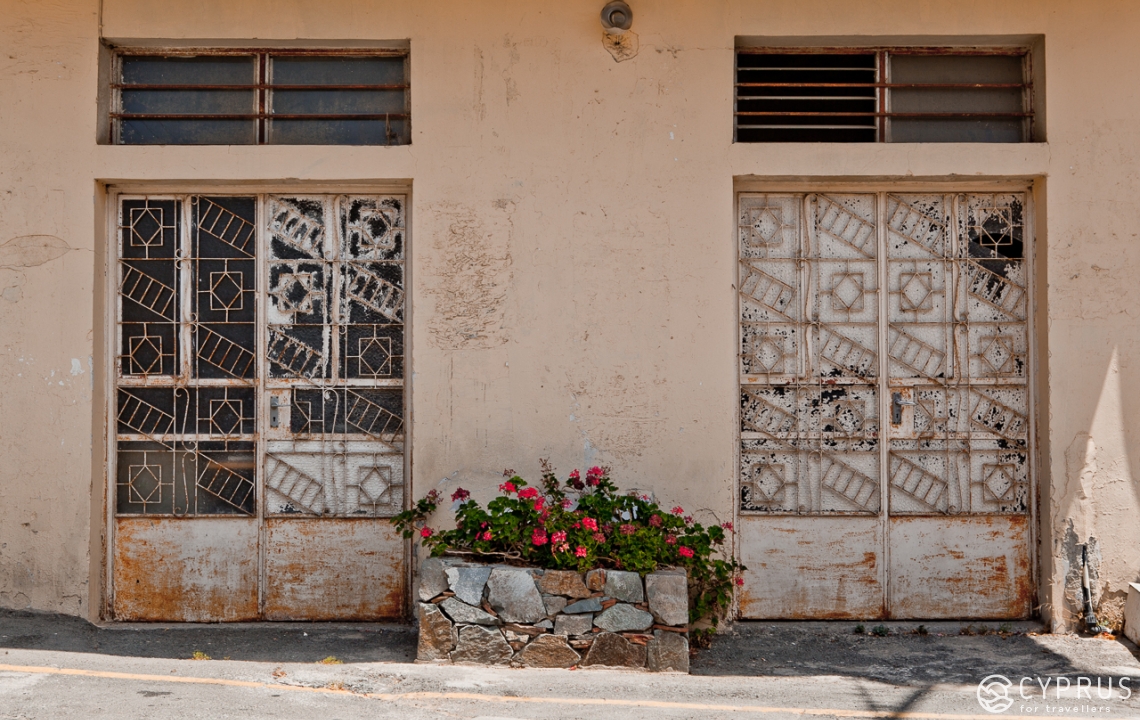
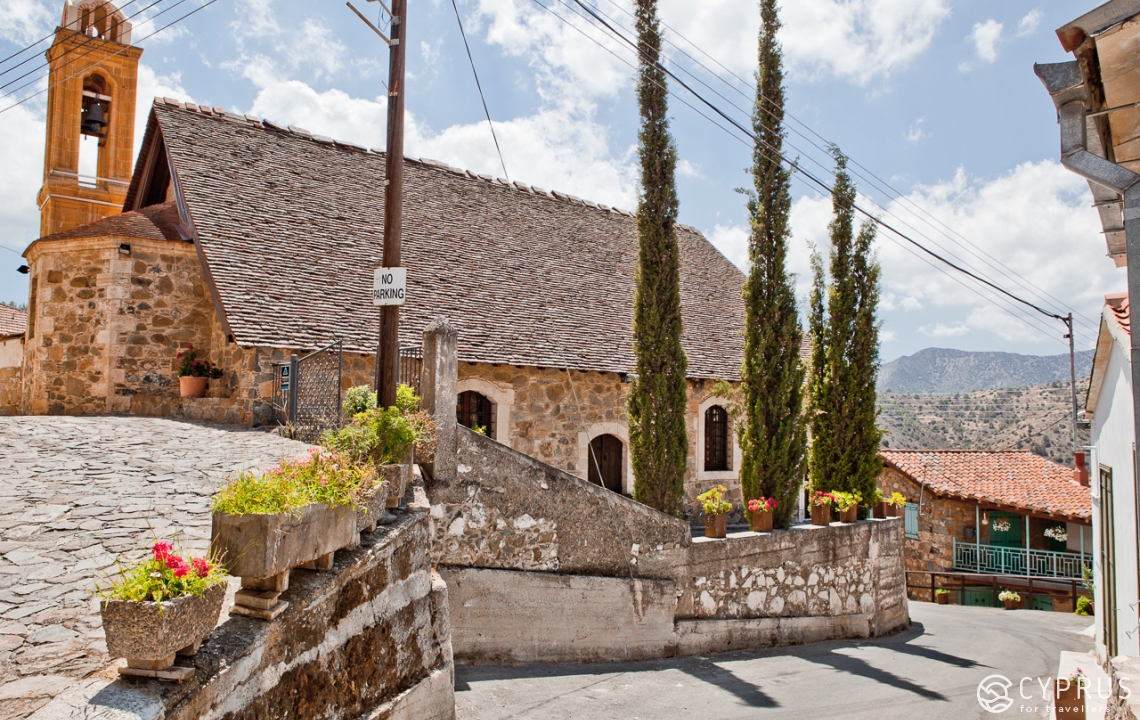
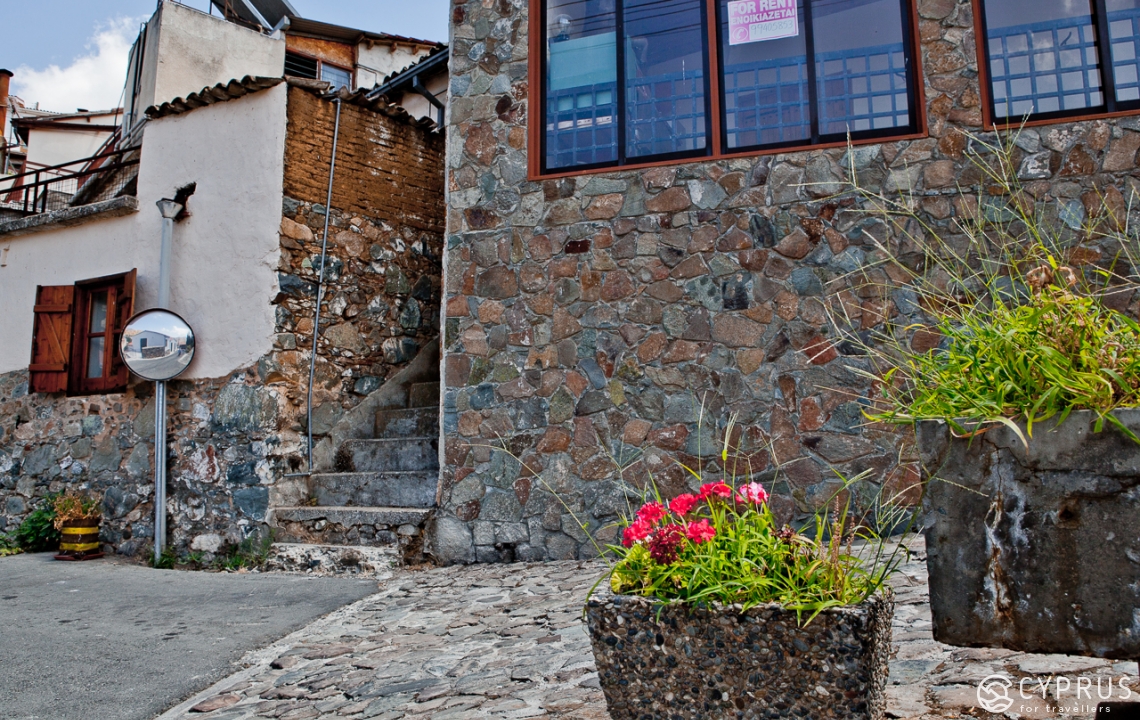
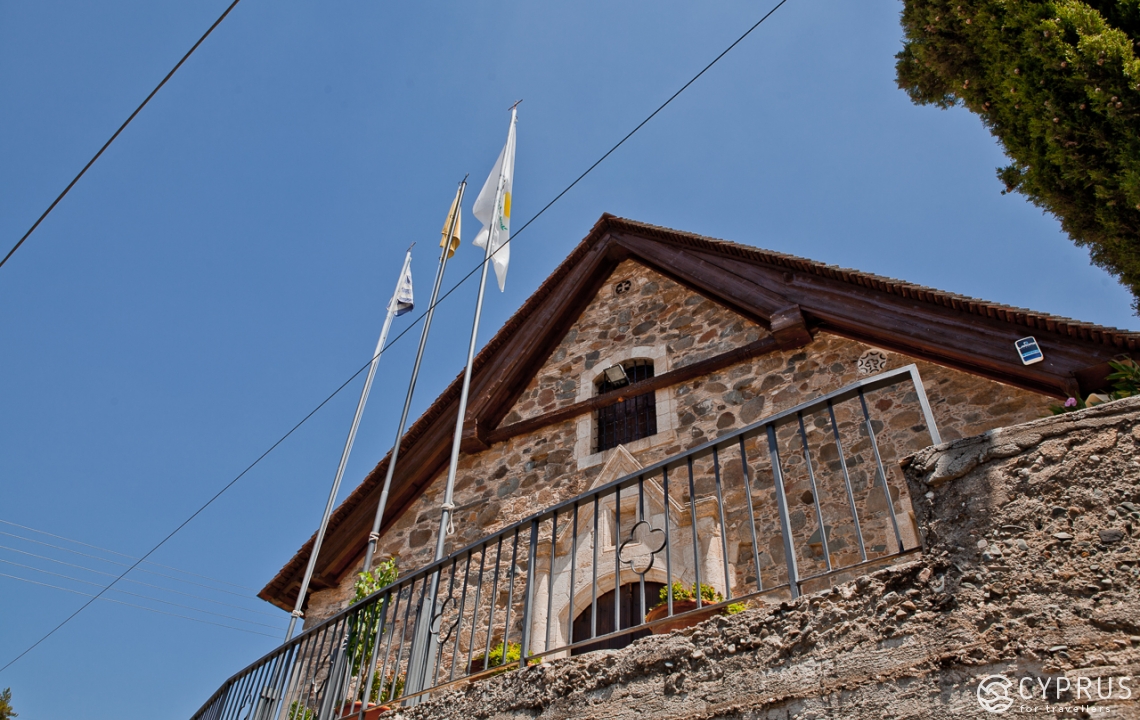
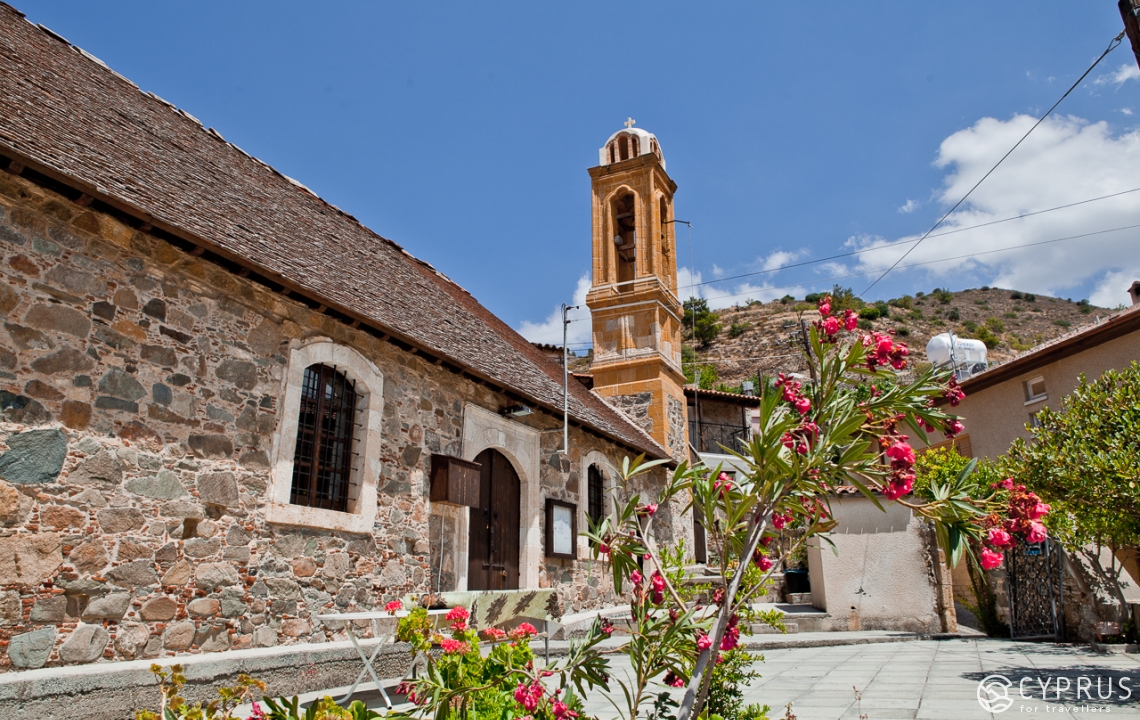
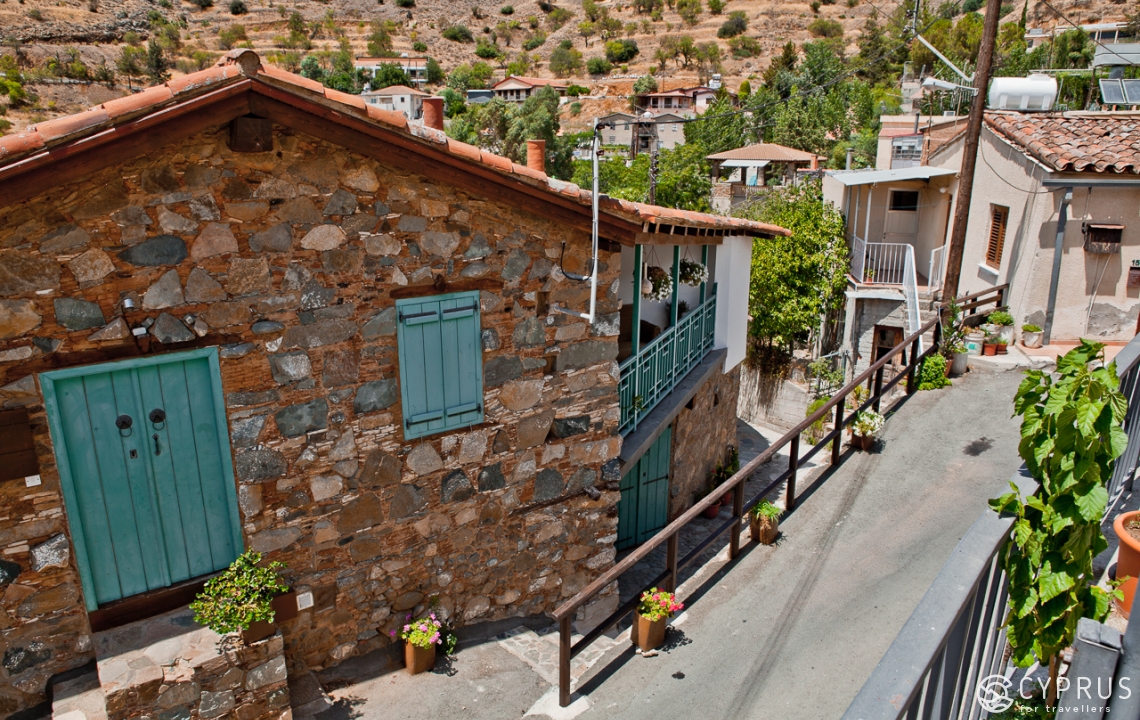
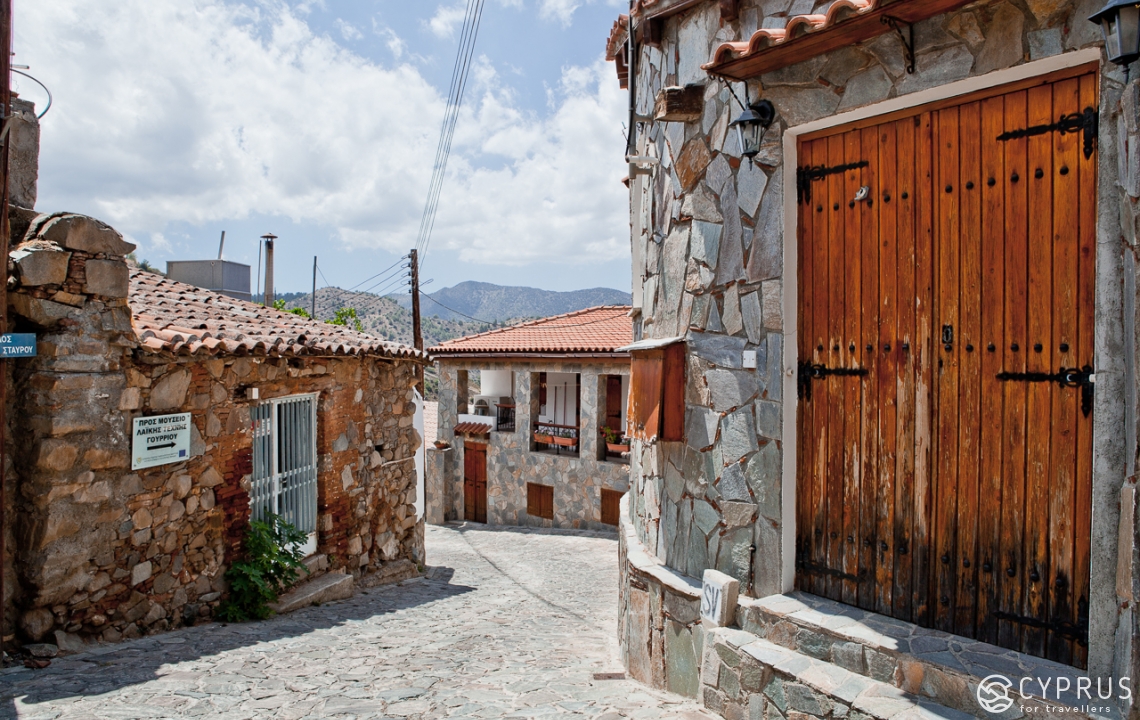
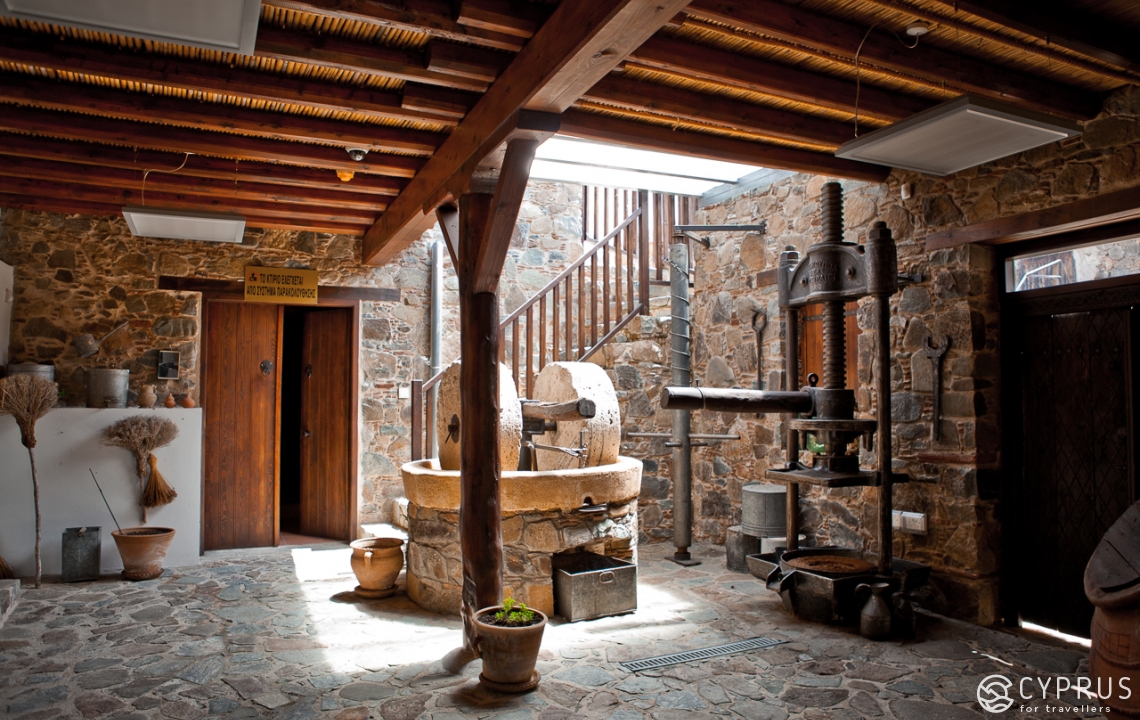
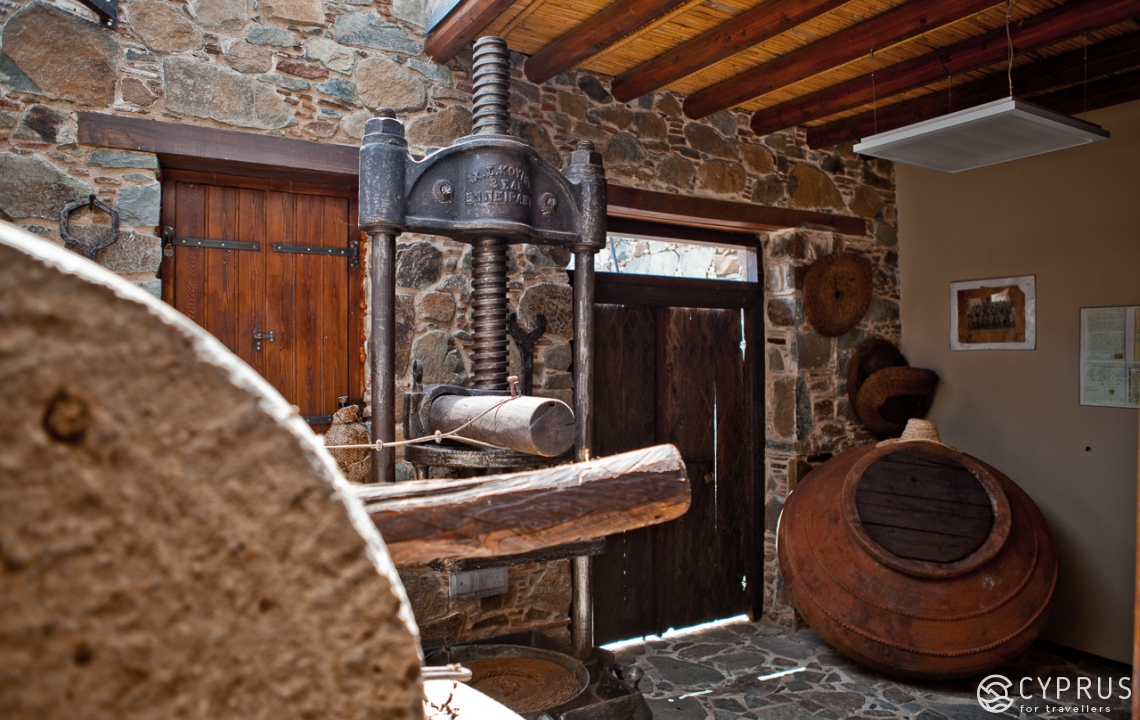
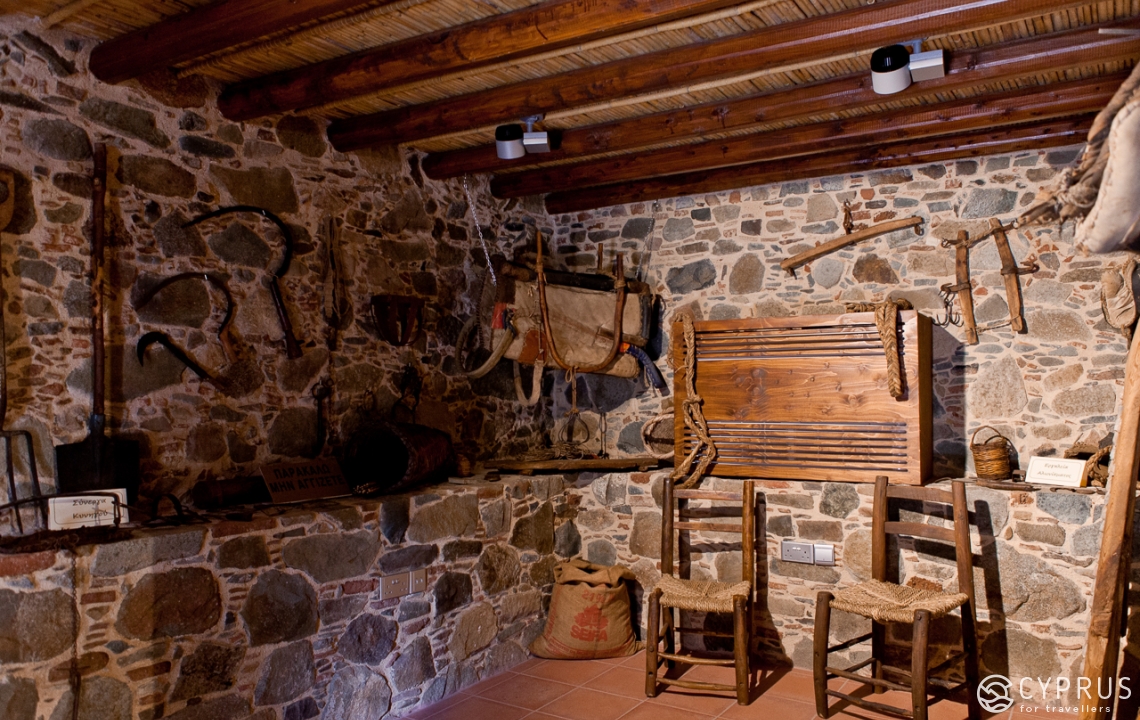
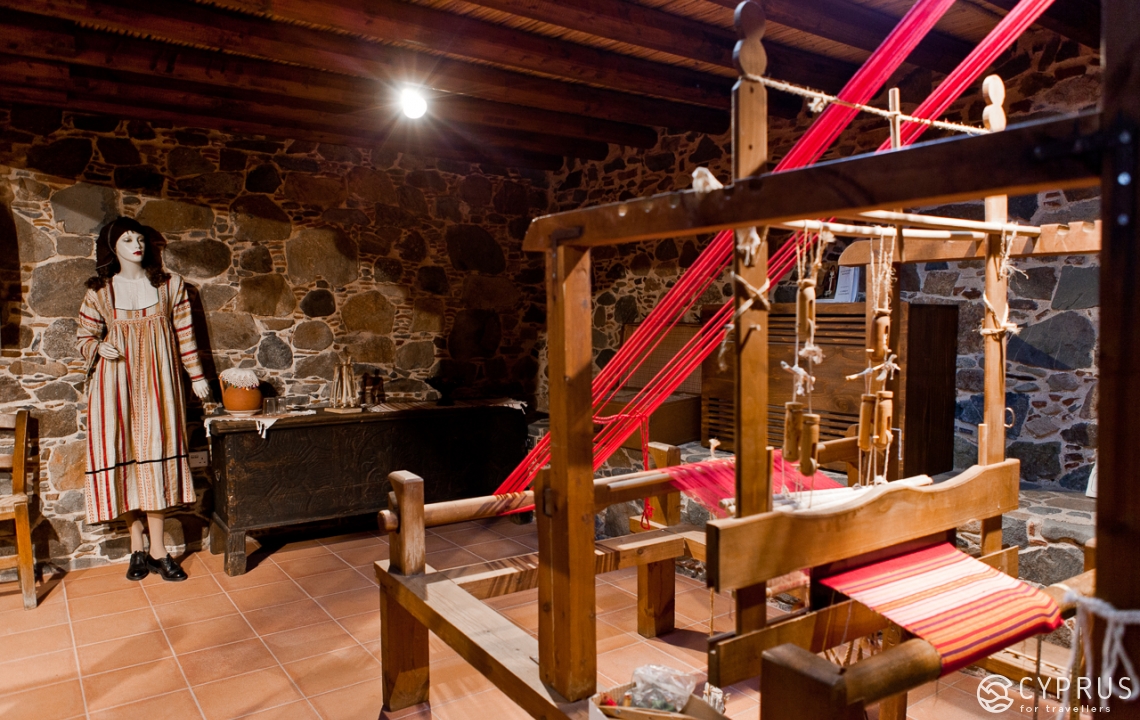
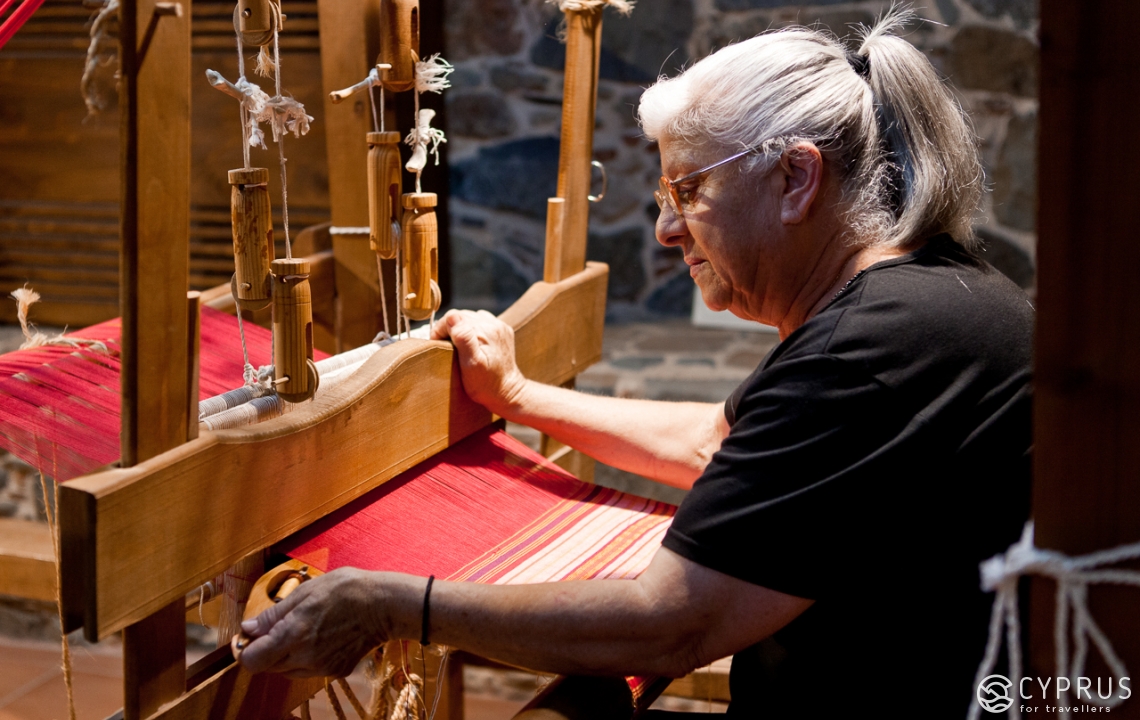
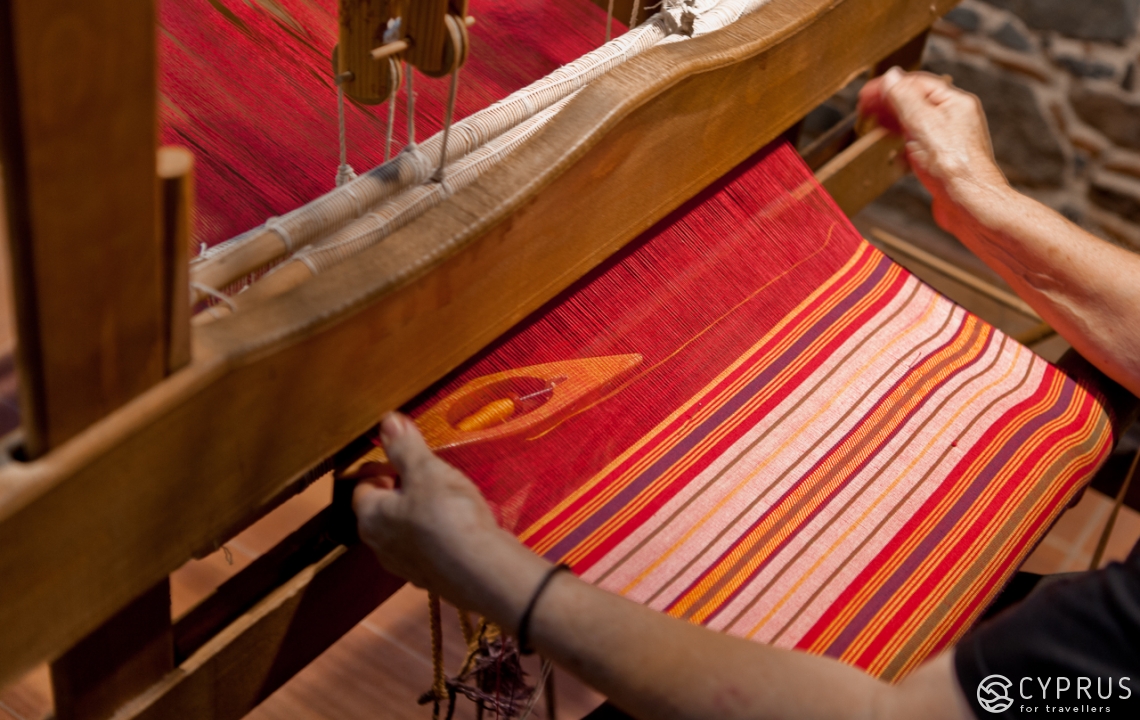
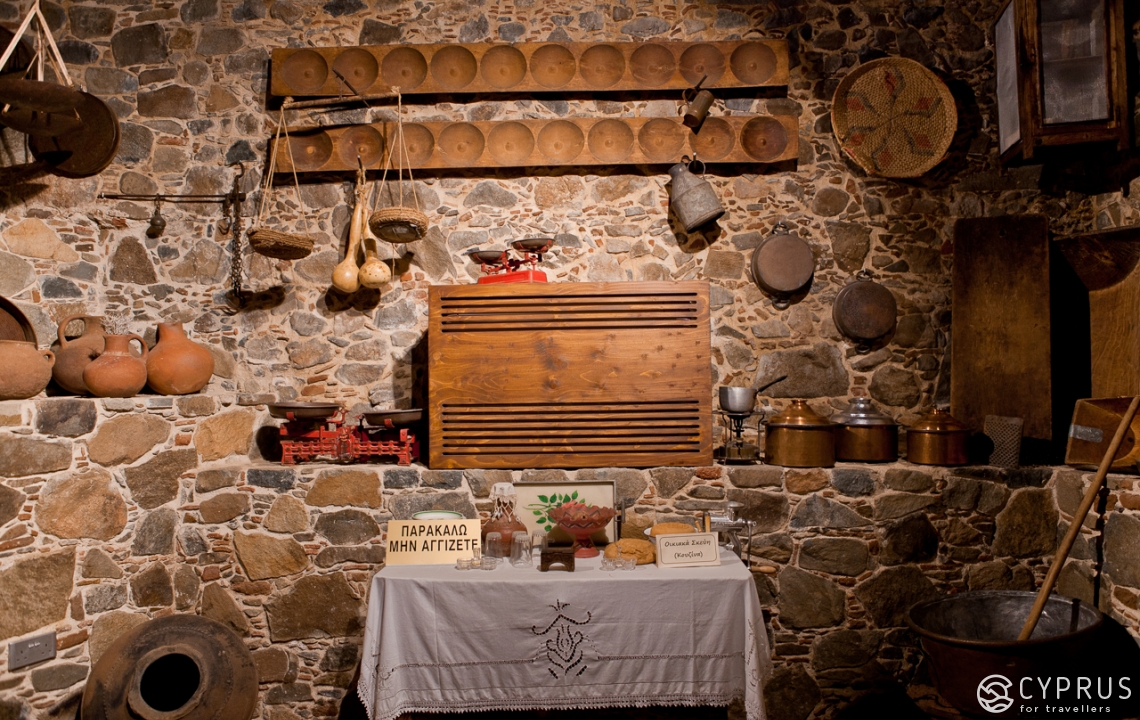
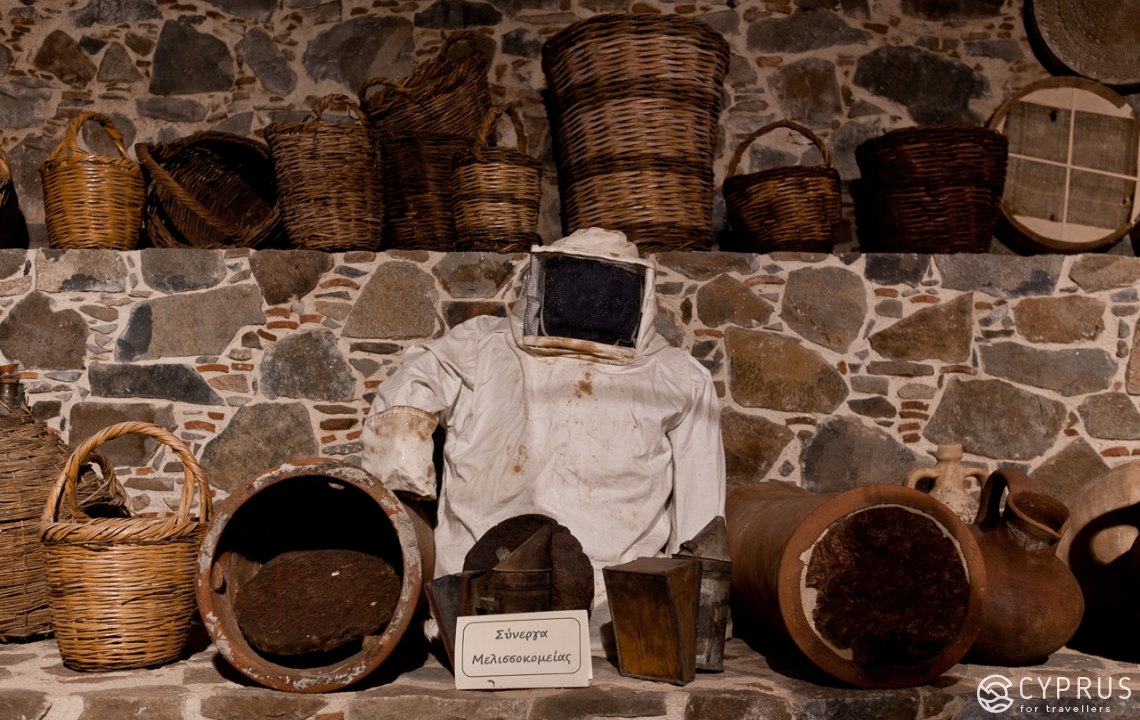
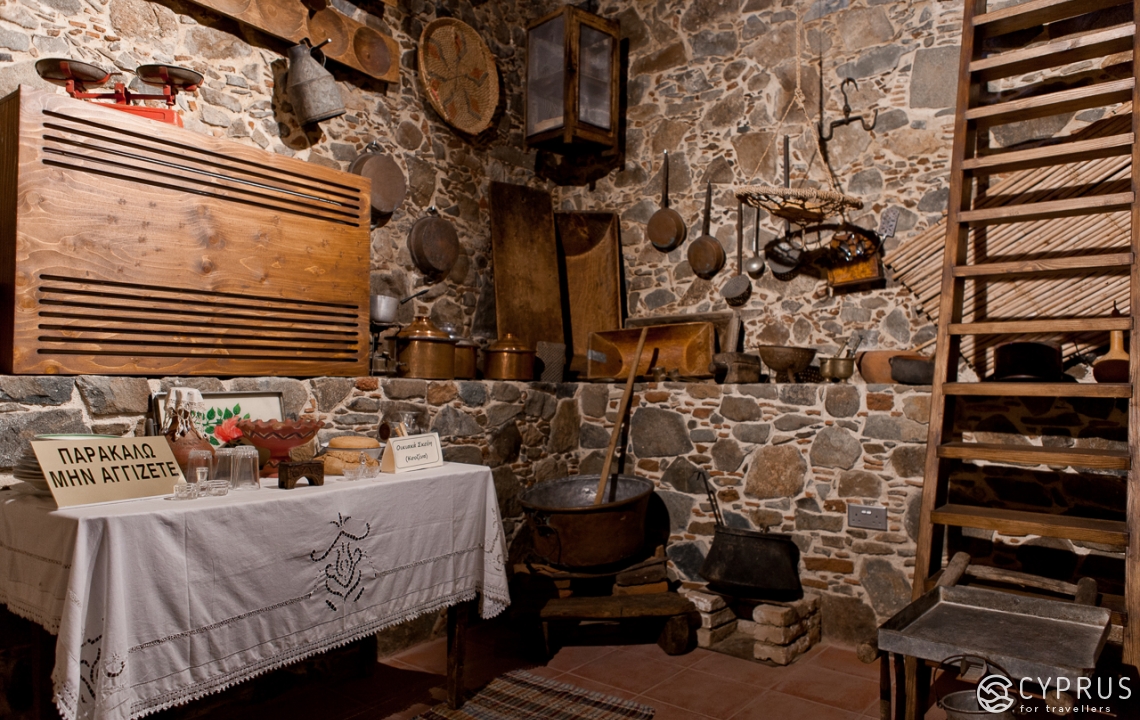
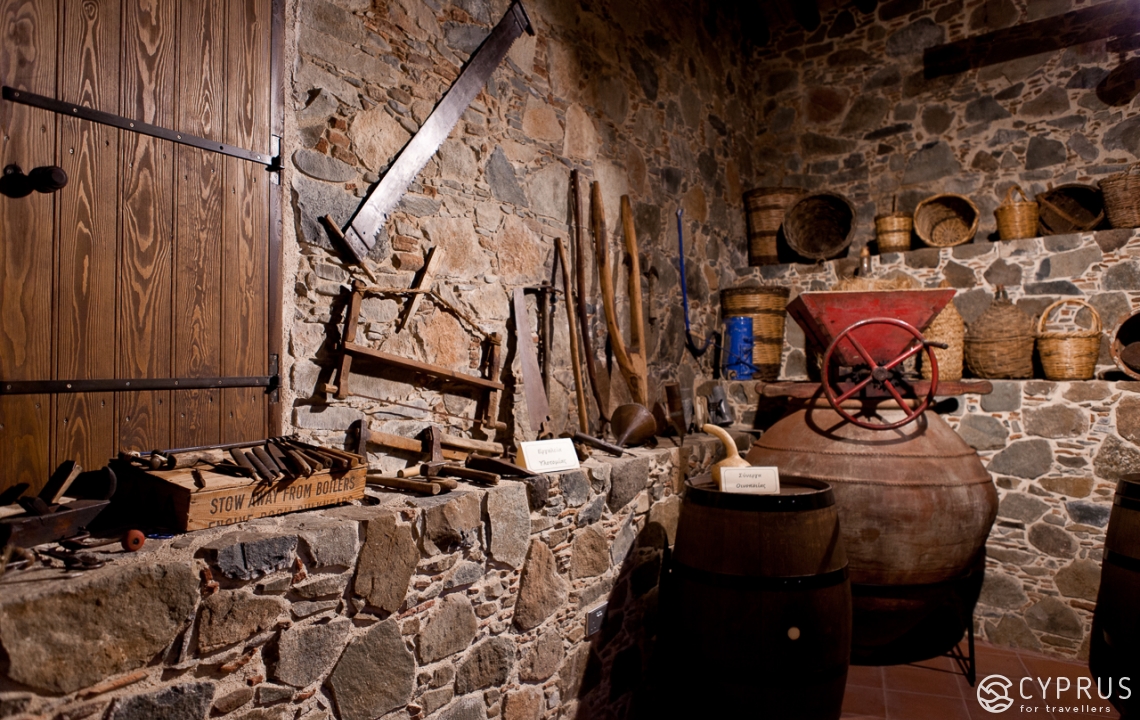
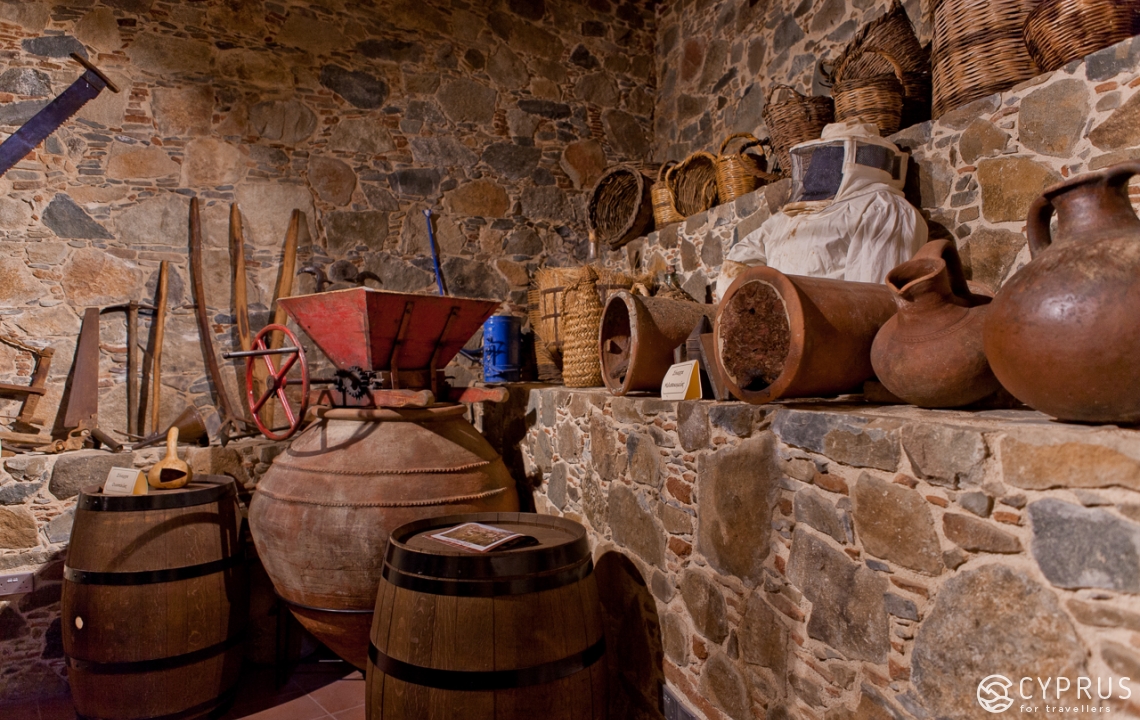
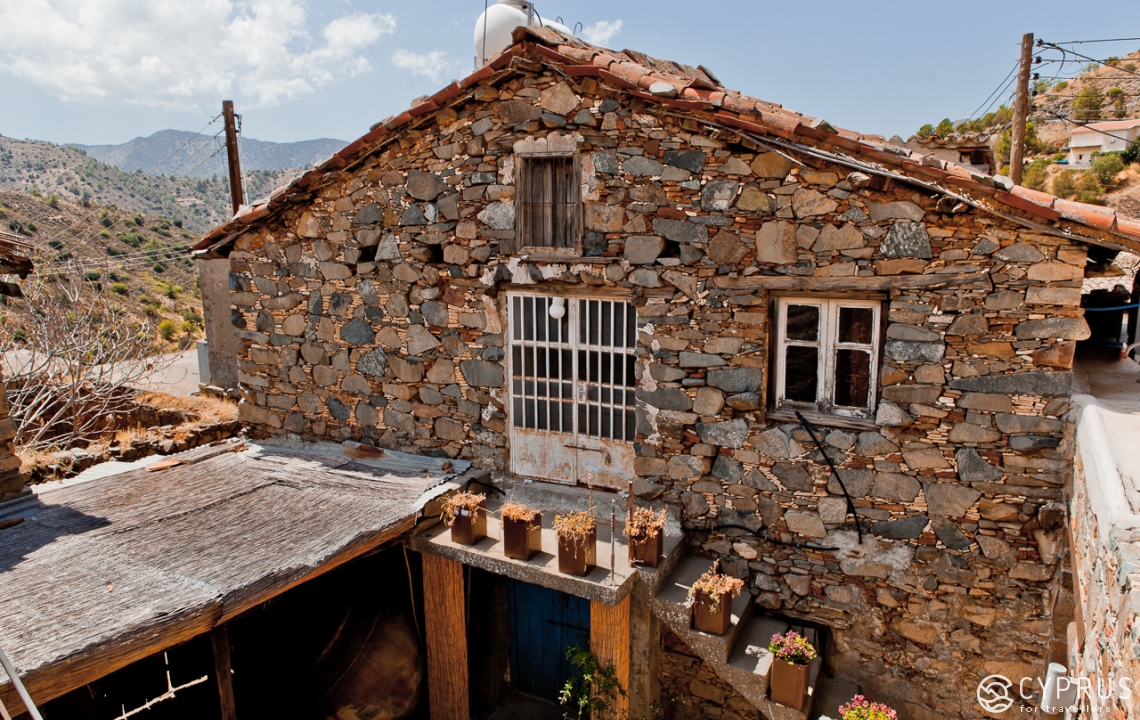
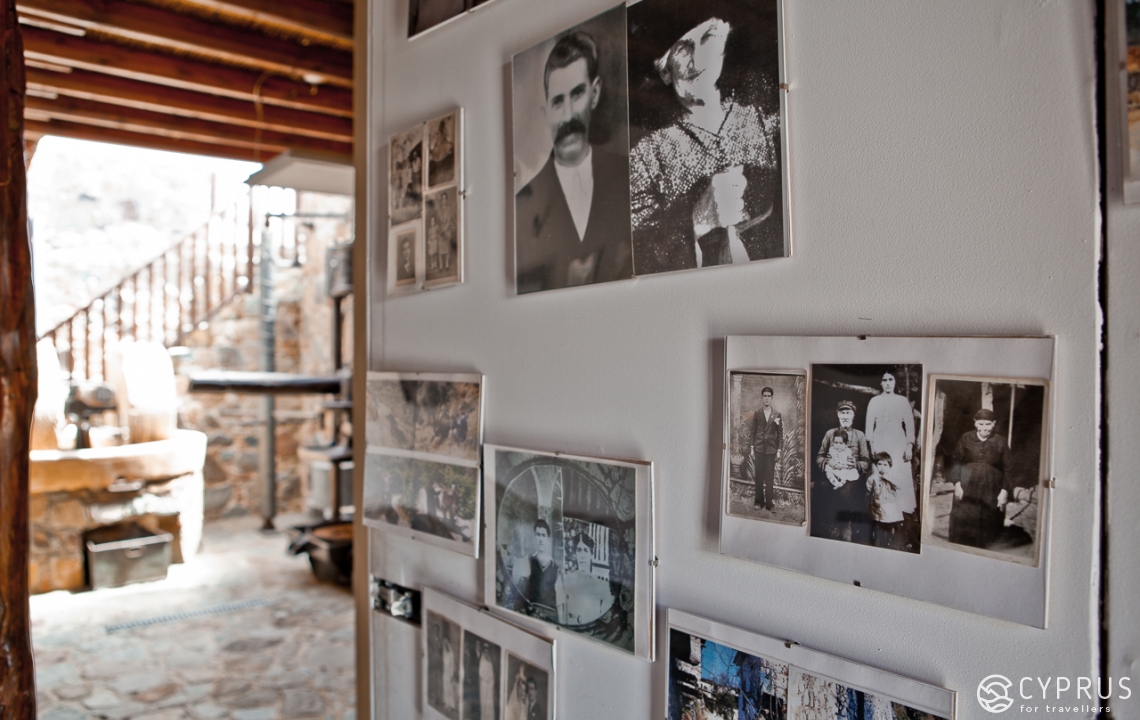
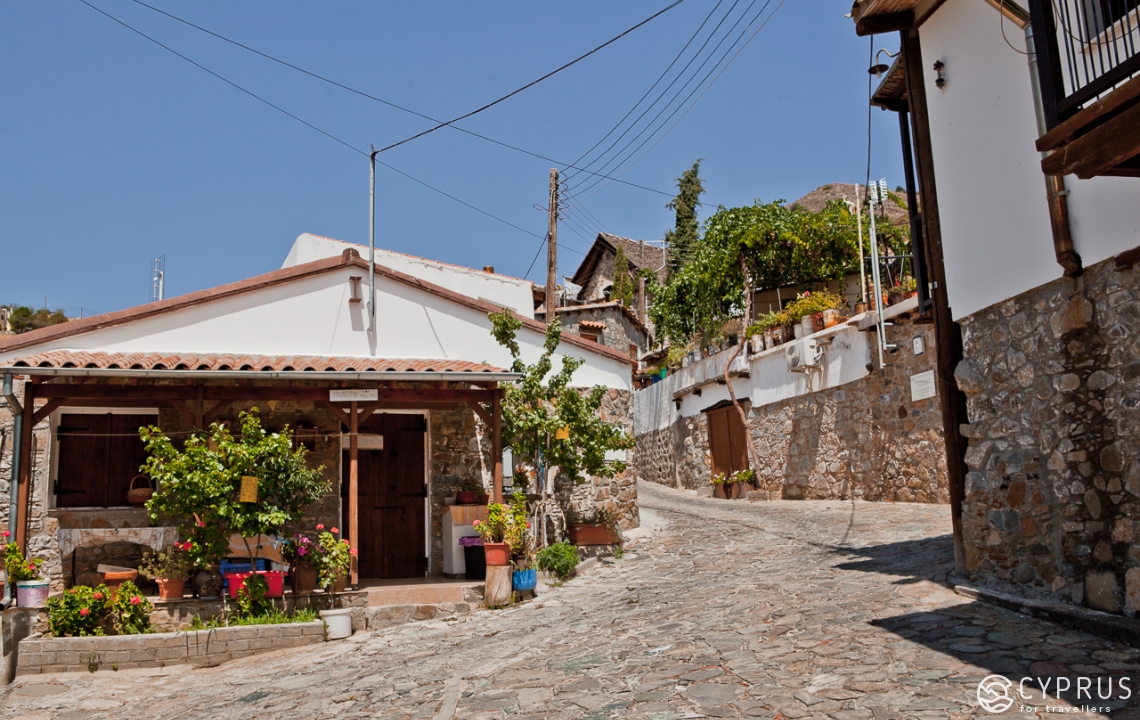
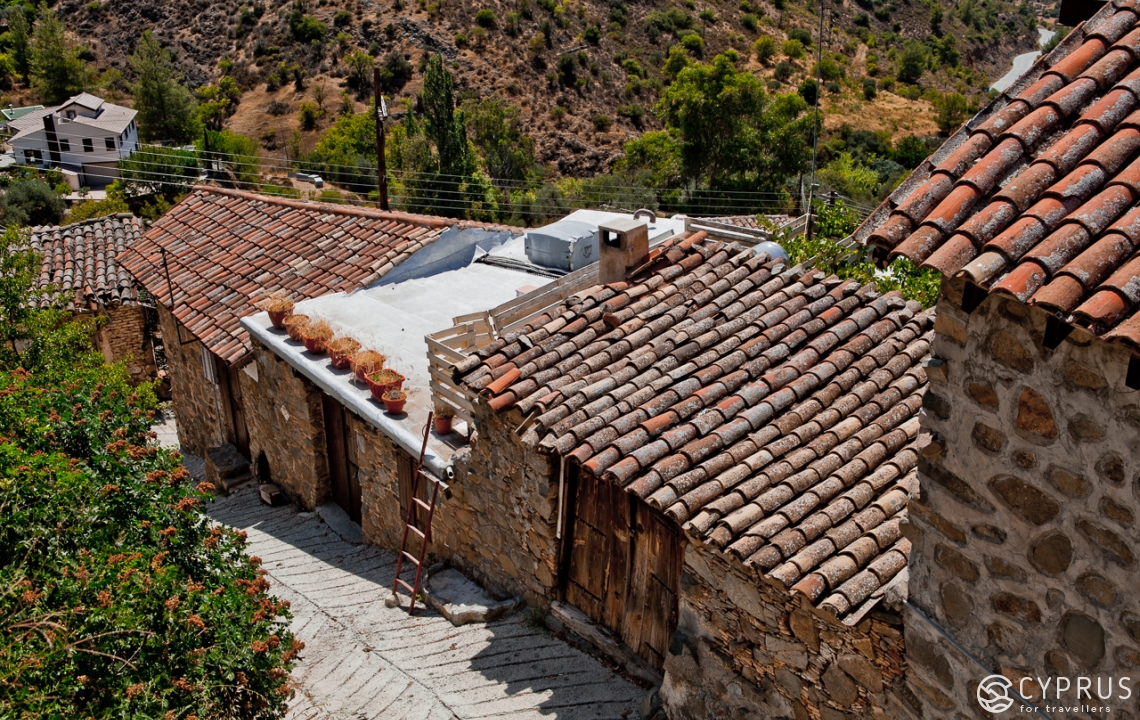
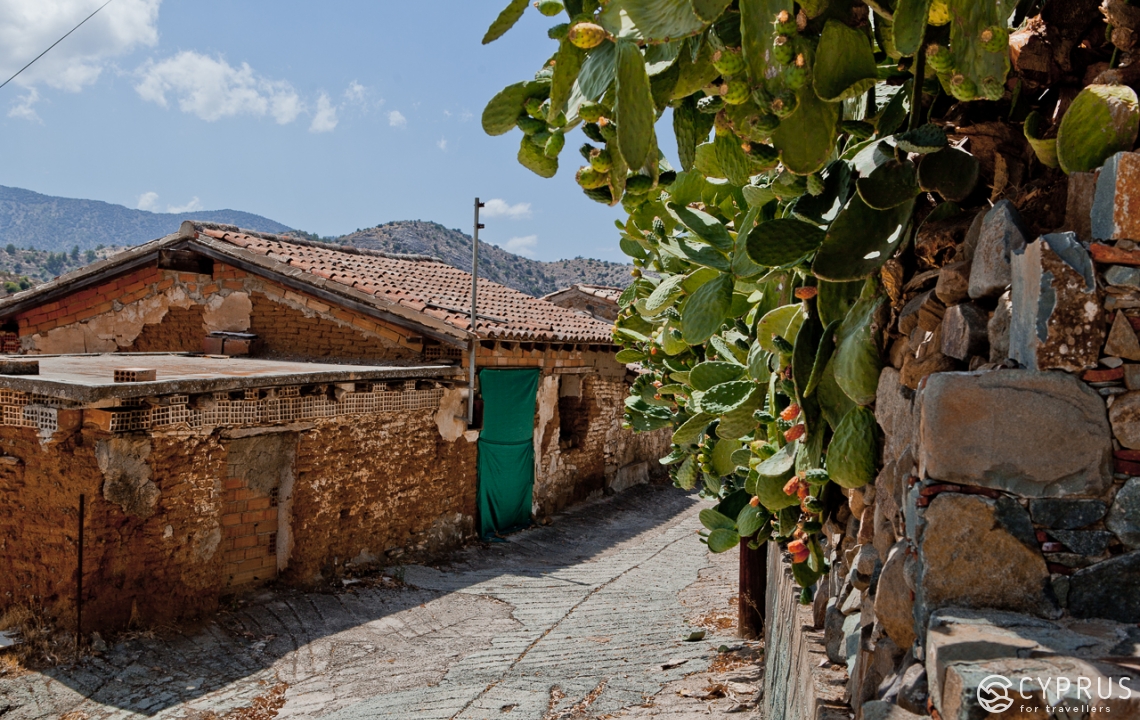
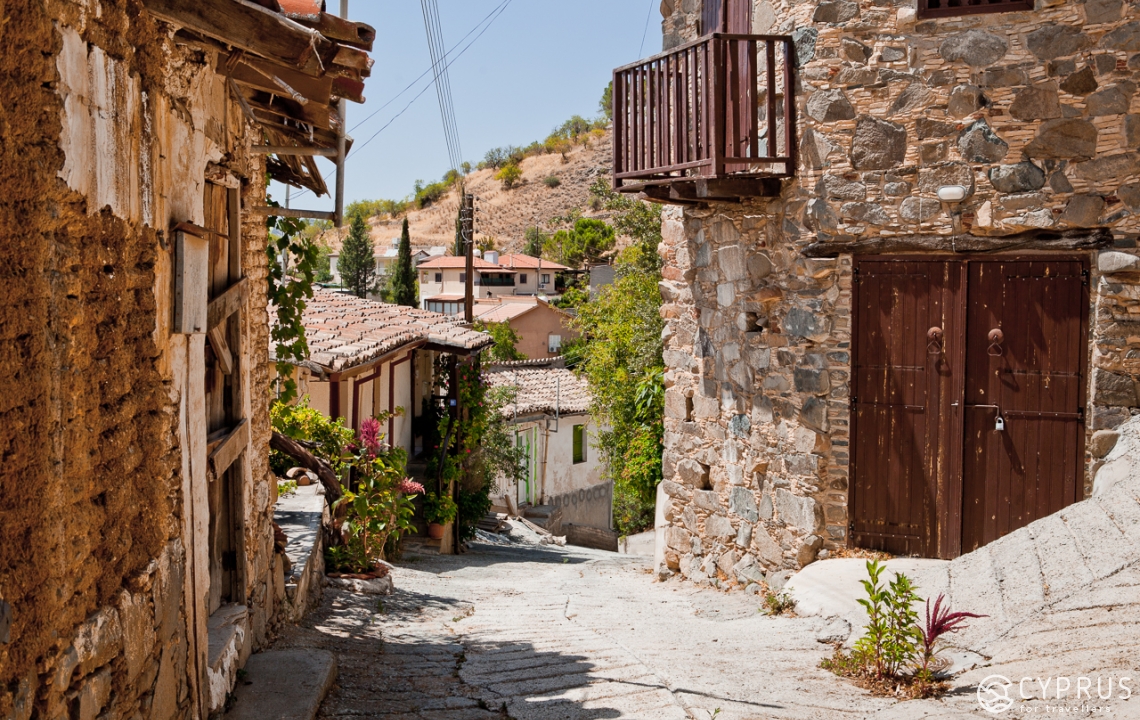
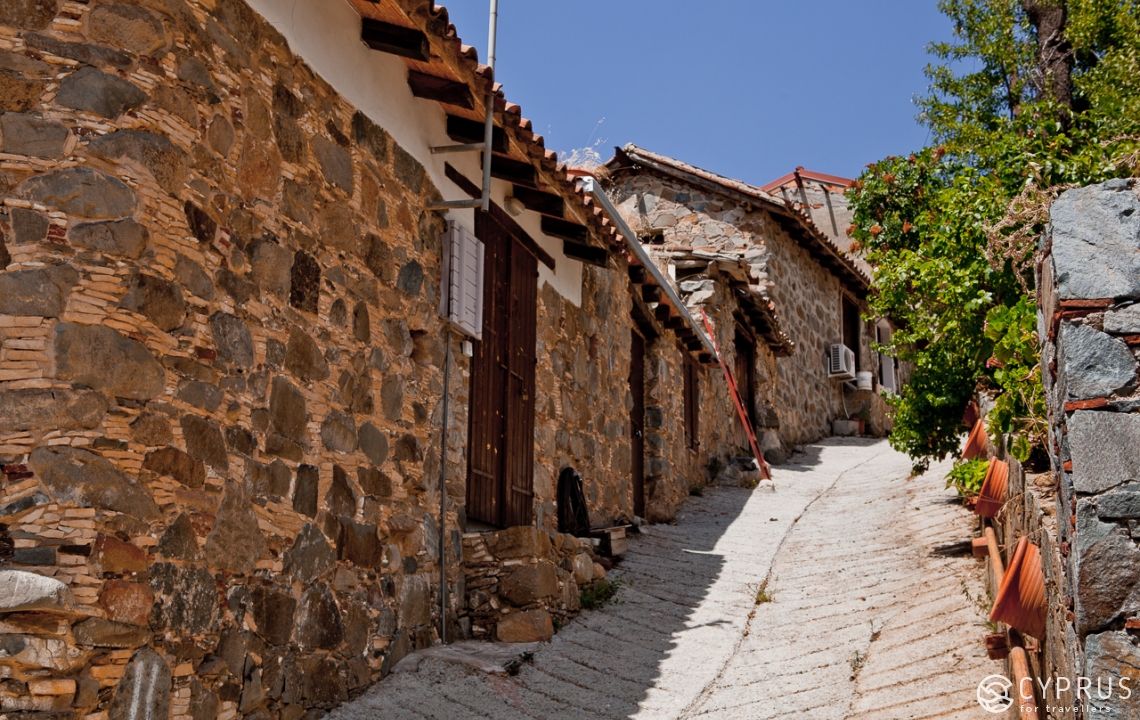
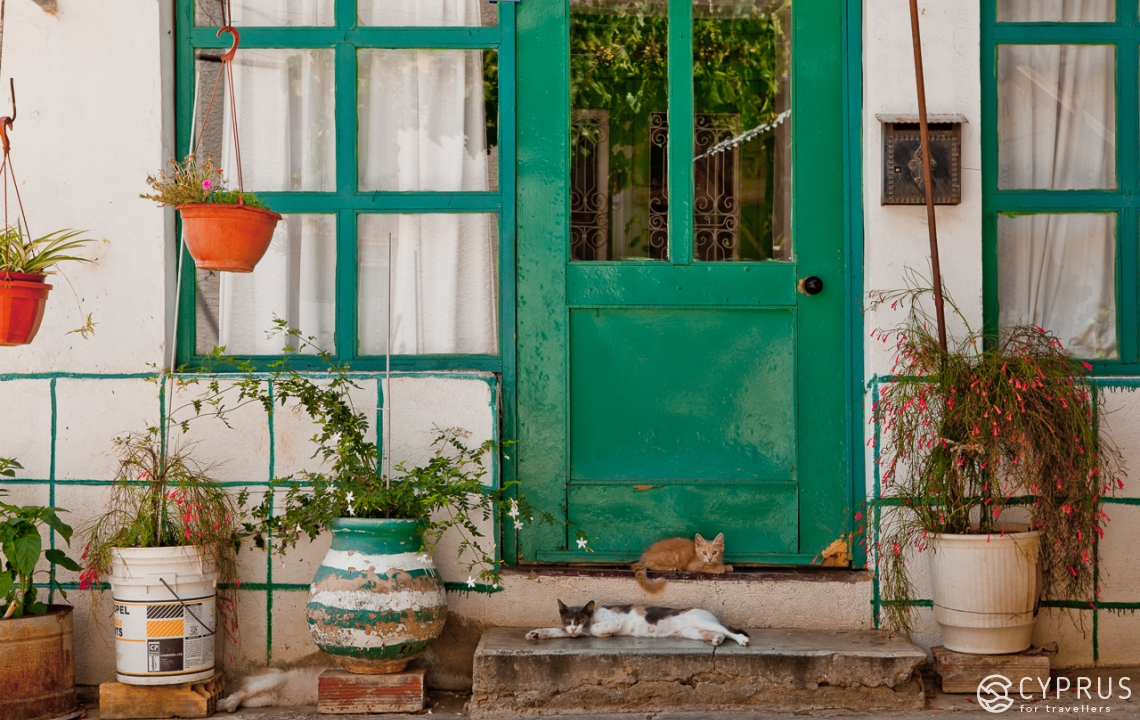
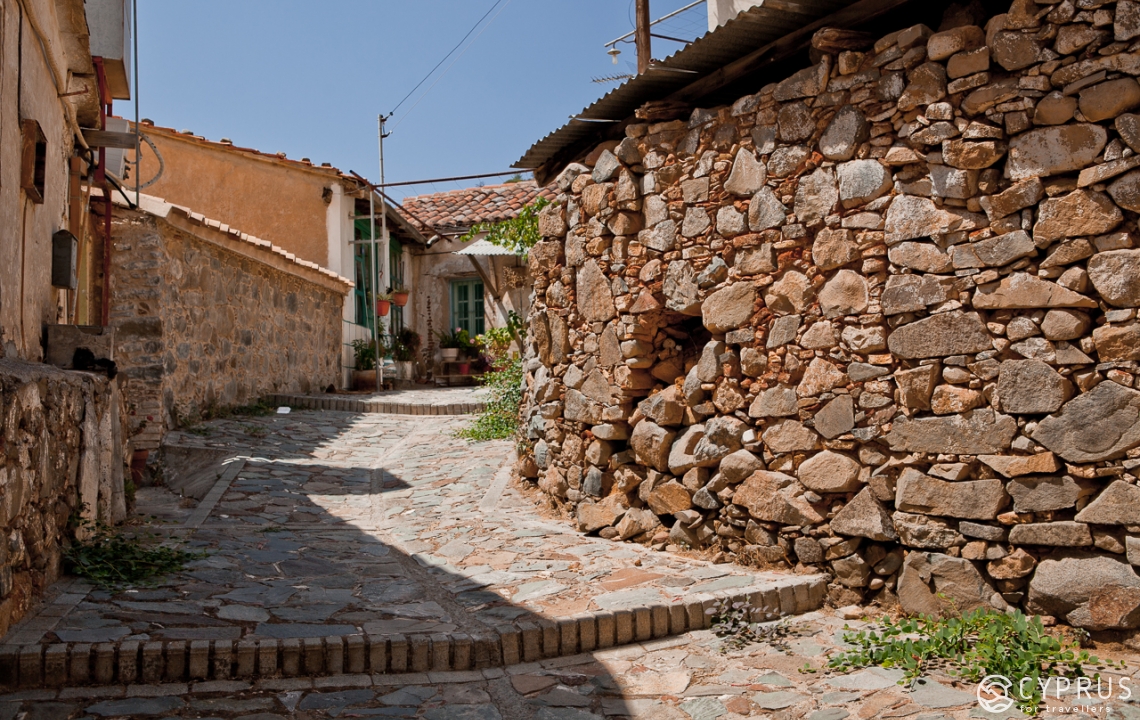
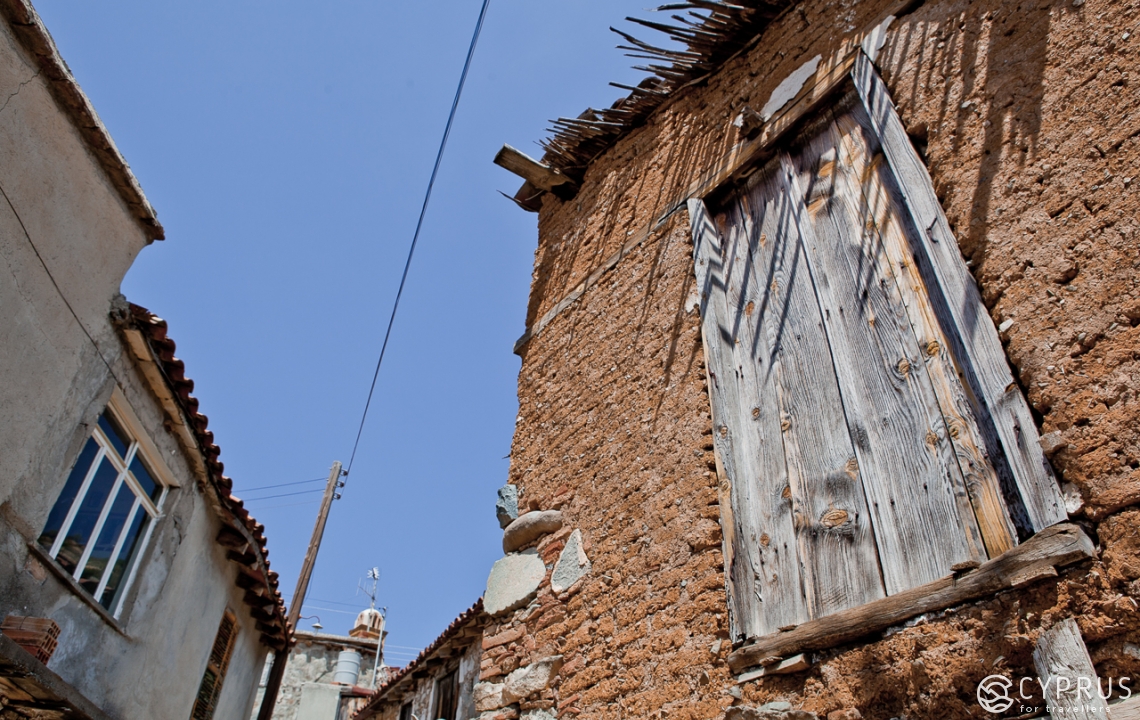
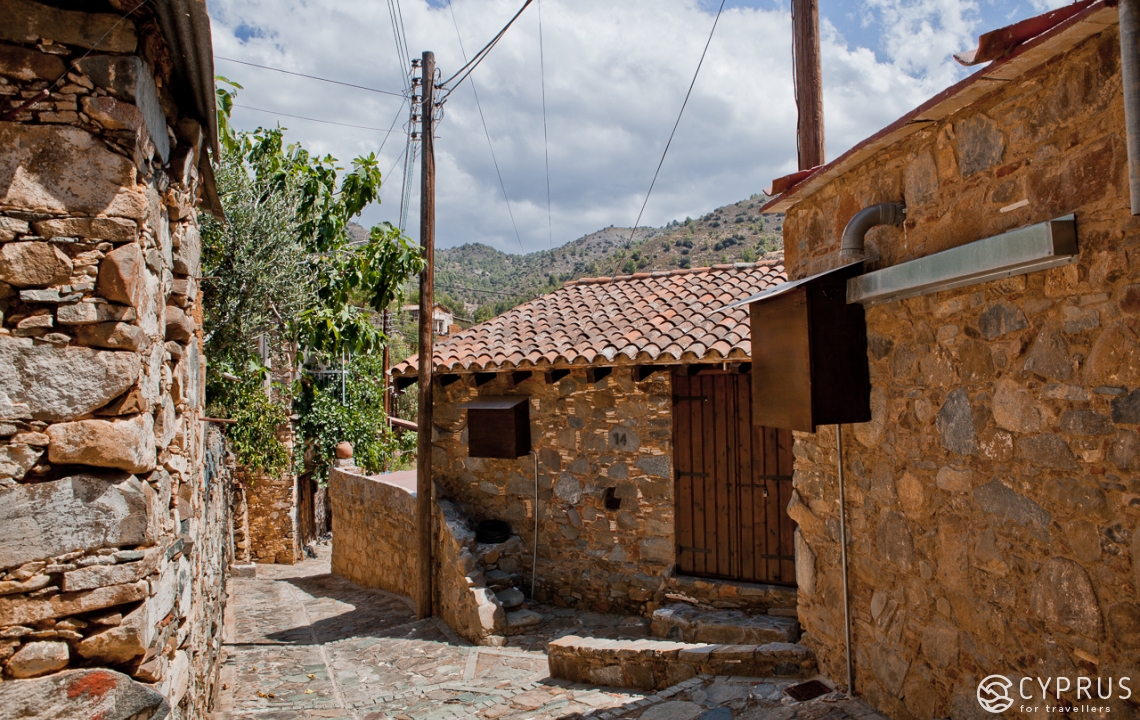
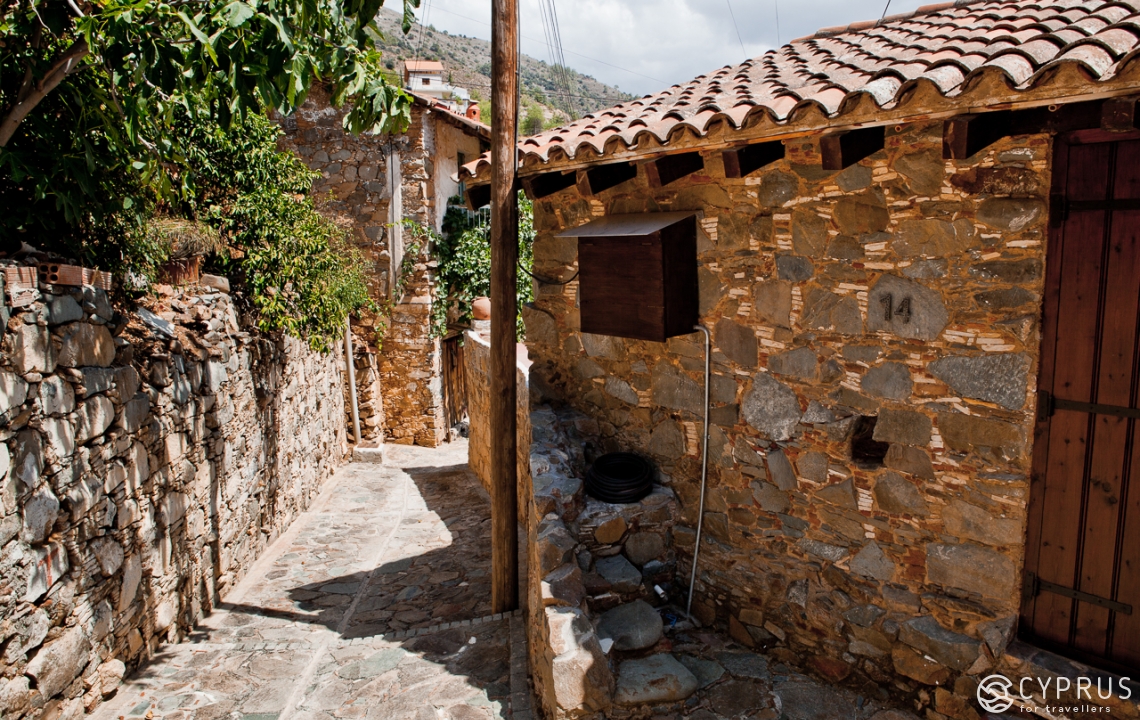
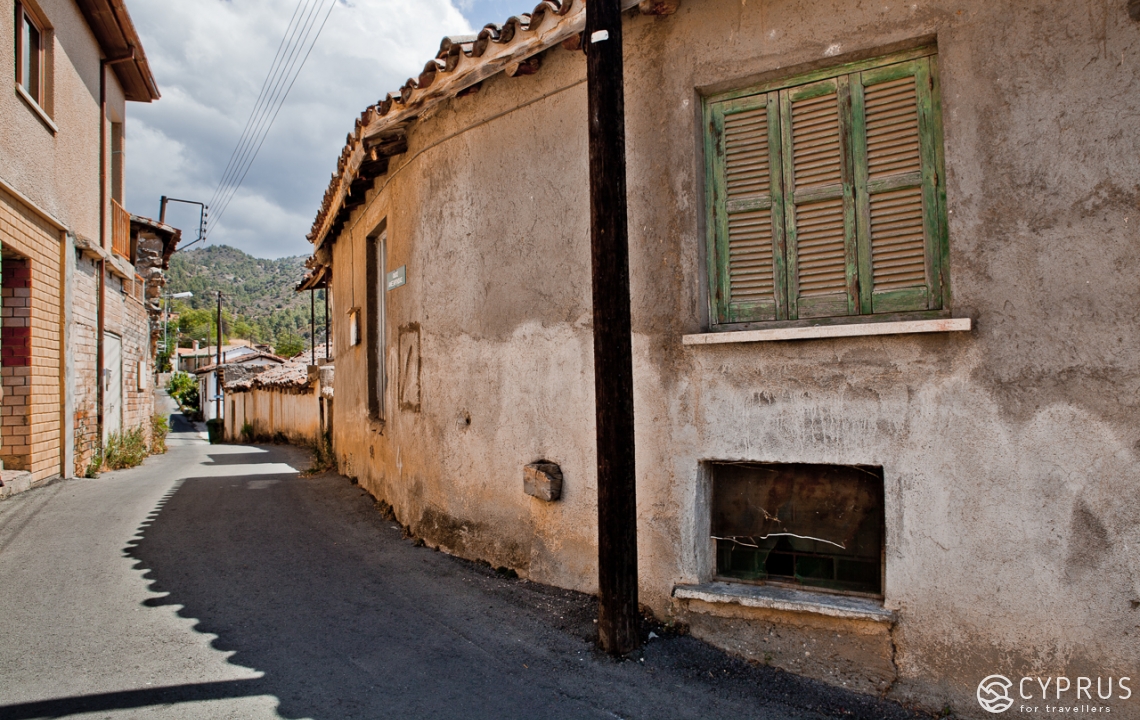
During our walk around Gourri, I started thinking about the way the streets were paved in this mountain area. The reasoning was quite simple and obvious: the answer was in the natural landscape. So for example, Nikis Street, which used to be one of the central streets in the village, begins right underneath one of the local houses.
Where to stay:
The village has two traditional guesthouses.
The first one is called «Aresti». It is pretty small (50 sq. m.), has two rooms and is located in the old part of Gourri. Guests enjoy a separate kitchen and a fireplace. Free Wifi is available in the public area of the guesthouse.
Telephone: +357 99649697
Address: 3 Andrea Stavrou Street
The second one is called «Miltiadis & Vasiliou».
Telephone: +357 22320755
And if you want to have a delicious meal, you can also stop by the «Saint George» tavern.
Getting there:
From the direction of Nicosia, drive through Deftera village (first take route B9, then Griva Digeni Street until you reach Kalo Chorio). Take route E904 from Kalo Chorio, which will lead you directly to Gourri.
Driving time: about an hour.
From the direction of Limassol: take highway A1 until you reach the ring. Then exit towards Pyrgos and drive down Grigori Afxentiou Street, passing through the Troodos and its villages. When you reach the Melini junction, keep dirving towards Odou and then towards Farmakas. Then take E904 to get to Gourri.
Driving time: 1 hour 15 minutes.
There is also a public bus running to and from Gourri. More information is available here.
If you keep driving down the same road that brought you to Gourri, you will end up visiting yet another, very unusual village.
Ficardou
This village is localed only two kilometrs from Gourri [6]. Located 900 meters above sea level and 35 kilometers southwast of Nicosia, it is also quite small and very scenic. Nowadays the village is practically an ethnographic museum.
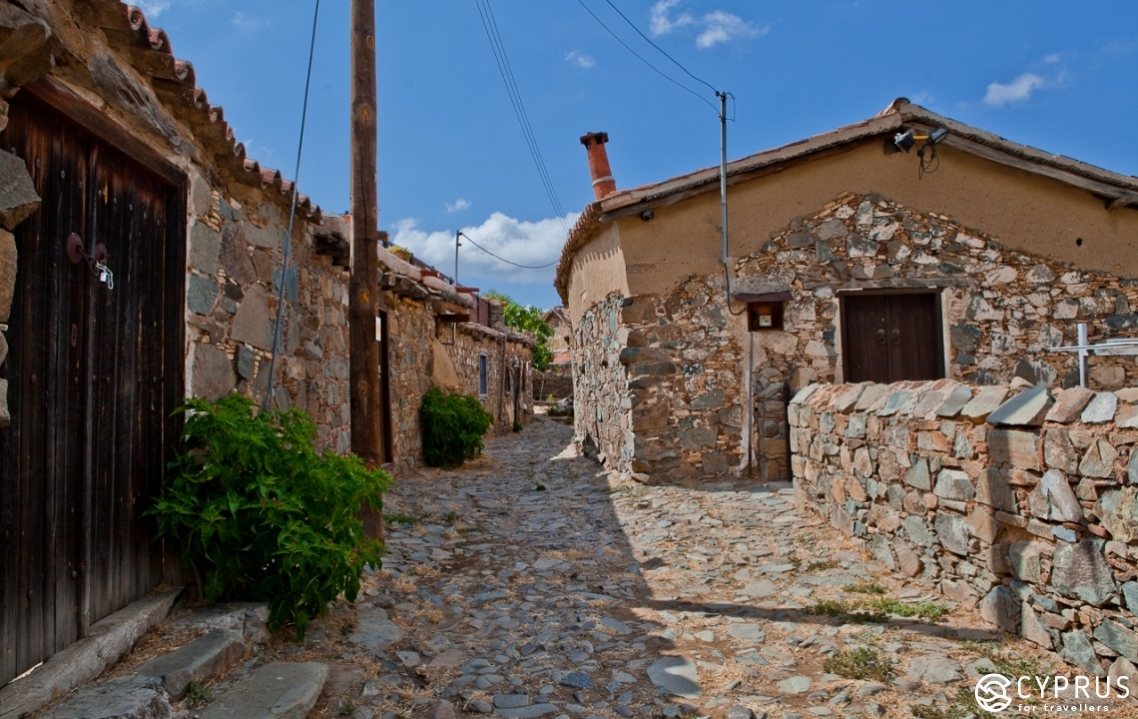
Here is a tad bit of history. The time period between the years 400-800 was marked by a series of upheavals and tumultous changes in Cyprus. The country was embroiled in a war on paganism on a state level and suffered persistent attacks and raids from the Arab world.
These events led to an armed conflict, which became particularly escalated in this mountain region. All of the local land was allegedly divided among two dominating clans: one from Kourion and one from Tamassos.
According to one theory, the name «Fikardou» originates from the Greek phrase «φυγά άνδρον», which means «hiding fugitives» that fled from the authorities and were recruited by the two ruling clans.
However, some historians have suggested that the village was named after important feudal overlords from the Luisignan period. Records mention that in 1473 some Thomas Fikardos, who was said to be the royal chancellor, was present at the bed of James II. Fikardos was allegedly the patriarch of one of the dynasties that shaped the village’s feudal history.
Many villages in Cyprus used to belong to feudal lords, which is why their names often seem to have Frankish, Venetian and other foreign influences. According to a number of monastery records, during this time period many fruit gardens and olive plantations in the vicinity of Fikardou were made part of Lythrodontas and also became some of the most lucrative forms of agriculture.
We also know that Templars oversaw most of the land in the Pitsilia region (where Fikardou is located) from 1195 to 1310. When Templars were persectured as heretics, representatives of the Order of St. John inherited all of the privileges of their predecessors, including control over Fikardou [7].
As far as the recent past is concerned, in 1921 the population of Fikardou was 133 people. With time, more and more people began to leave villages in favor of cities and the region’s population continued to shrink.
Today the village is home to only two people: a mother and a son, together with their goat named Fuchsia.
If you walk up the road (Platea Adelfon Christofi) until you reach the Church of Peter and Paul, you will come across a church graveyard, where, as the tombstones suggest, the remaining population of the village has recently «relocated».
Across the road from the church is a memorial that sits atop a hill and is dedicated to 4 young men, natives of Fikardou, who died in 1974.
Sorrow and silence rule this village of old, grumpy houses and barns, made of limestone and grey rock and covered in green ivy and basil (which for some strange reason is thriving here).
At the same time, Fikardou is not a village of complete oblivion. If you come here for the first time without knowing anything about it, you will be immediately surpised by how groomed and clean the village is, despite what appears to be, its complete emptiness.
We learned from one of the employees at the local ethnographic museum (which we will talk about later) that in 1978 the Cyprus Department of Antiquities named the village a national historic monument and carried out restoration work there, which in 1986 earned it the Europa Nostra award (EU Prize for Cultural Heritage).
Currently, the Department has ambitious plans to preserve folk architecture in the region. Meanwhile, the village is frequently used in cinematography as a backdrop for period pieces and as a tourist destination.
-
And this is how the empty buildings were restored and the village, which is now at run by the Department of Antiquities) was named a historic monument. Allegedly, it is also prohibited to populate the village in order to preserve its historically accurate image.
Fikardou is also home to a small, but very impressive museum dedicated to the history of the village. Despite the fact that the first mention of the village dates back to the 12th century, many of the surviving houses were built in the 18th-19th centuries (two-story stone houses). At the same time, they feature many signature aspects of 16th century architecture.
As we walked around Fikardou, we noticed an interesting engineering creation: dried plants suspended from the eaves of the roof that were probably used for protection against the wind, sparrows and martlets.
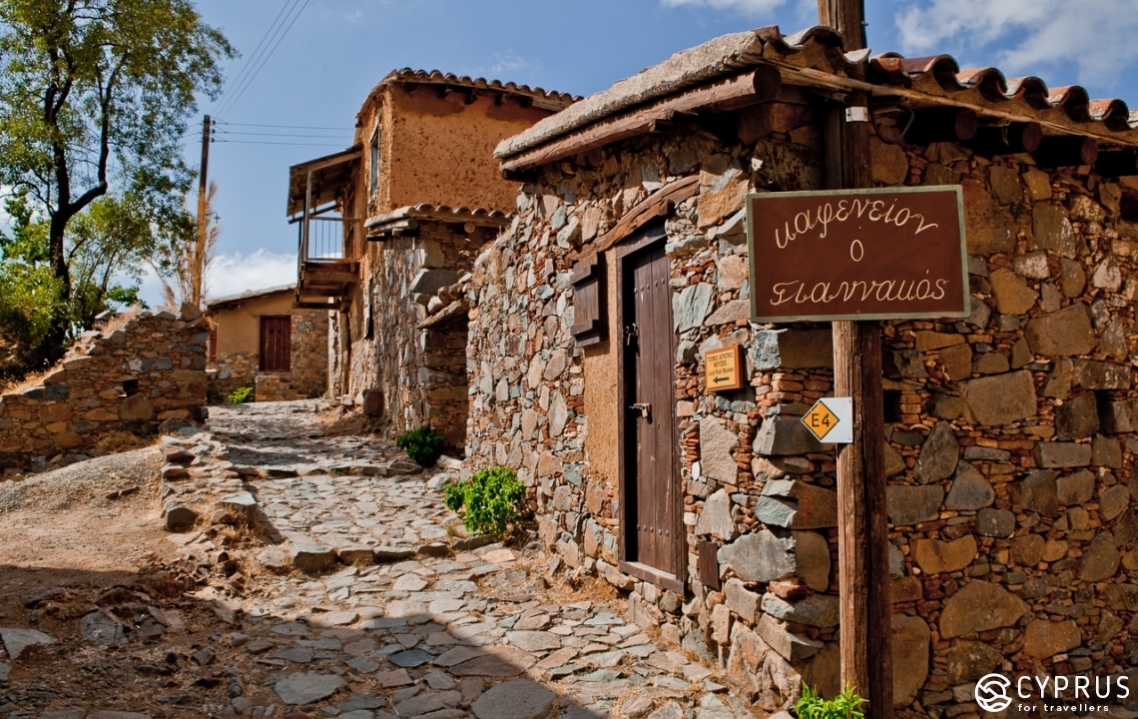
Another interesting peculiarity had to do with the ancient technology of paving the streets. In Fikardou the cobblestones are placed on top of hay — probably to ensure better cohesion. Old signs still hang on some of the streets and buildings, making you feel like you are in the invisible presence of those, who once used them.
The remaining representatives of the last surviving family in Fikardou own a small farm and offer fresh eggs, chickens and even bunnies for sale to those who are willing to buy.
The streets kept luring us futher and futher into their stone maze, but we were able to resist the temptation and headed towards a local museum.
The Fikardou Rural Museum
After we purchased a ticket, we entered a courtyard that is surrounded by different buildings. We were accompanied by a museum employee, who was also our guide, as we walked through a series of rooms: a studio with a weaving loom, a living room that was also used a master bedroom, then on through the courtyard and into a small accessory building meant for the couple’s parents, which with its two metal bed frames and no windows looked more like a crypt than anything else.
The museum and its exhibition were designed to function as an ethnographic complex: since the Cypriot lifestyle has not significantly changed over the centuries, many of the household objects used by the owners of this house have been exhibited alongside truly ancient and unique artefacts.
The House of Achilleas Dimitri (restored with the help of the Leventis Foundation).
The first thing you notice are the gigantic boulders that were used to build the walls of the house. Their massive edges and corners were not chamfered and keep protruding here and there.
The floors are equally impressive. Made using another type of rock, they look barely worn despite the more than 300 years of usage.
It appears that a house of that period was a single space used for different purposes and functions: people ate and slept here, hosted their guests and performed household duties.
The space seems sturdy, but not tall (perhaps the islanders of that time were shorter).
As we stood there trying to imagine what the residents of the house may have looked like, we heard a roar of a donkey coming from the outside. We were confused, because we knew there weren’t supposed to be any donkeys there. Our guide smiled and explained that it was one of the old casement windows making this sound.
We kept going. The furniture was antique and included chests, chairs with wicker seats and wardrobes. We also saw kitchen appliances, bunches of dried pepper and even elements of décor, such as the very popular during the British period carved shelves featuring grapevines, cherubs and birds, with porcelain china and antique smoked oil lamp. Nearby was a cage for small-size livestock.
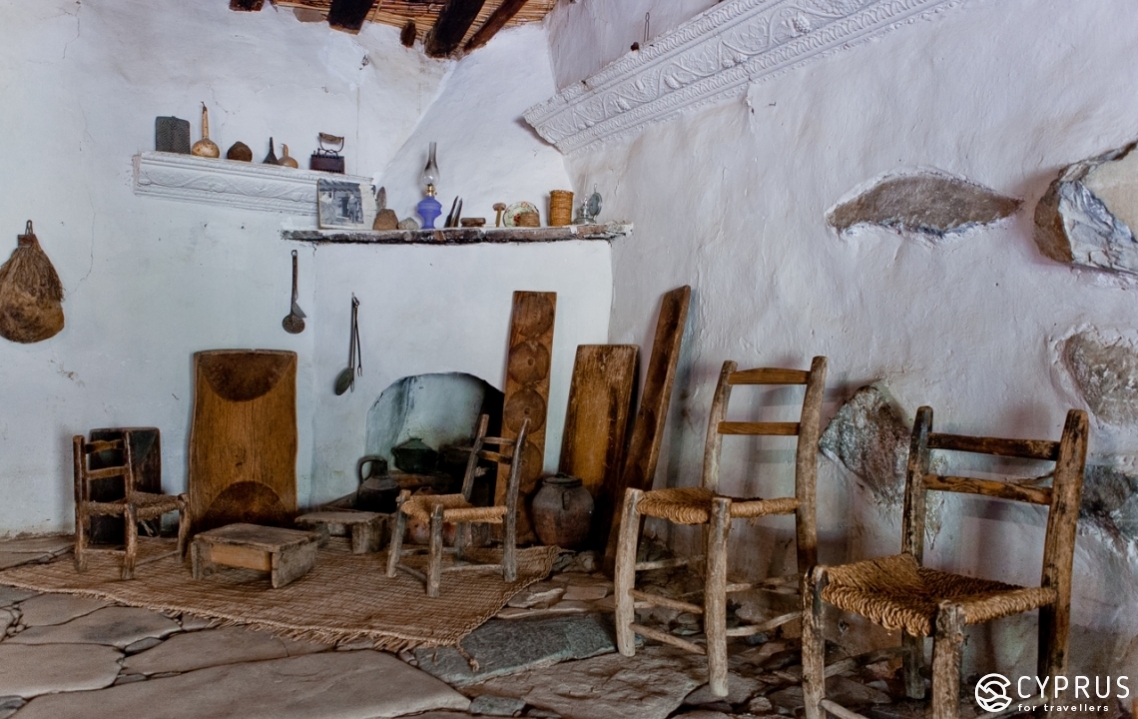
The outside terrace led into another space — a larger one with a flagstone floor (this part of the house was built later). It was also meant for different purposes: among many different things exhibited here it had a weaving loom and beds.
We kept walking until we reached the House of Katsiniourou (named after its last owners). The top floor of the house was residential, the bottom floor was used to store wine, food and agricultural devices.
This part of the exhibition complex is the most ancient one — it is more than 500 years old. It used be a winery (you can still see the antique press and large pitchers used to turn grape juice into wine).
The top floor must have been added much later. Just like most of the buildings of that time period, it had to be multi-functional. For example, this one was also used to make Zivania (the special device is here as proof) and cook kleftiko. And nearby is a small pen used for the donkeys.
It is fascinating to imagine that the house had been inhabited up until the recent times. And despite this, you won’t find any traces of modern life here.
The museum also showcases photographs and other archival material on the process of restoring these rural homes.
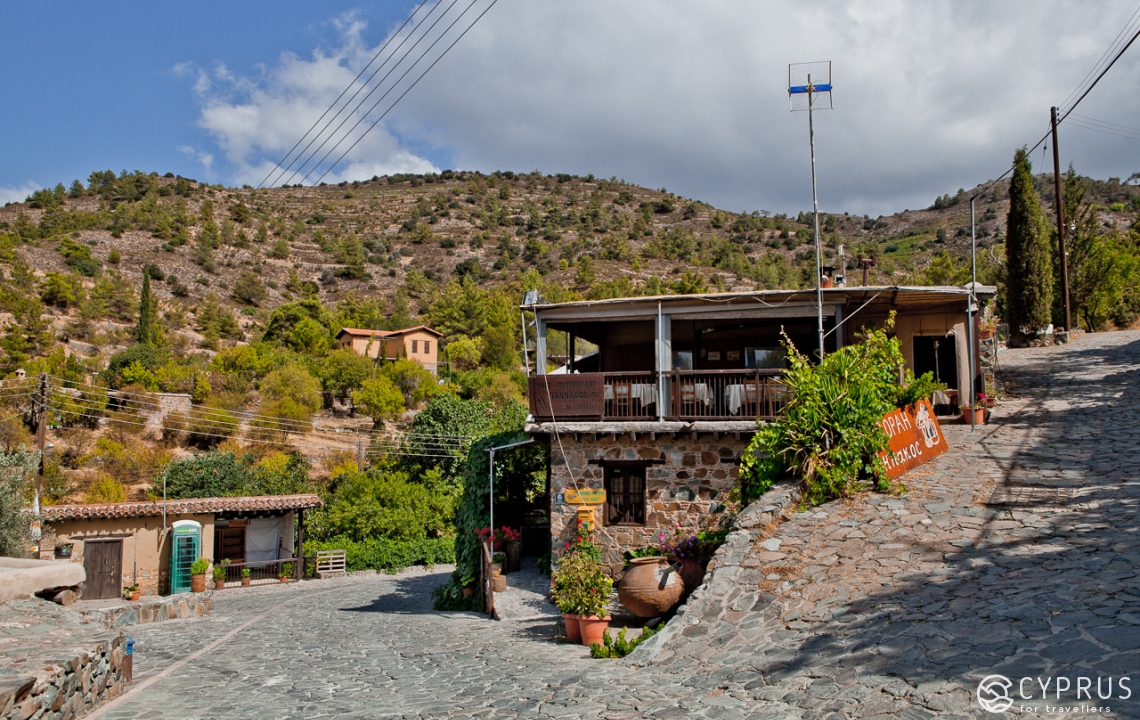
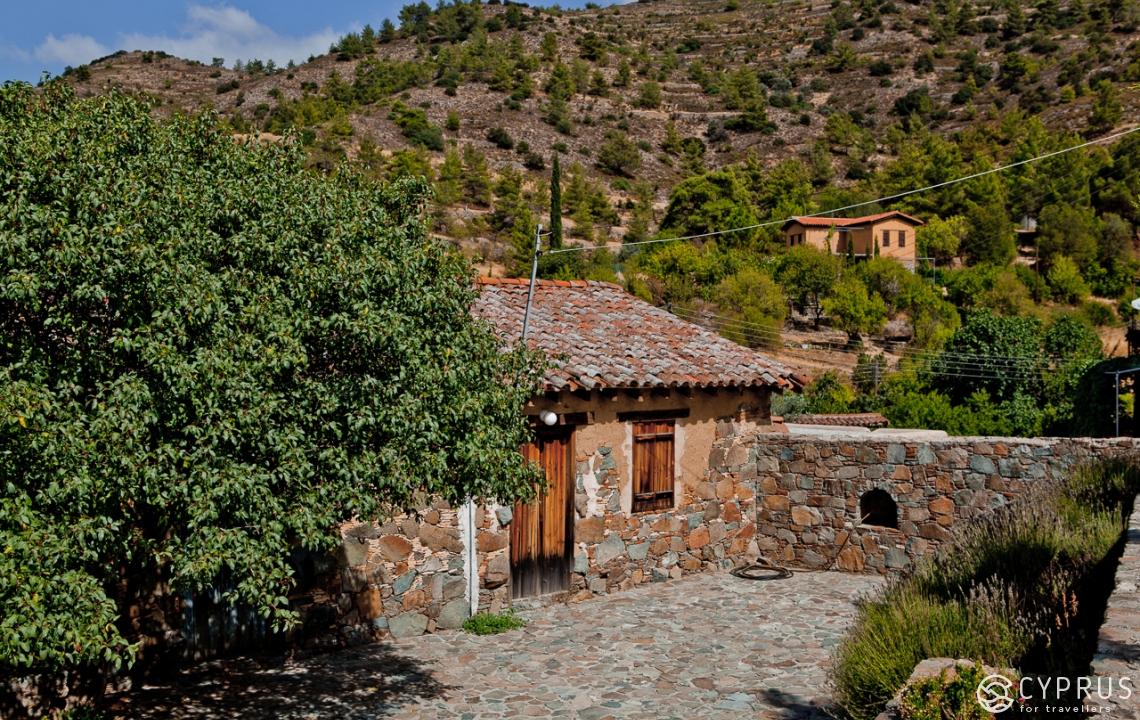
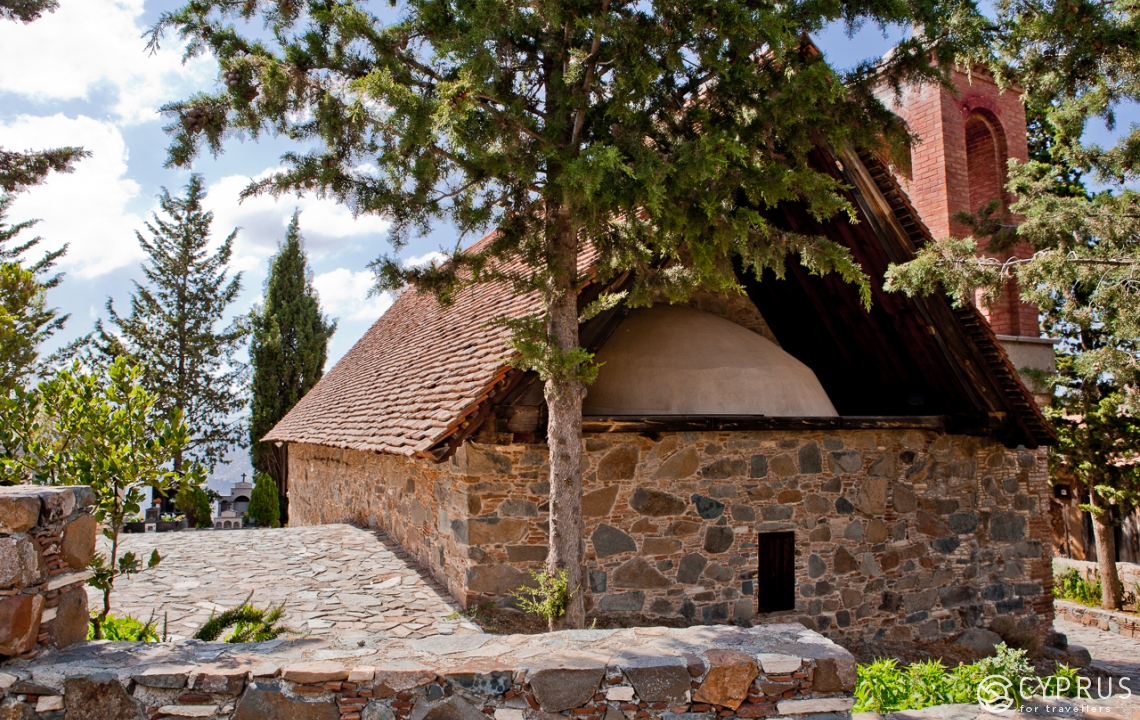
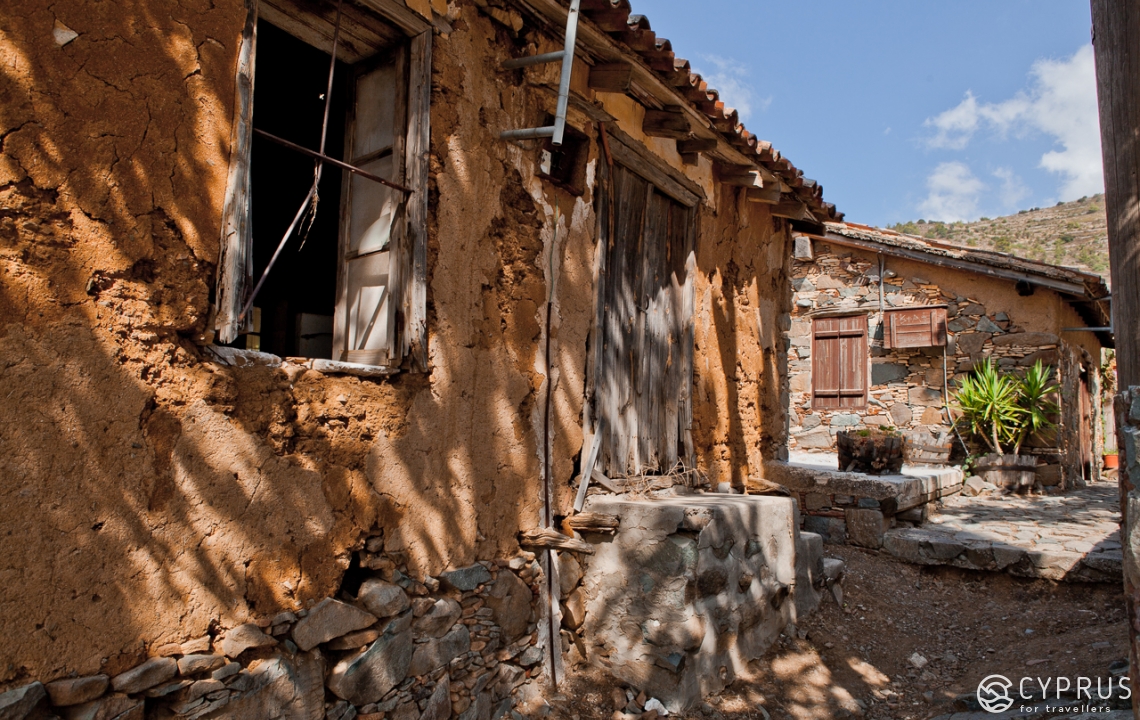
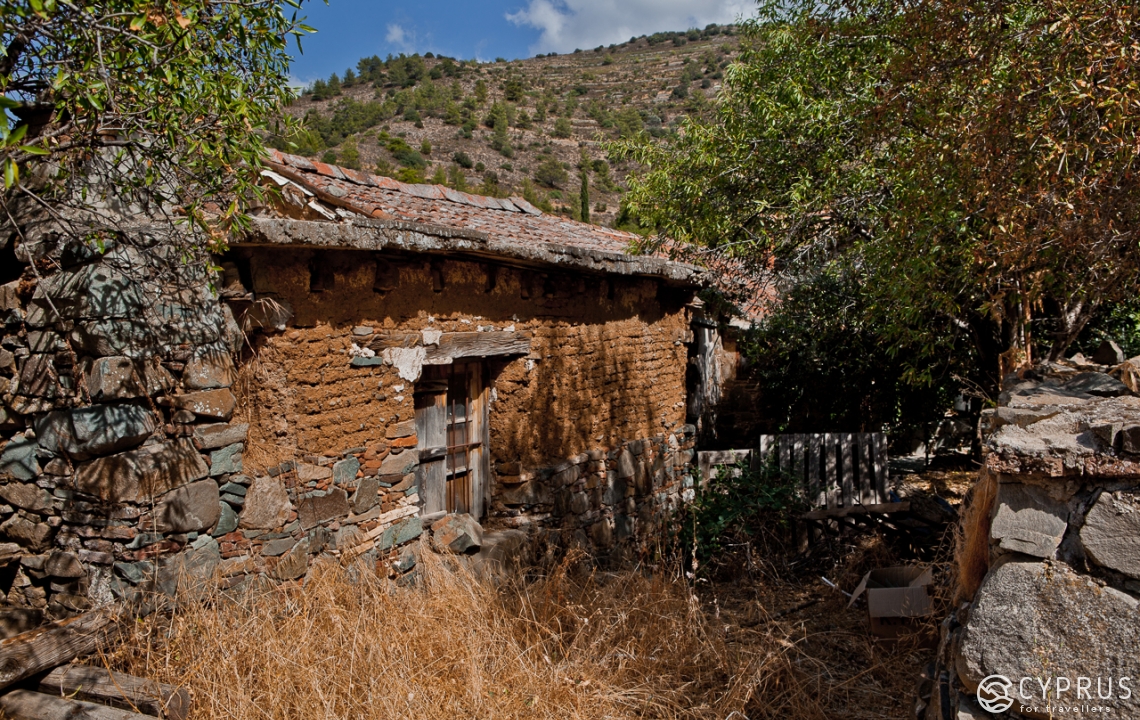
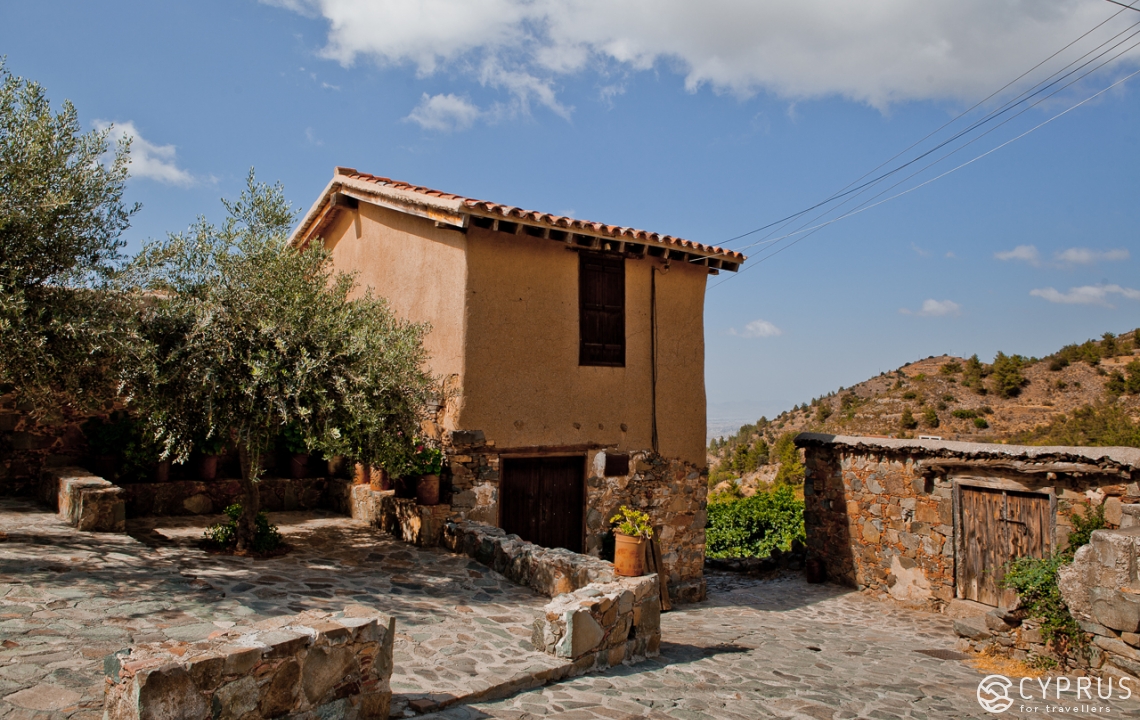
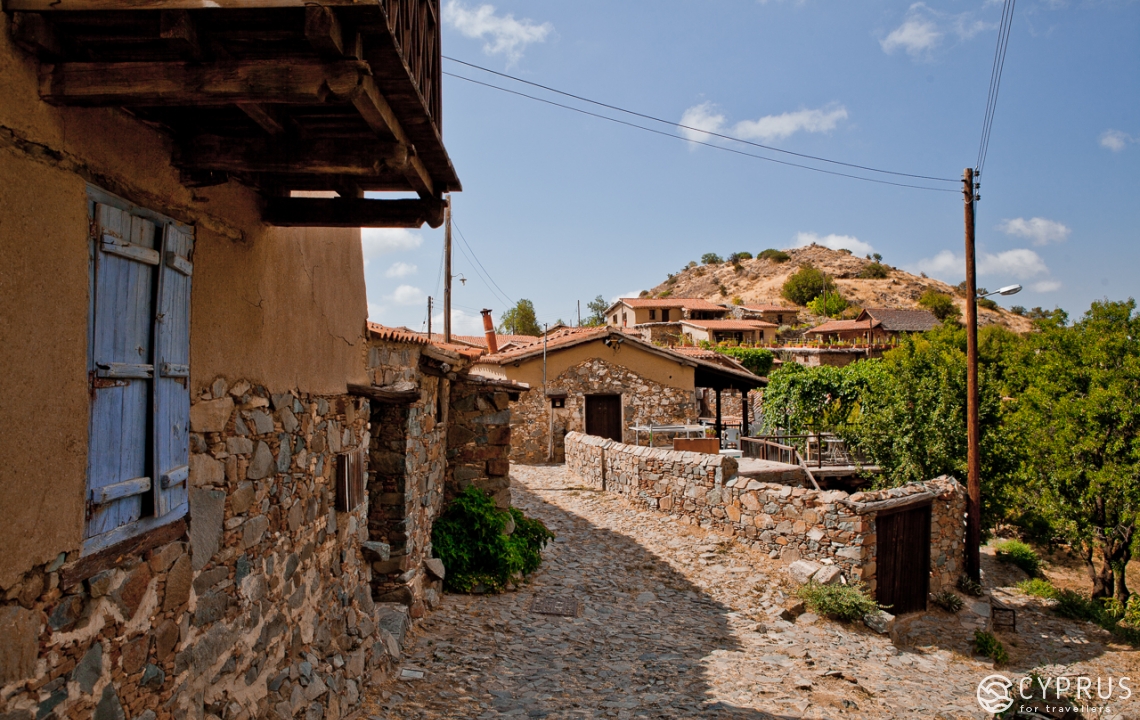
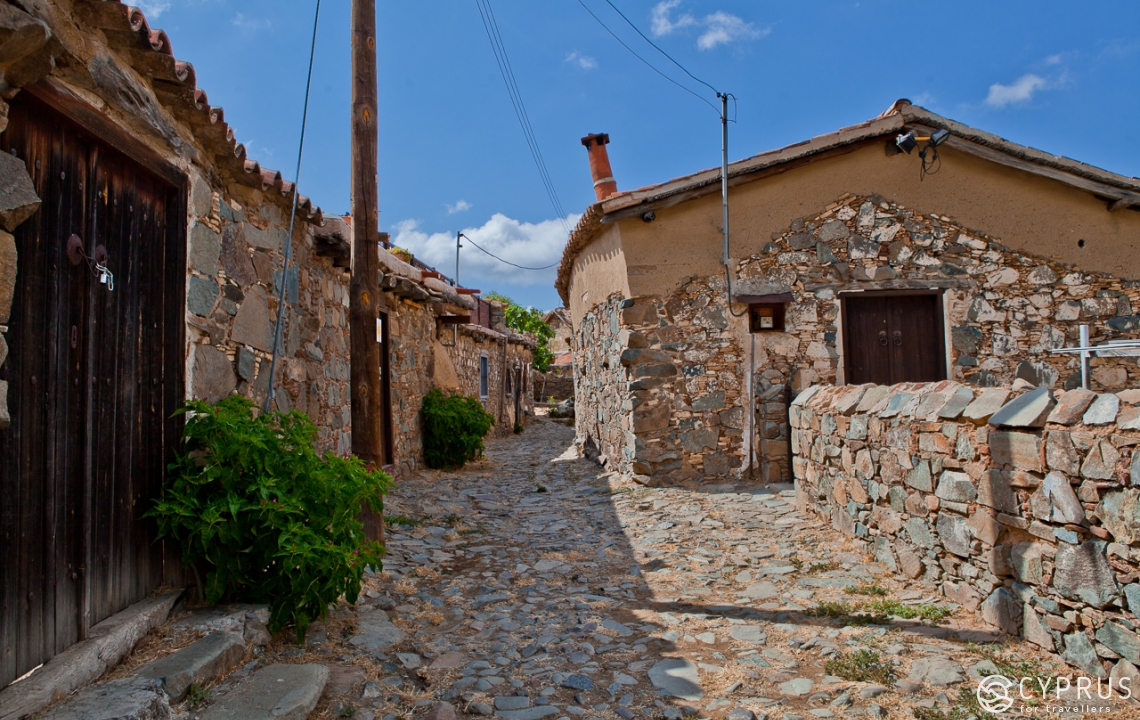
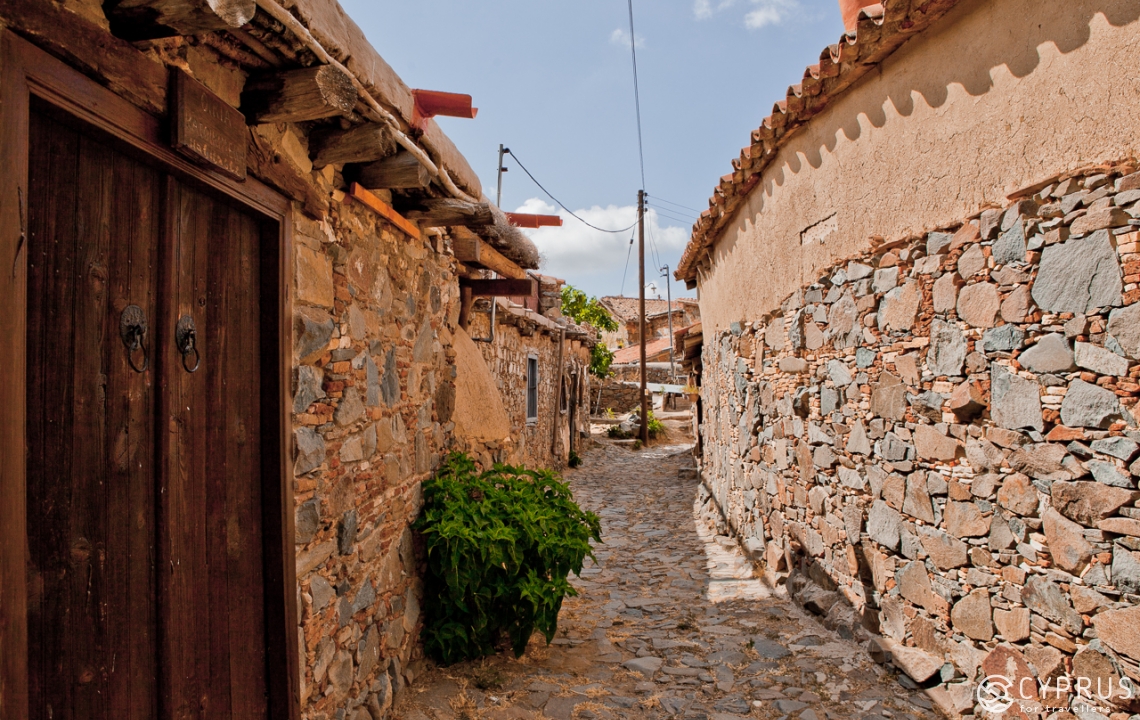
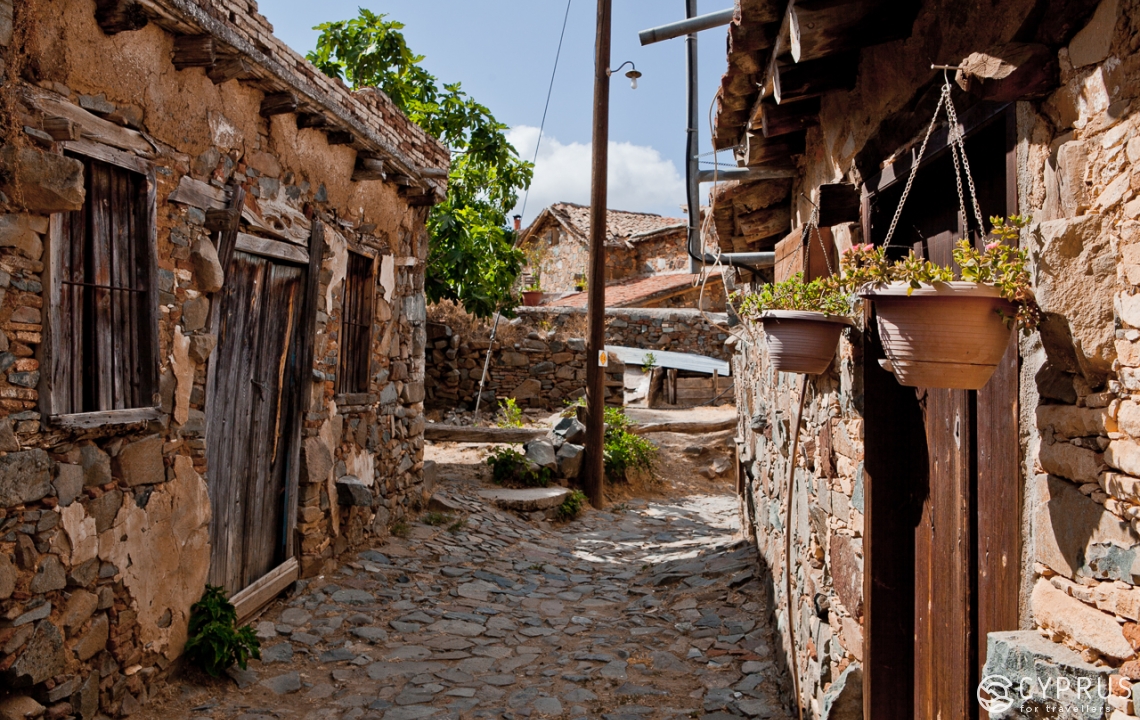
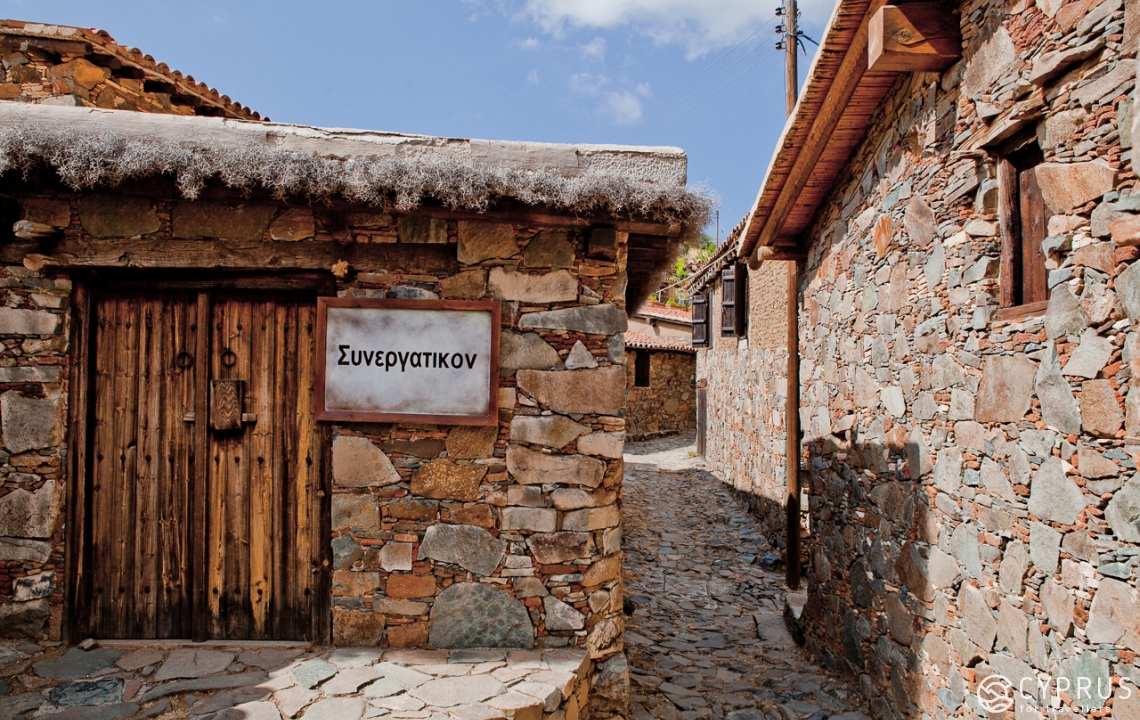
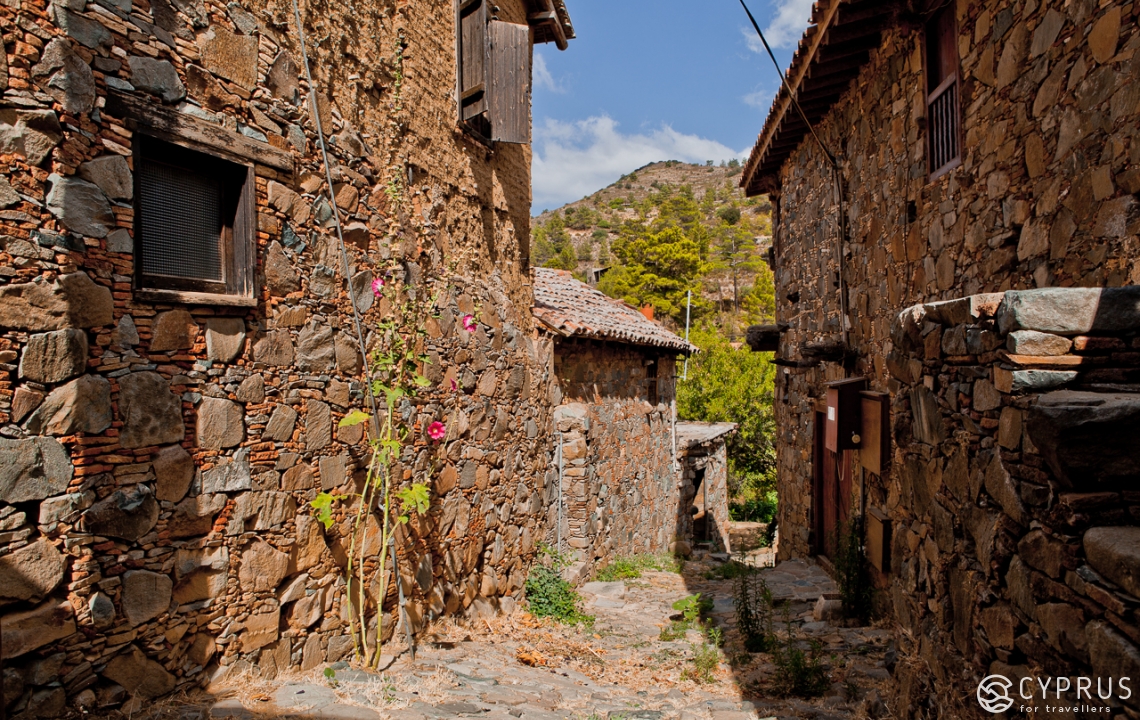
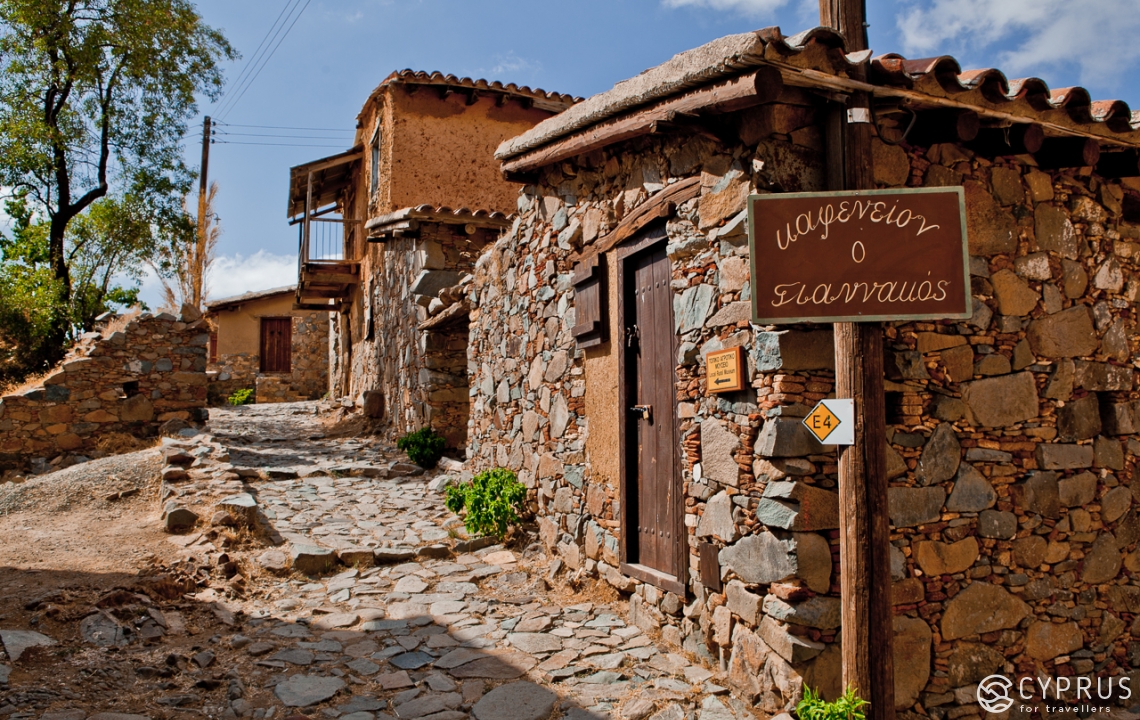
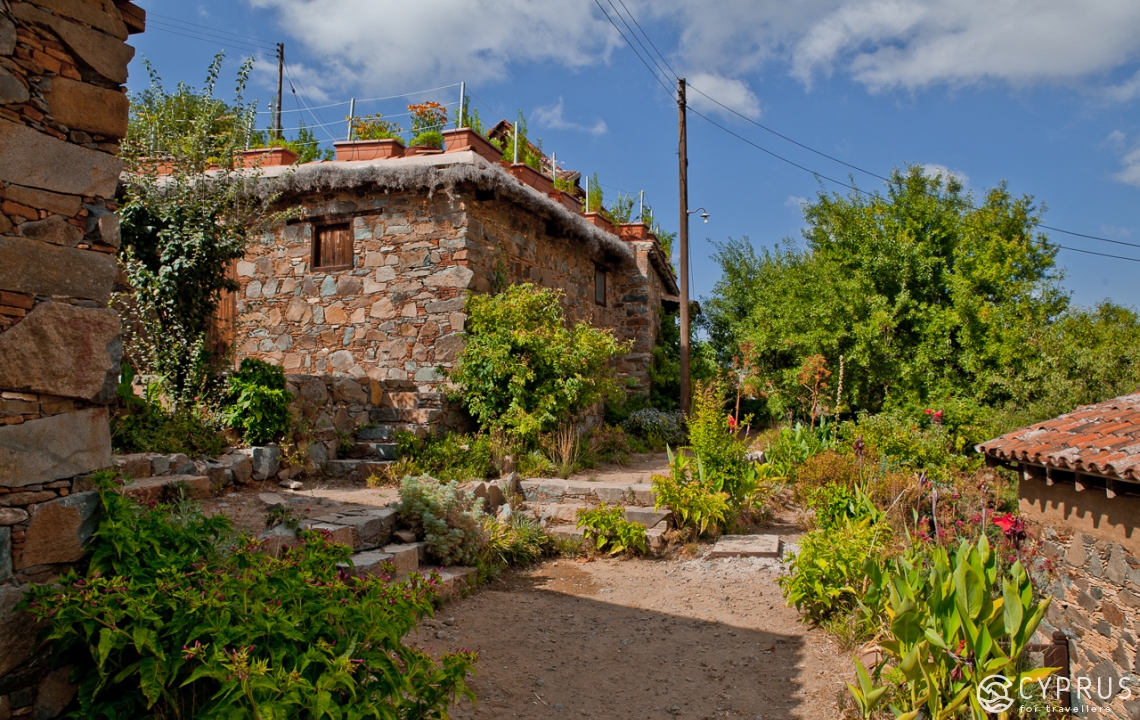
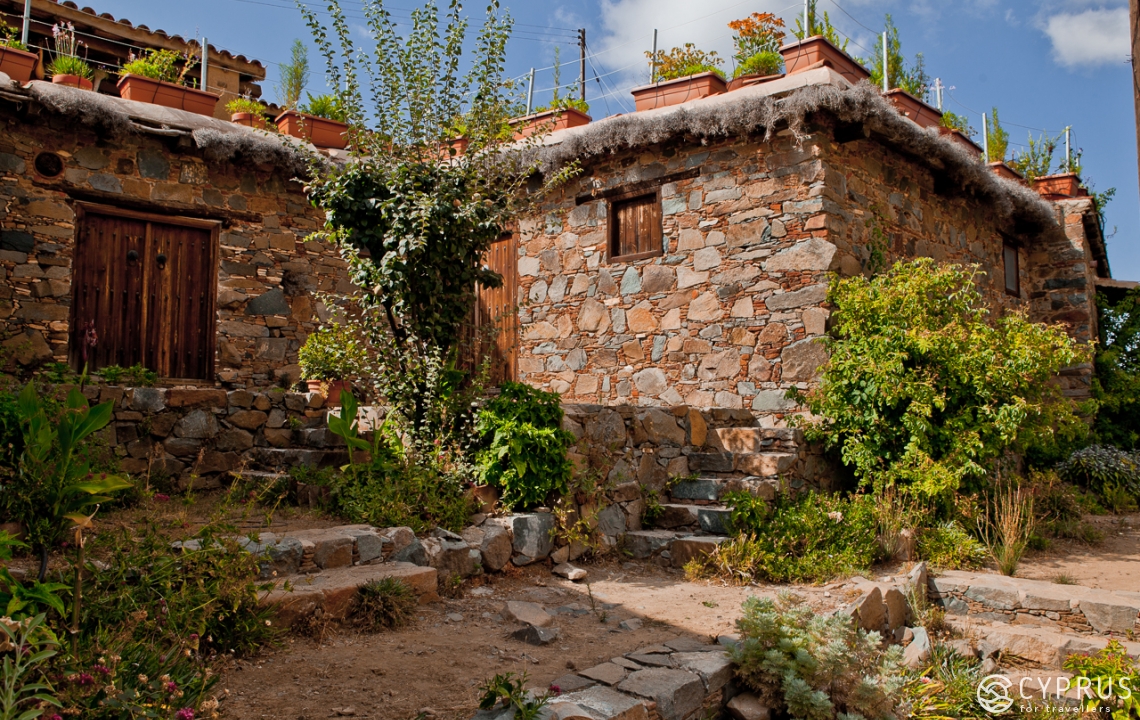
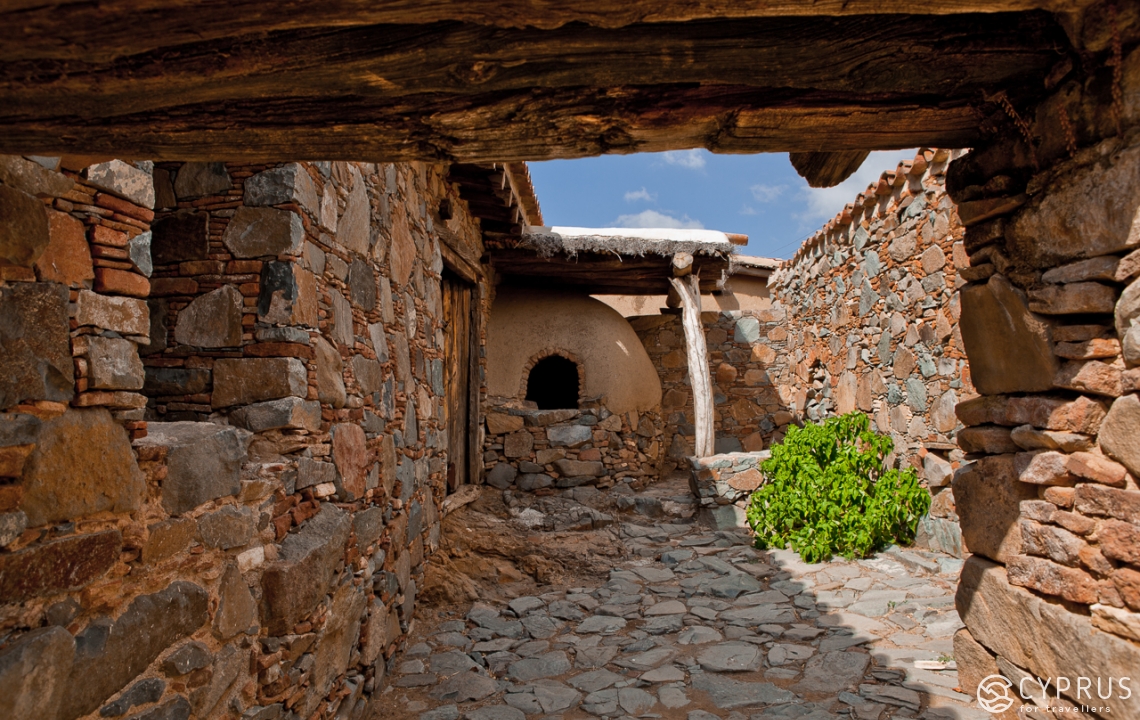
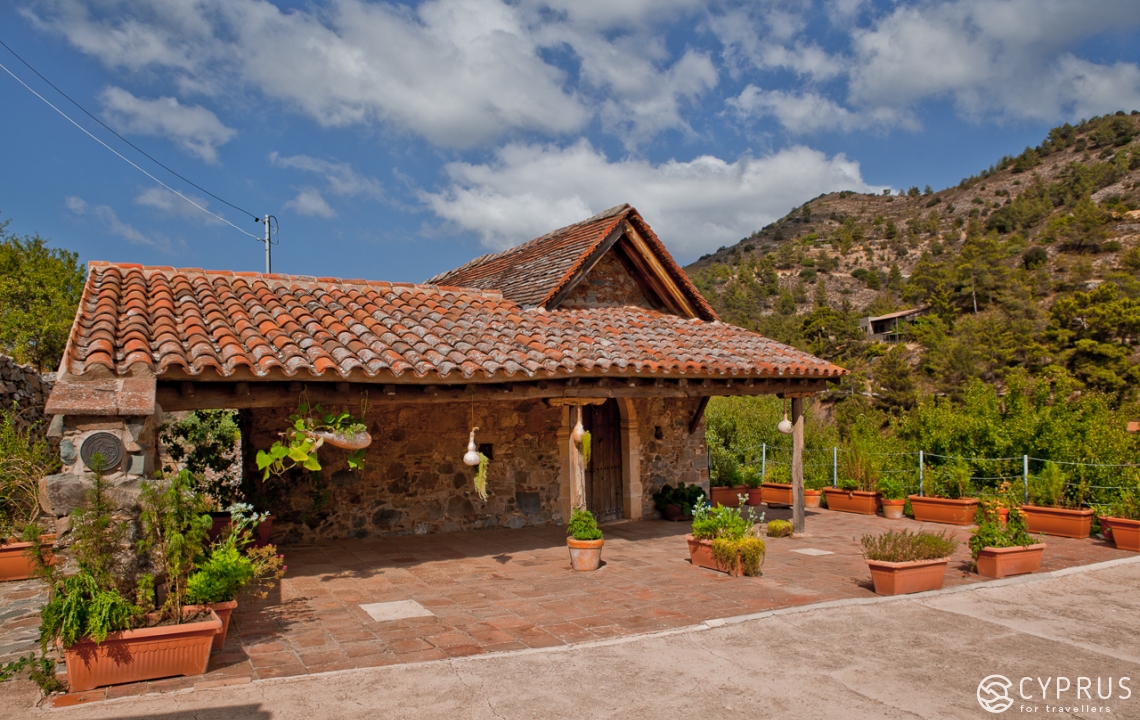
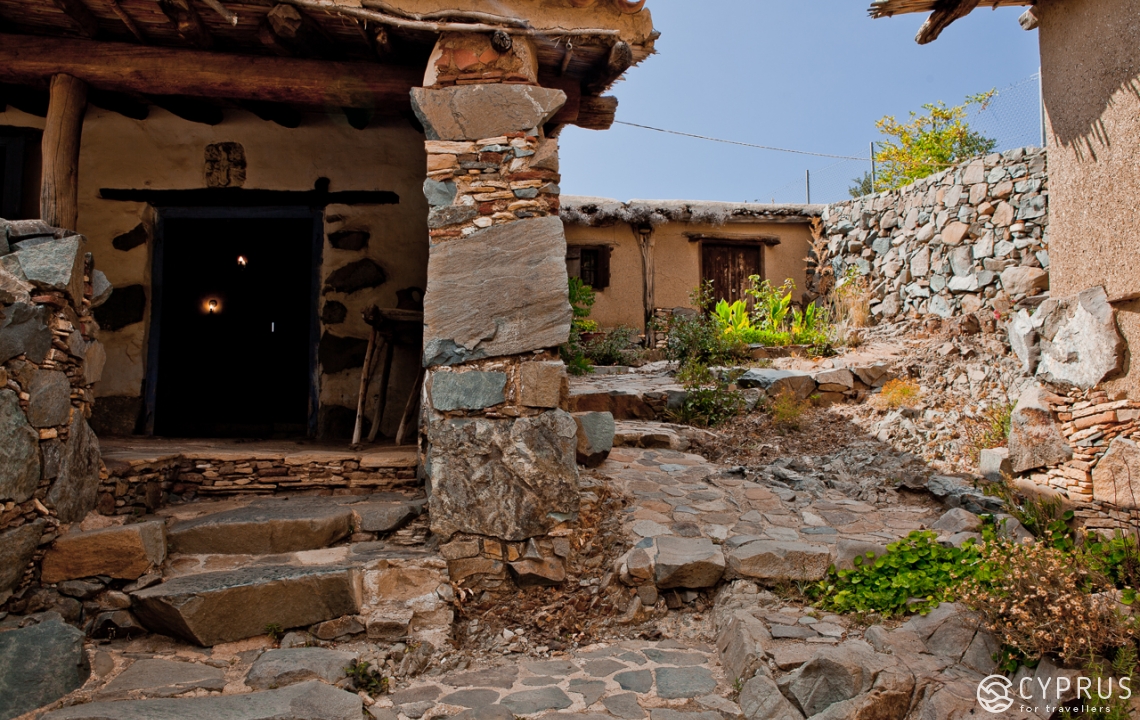
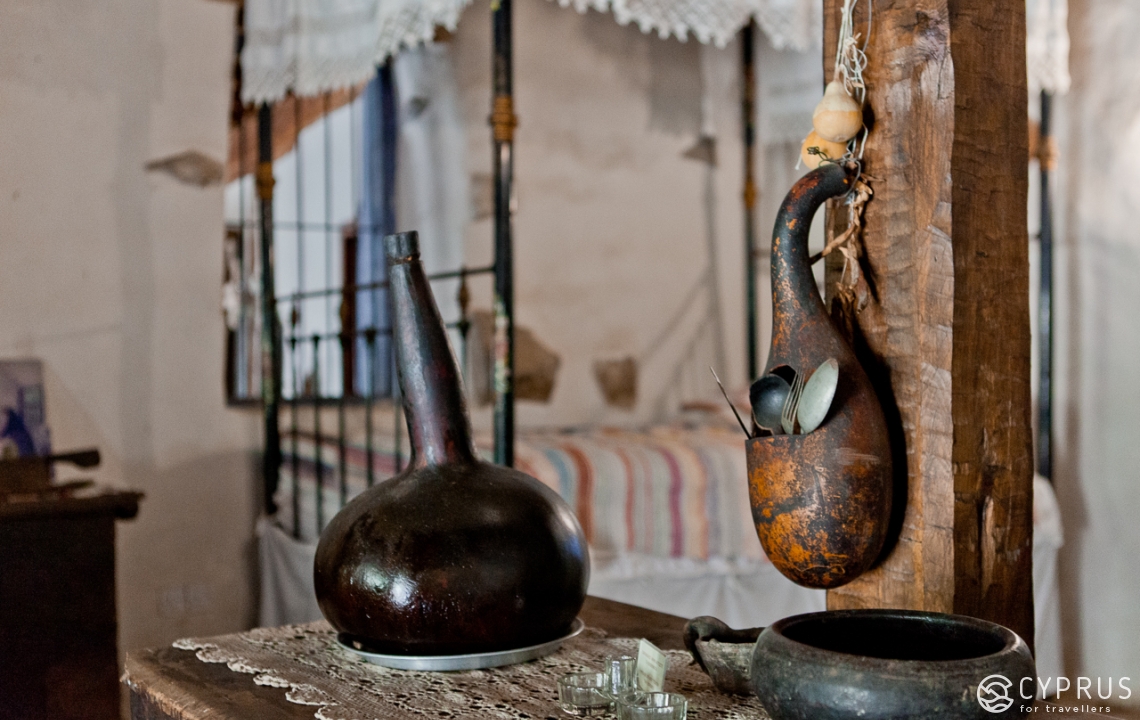
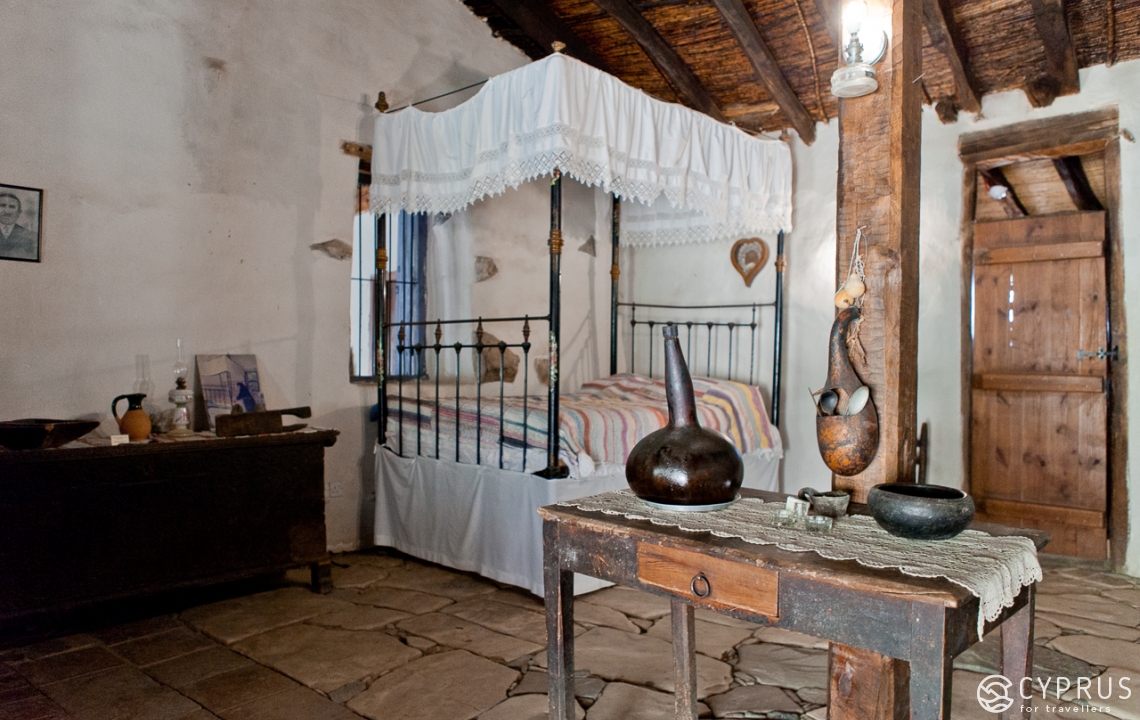
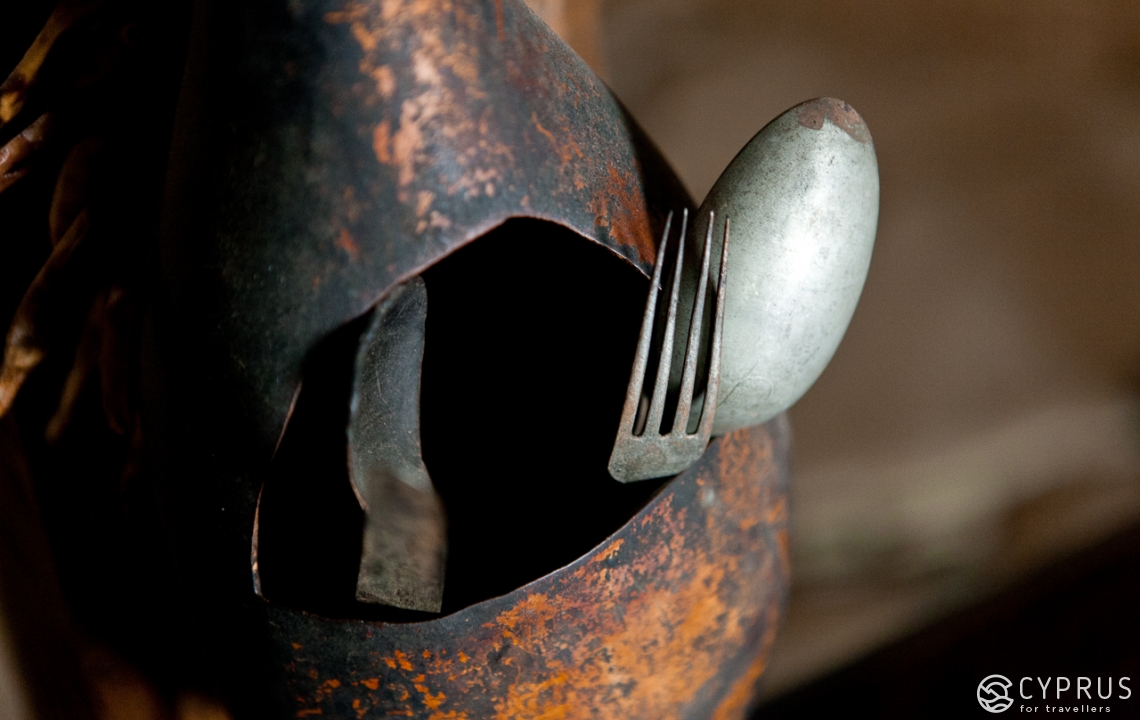
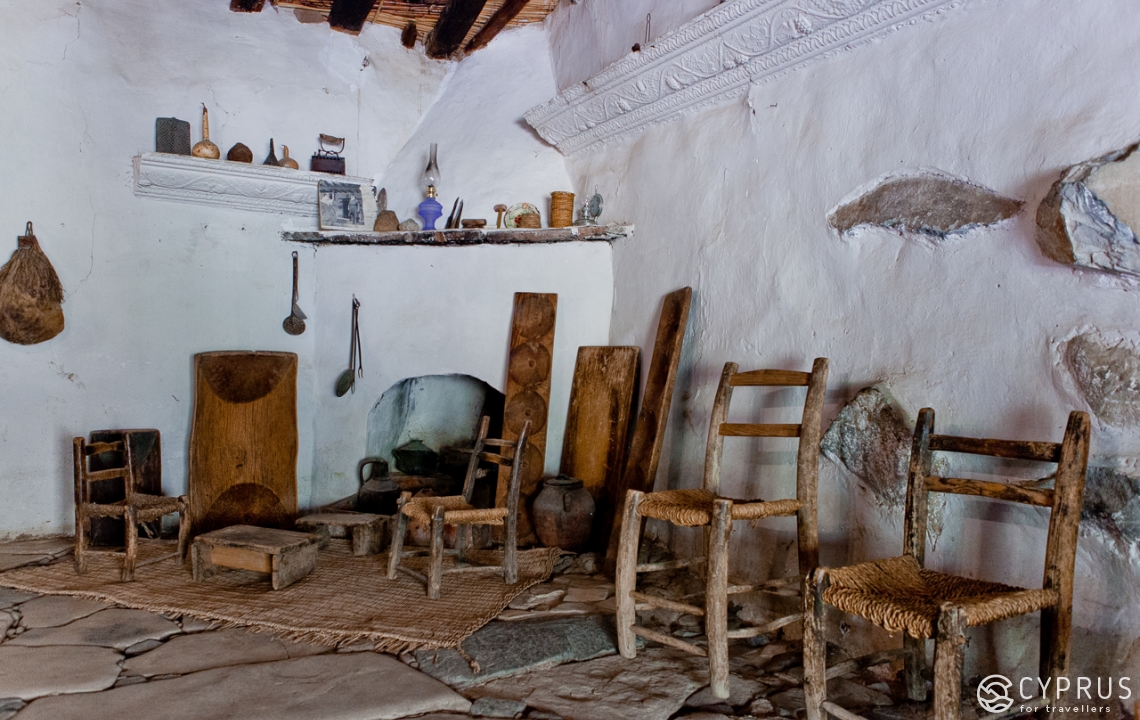
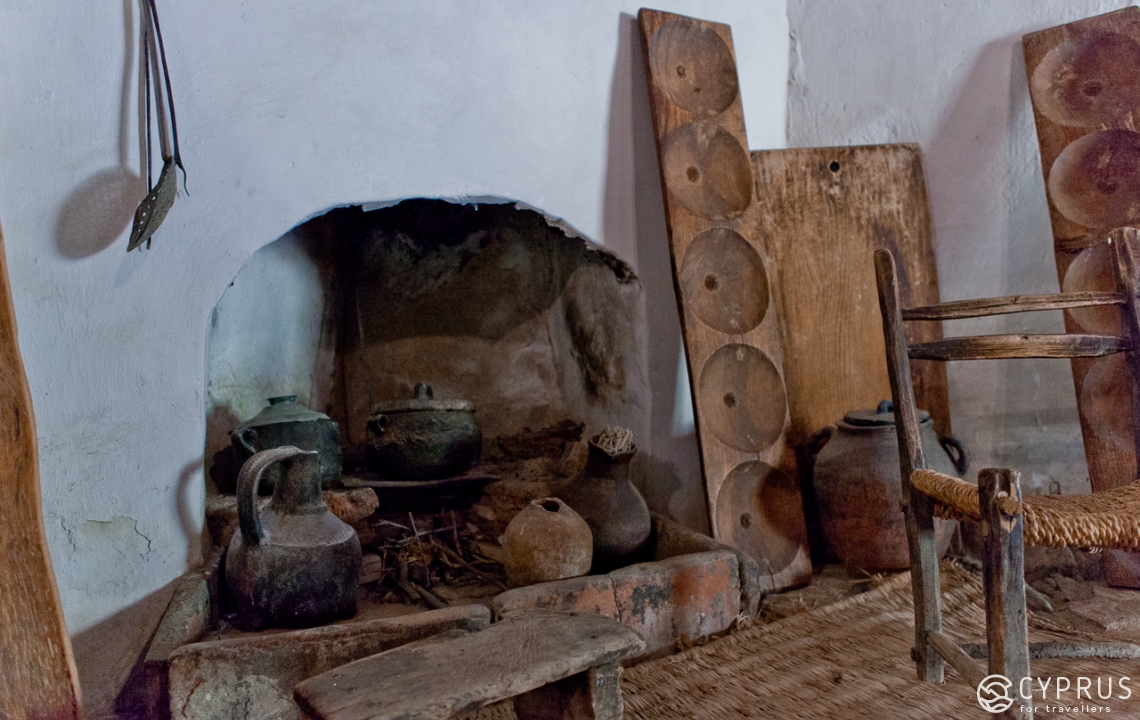
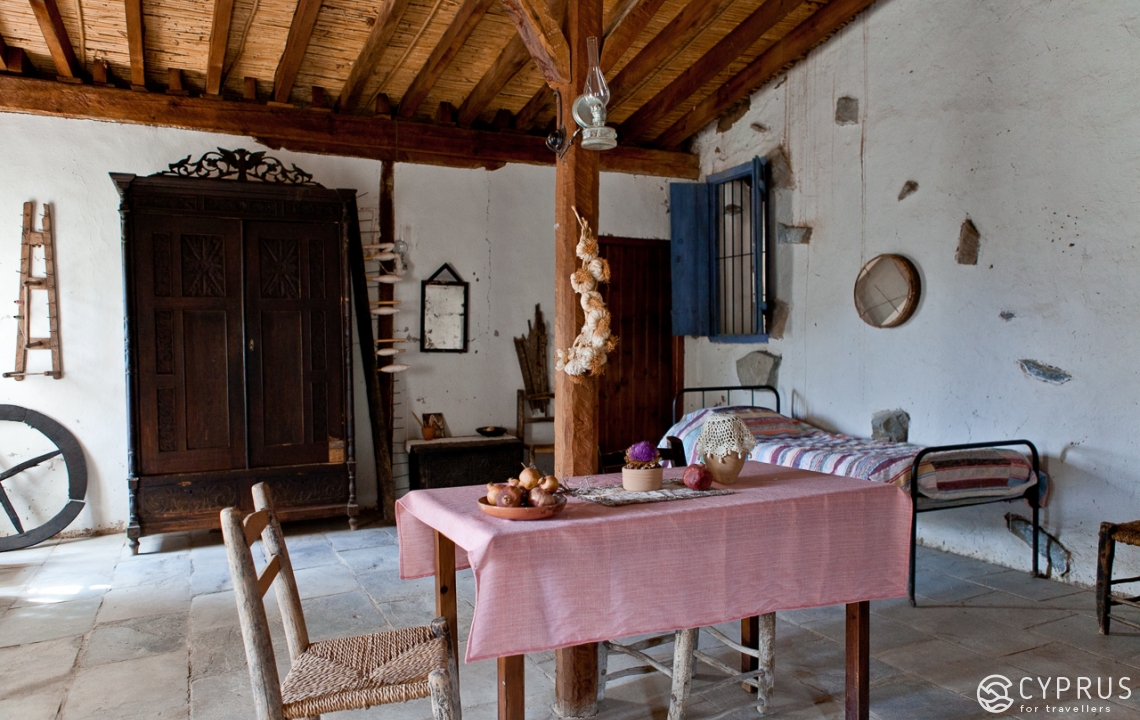
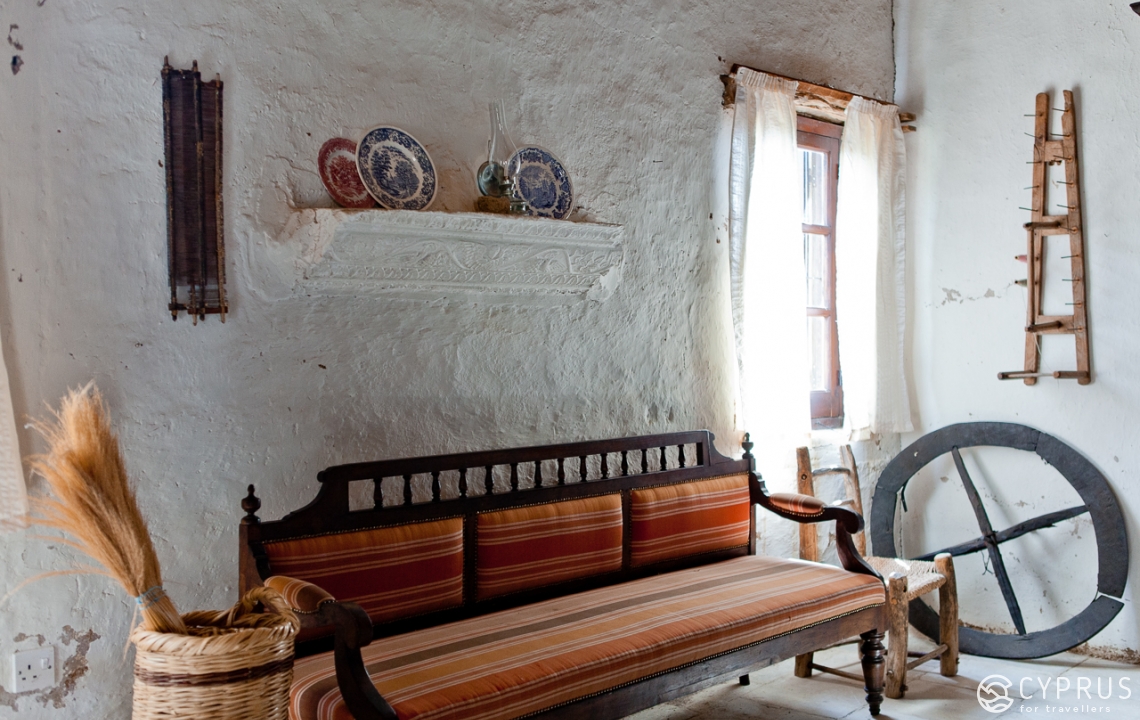
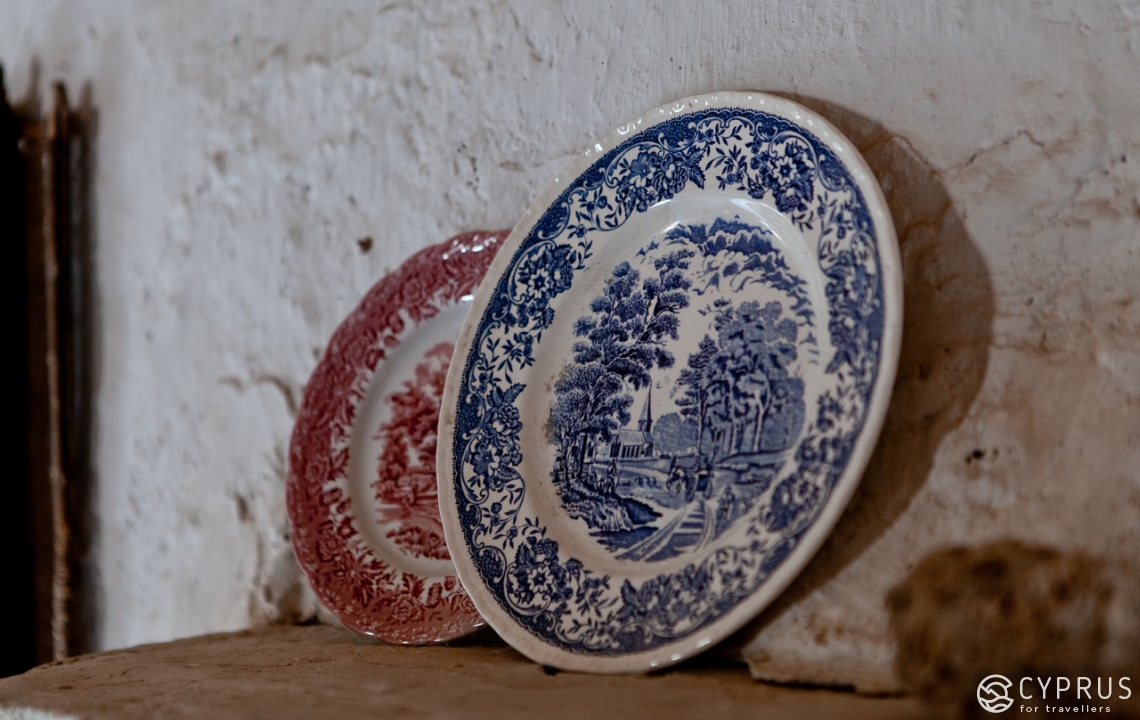
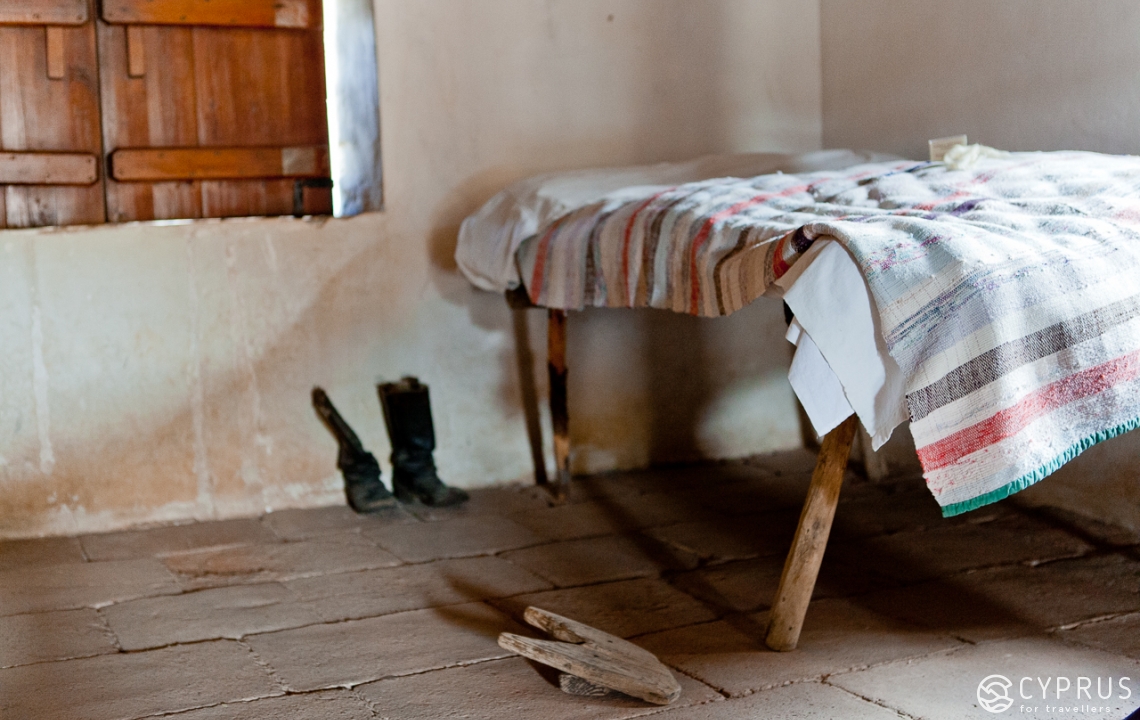
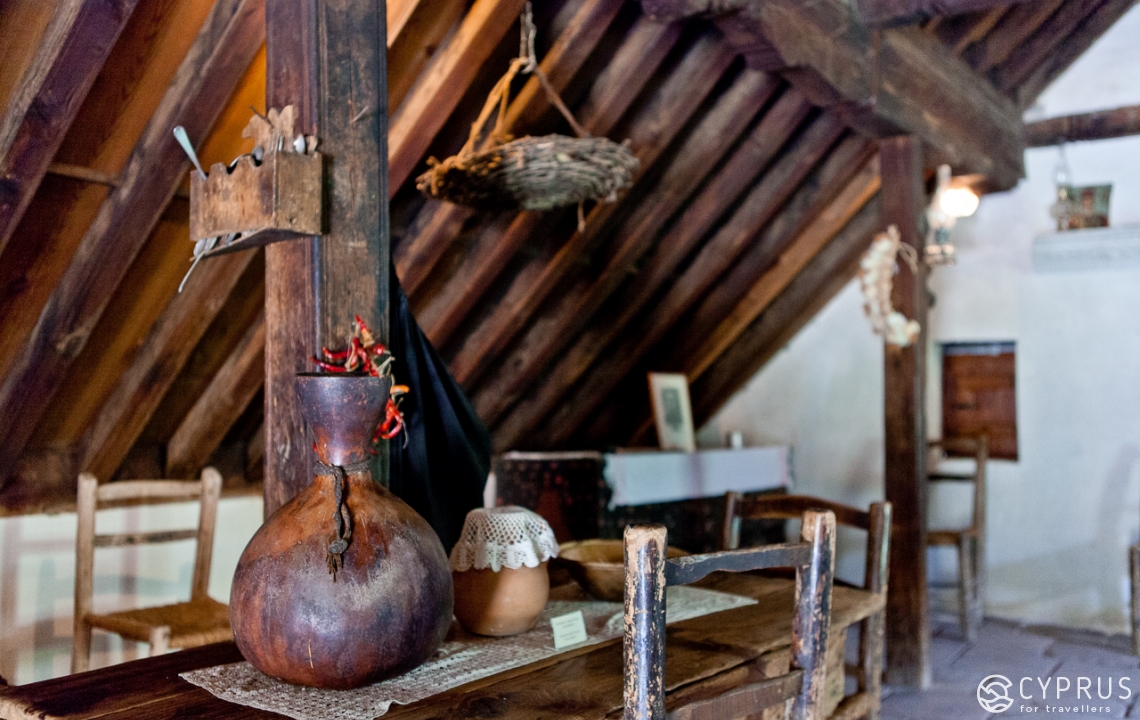
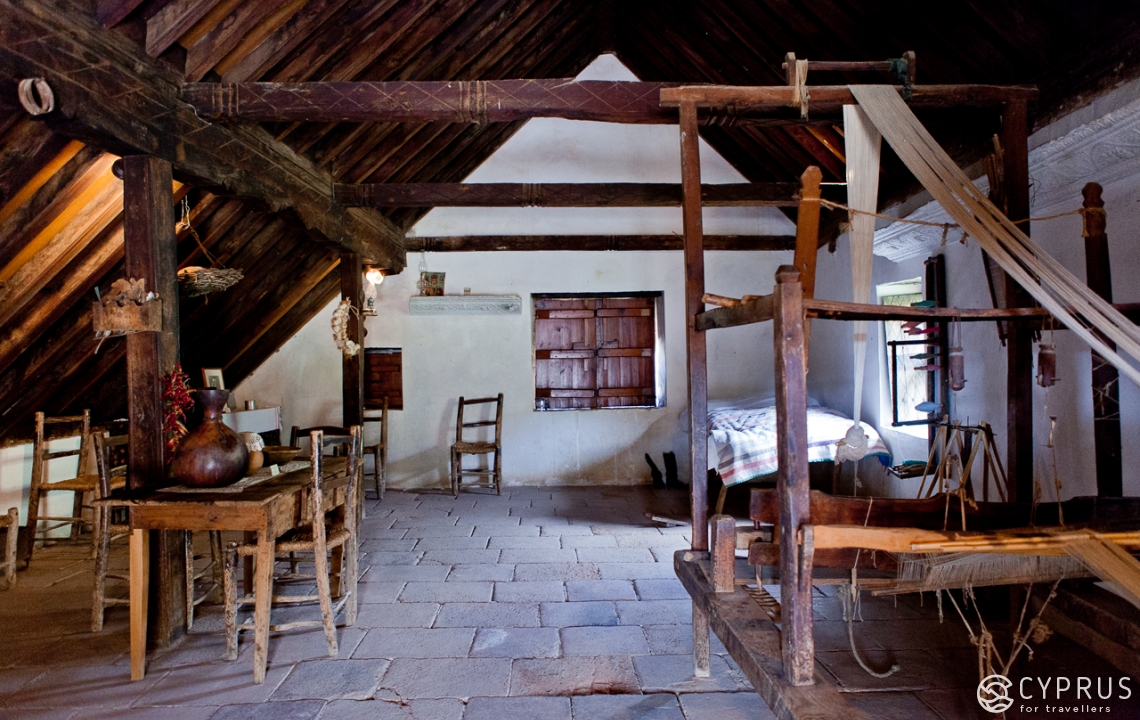
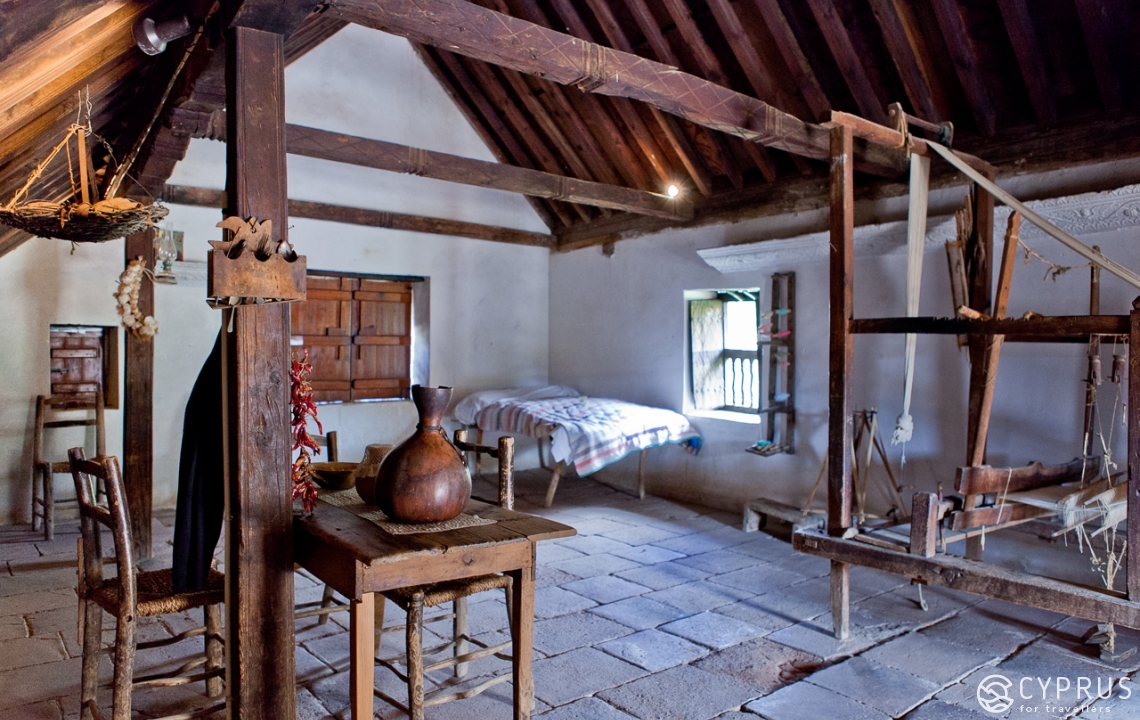
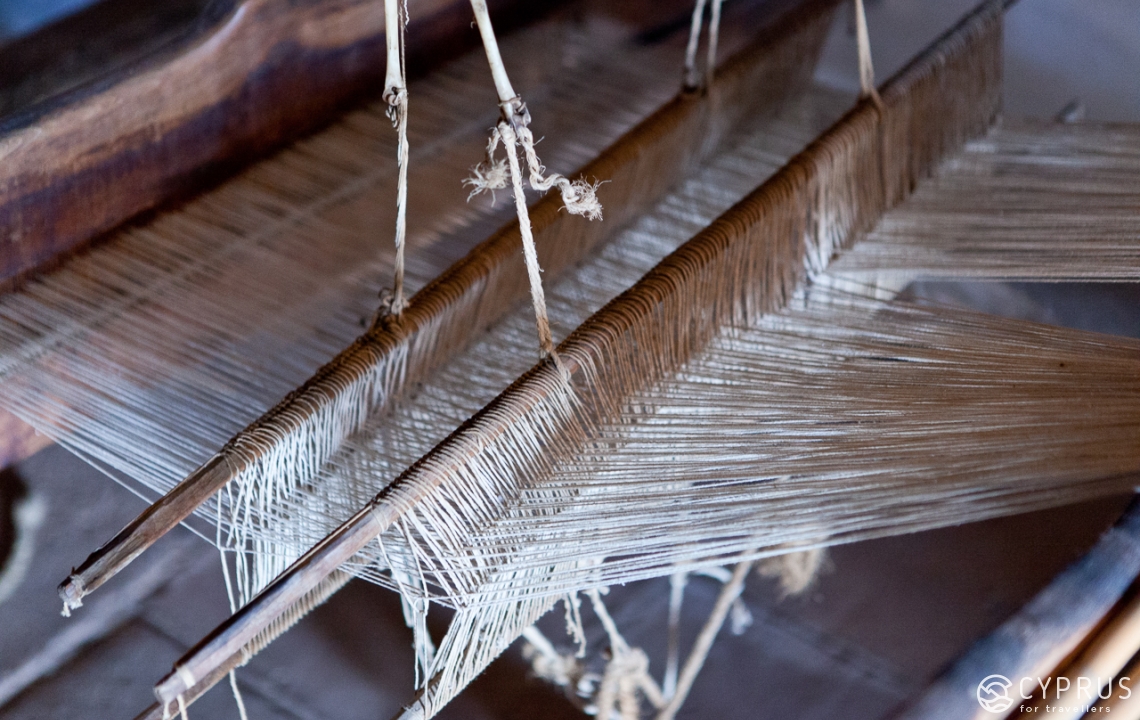
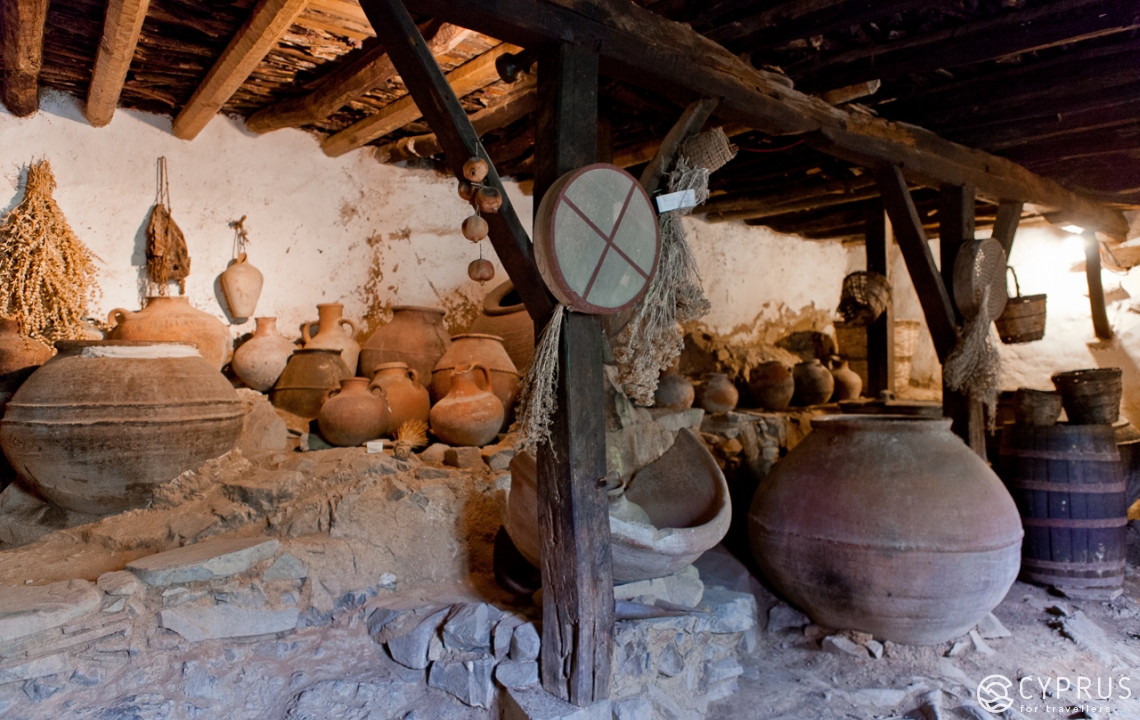
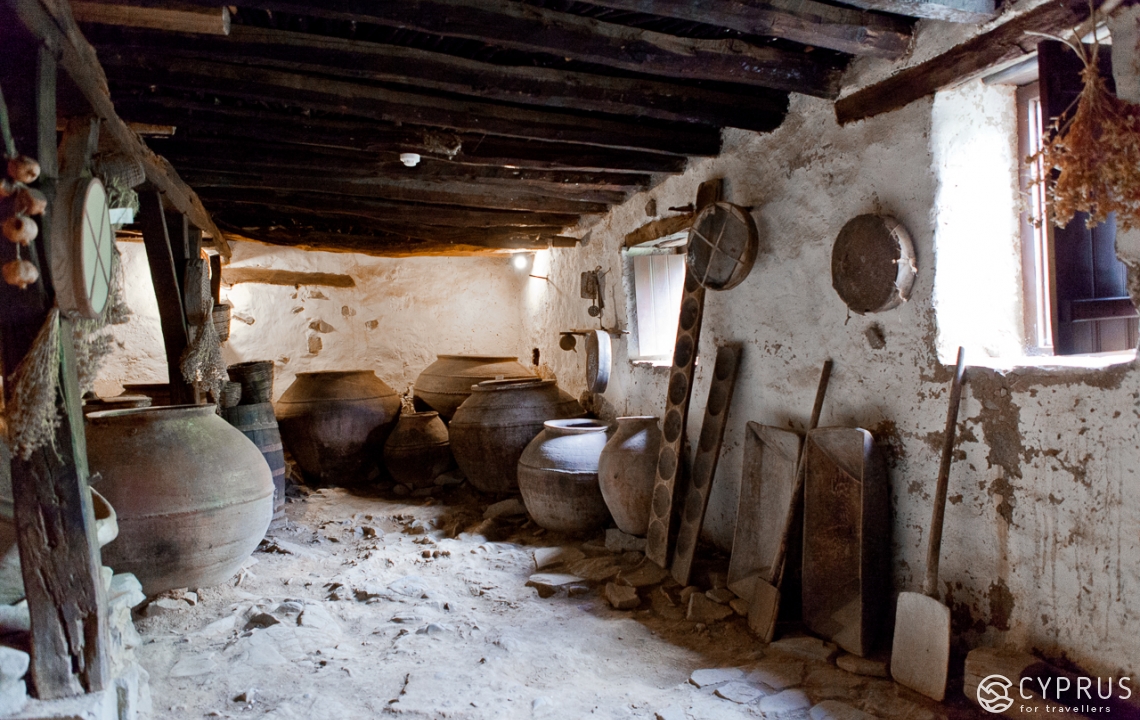
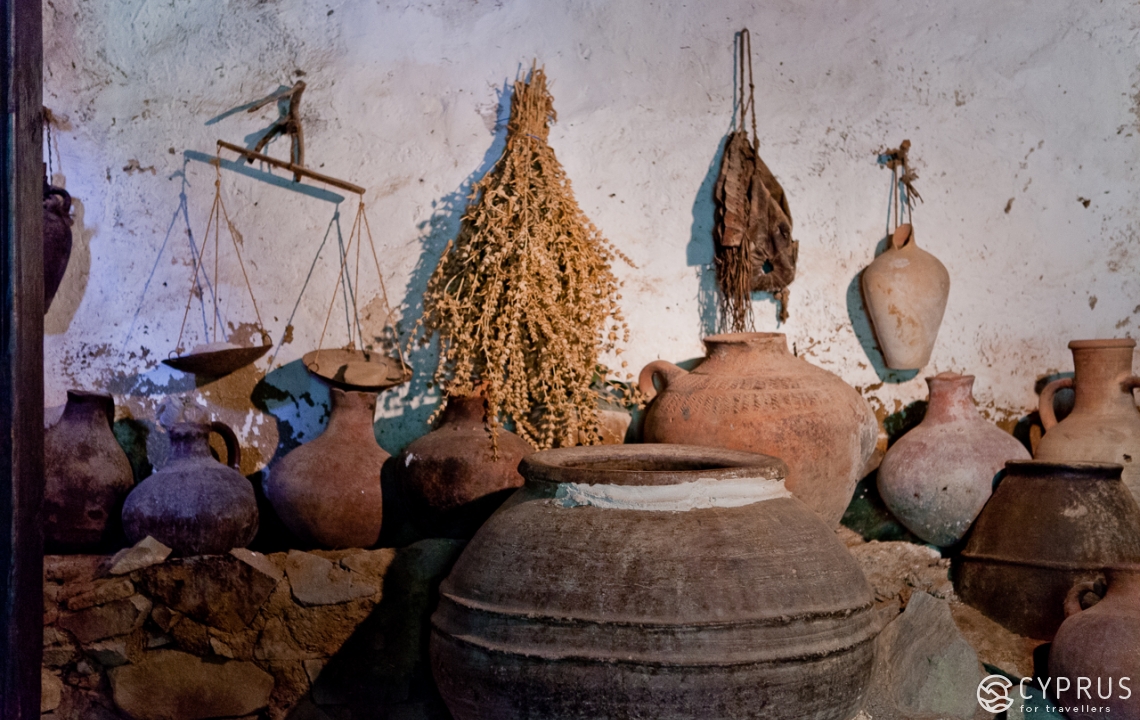
Working hours: every day 8am – 4pm (November – March); 9am – 5pm (April – October).
Telephone : +357 22634731
Entrance: € 2,5
If you walk down the «main road», you will run into the «Yannakos» tavern, which serves delicious and yet inexpensive food (compared to the more popular tourist locations on the island).
Telephone: +357 22633311
According to a sign that hangs on the building, the first floor houses a postal office.
Where to stay:
«Fikardou Boutique Suite» is two minutes away from the center of the village. Every room has a balcony or a terrace.
Telephone: +357 97638838
Getting there:
If you are driving from the direction of Nicosia, pass through Kalo Chorio and then keep driving down Monastiriou Road.
Travel time is approximately 55 minutes.
Buses 100, 157 and 200 run to and from Fikardou. More information here.
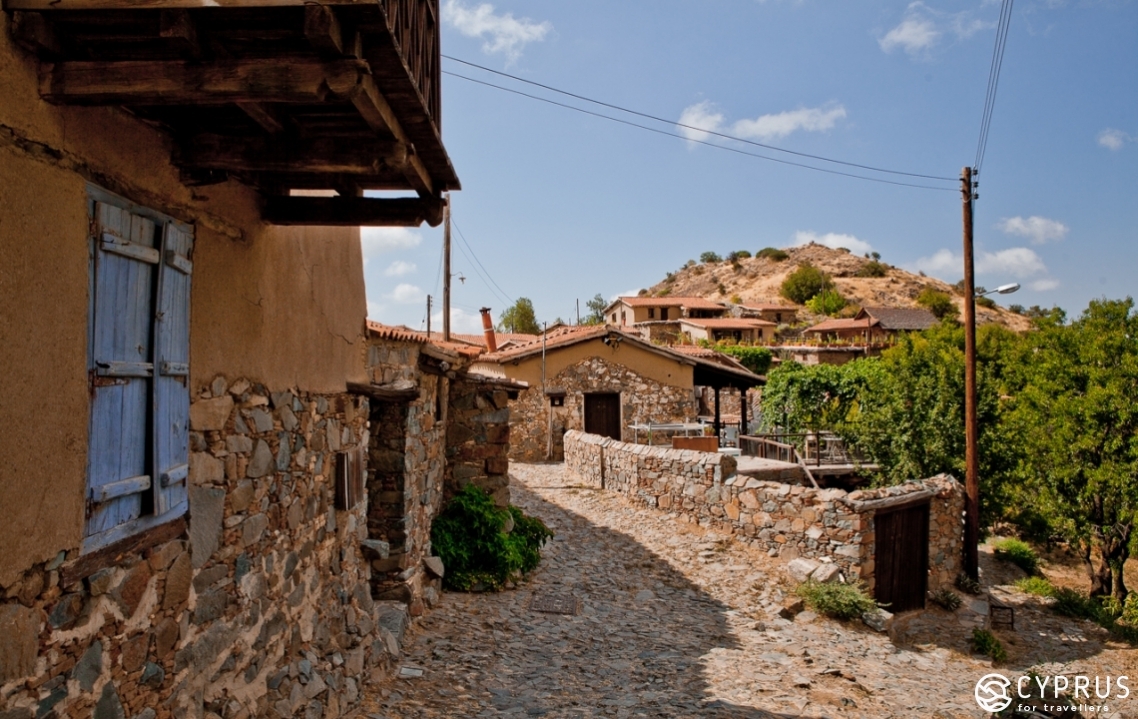
[1] The icon of the Saints is also kept at the Church of Adios Kyprianos and Youstina.
[2] Currently many Gourri natives seek work either in Nicosia or abroad and use their village homes as country houses. There is some real estate for sale.
[3] To learn more recipes with stuffed vegetables, read this and this.
[4] The top floor houses the master bedroom. However, on the day that we were there none of the keys could open the lock and reveal the space. But since most rural bedrooms were decorated in a similar manner, we could easily imagine what the bedroom looked like based on the other ethnographic museums that we saw.
[5] The olive oil press that can be found at the local museum was once used by the grandfather of Ms. Argirula Andreu — our guide around Gouri.
[6] The village is connected not only to Gouri, but also to Klirou, Lazania and Kalo Chorio. The Maheras Monastery is located only 15 minutes away from Fikardou.
[7] Source: Nasa Potapiou: The Fikardou family of Cyprus.
See you soon!

